Cultural treasures Black & White Stock Photos
 PEKING OPERA combines music mime dance and vocal performance Stock Photohttps://www.alamy.com/image-license-details/?v=1https://www.alamy.com/peking-opera-combines-music-mime-dance-and-vocal-performance-image448854114.html
PEKING OPERA combines music mime dance and vocal performance Stock Photohttps://www.alamy.com/image-license-details/?v=1https://www.alamy.com/peking-opera-combines-music-mime-dance-and-vocal-performance-image448854114.htmlRM2H27202–PEKING OPERA combines music mime dance and vocal performance
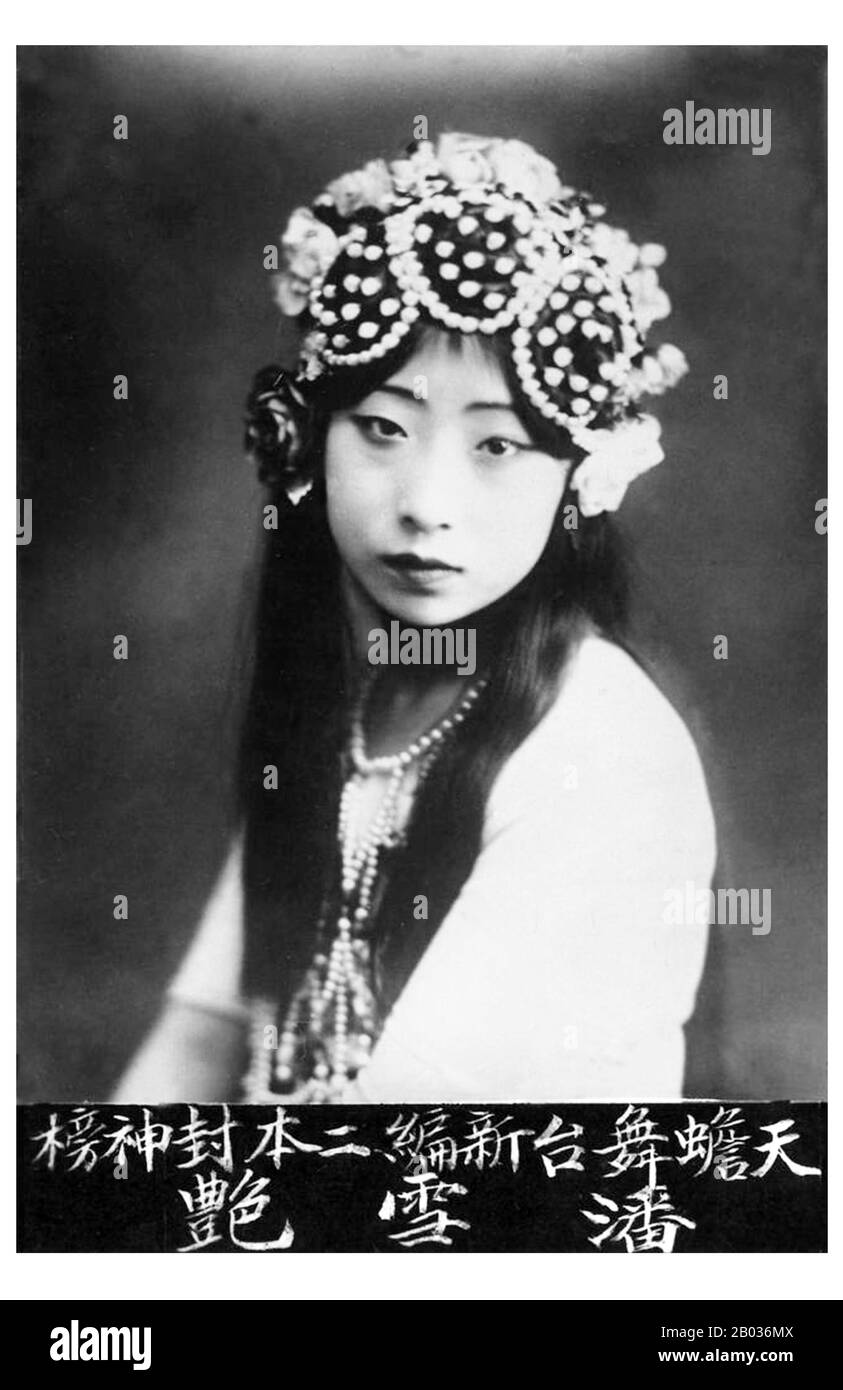 Peking opera or Beijing opera (Jīngju) is a form of traditional Chinese theatre which combines music, vocal performance, mime, dance, and acrobatics. It arose in the late 18th century and became fully developed and recognized by the mid-19th century. The form was extremely popular in the Qing dynasty court and has come to be regarded as one of the cultural treasures of China. Major performance troupes are based in Beijing and Tianjin in the north, and Shanghai in the south. The art form is also preserved in Taiwan, where it is known as Guoju. It has also spread to other countries such as t Stock Photohttps://www.alamy.com/image-license-details/?v=1https://www.alamy.com/peking-opera-or-beijing-opera-jngju-is-a-form-of-traditional-chinese-theatre-which-combines-music-vocal-performance-mime-dance-and-acrobatics-it-arose-in-the-late-18th-century-and-became-fully-developed-and-recognized-by-the-mid-19th-century-the-form-was-extremely-popular-in-the-qing-dynasty-court-and-has-come-to-be-regarded-as-one-of-the-cultural-treasures-of-china-major-performance-troupes-are-based-in-beijing-and-tianjin-in-the-north-and-shanghai-in-the-south-the-art-form-is-also-preserved-in-taiwan-where-it-is-known-as-guoju-it-has-also-spread-to-other-countries-such-as-t-image344278506.html
Peking opera or Beijing opera (Jīngju) is a form of traditional Chinese theatre which combines music, vocal performance, mime, dance, and acrobatics. It arose in the late 18th century and became fully developed and recognized by the mid-19th century. The form was extremely popular in the Qing dynasty court and has come to be regarded as one of the cultural treasures of China. Major performance troupes are based in Beijing and Tianjin in the north, and Shanghai in the south. The art form is also preserved in Taiwan, where it is known as Guoju. It has also spread to other countries such as t Stock Photohttps://www.alamy.com/image-license-details/?v=1https://www.alamy.com/peking-opera-or-beijing-opera-jngju-is-a-form-of-traditional-chinese-theatre-which-combines-music-vocal-performance-mime-dance-and-acrobatics-it-arose-in-the-late-18th-century-and-became-fully-developed-and-recognized-by-the-mid-19th-century-the-form-was-extremely-popular-in-the-qing-dynasty-court-and-has-come-to-be-regarded-as-one-of-the-cultural-treasures-of-china-major-performance-troupes-are-based-in-beijing-and-tianjin-in-the-north-and-shanghai-in-the-south-the-art-form-is-also-preserved-in-taiwan-where-it-is-known-as-guoju-it-has-also-spread-to-other-countries-such-as-t-image344278506.htmlRM2B036MX–Peking opera or Beijing opera (Jīngju) is a form of traditional Chinese theatre which combines music, vocal performance, mime, dance, and acrobatics. It arose in the late 18th century and became fully developed and recognized by the mid-19th century. The form was extremely popular in the Qing dynasty court and has come to be regarded as one of the cultural treasures of China. Major performance troupes are based in Beijing and Tianjin in the north, and Shanghai in the south. The art form is also preserved in Taiwan, where it is known as Guoju. It has also spread to other countries such as t
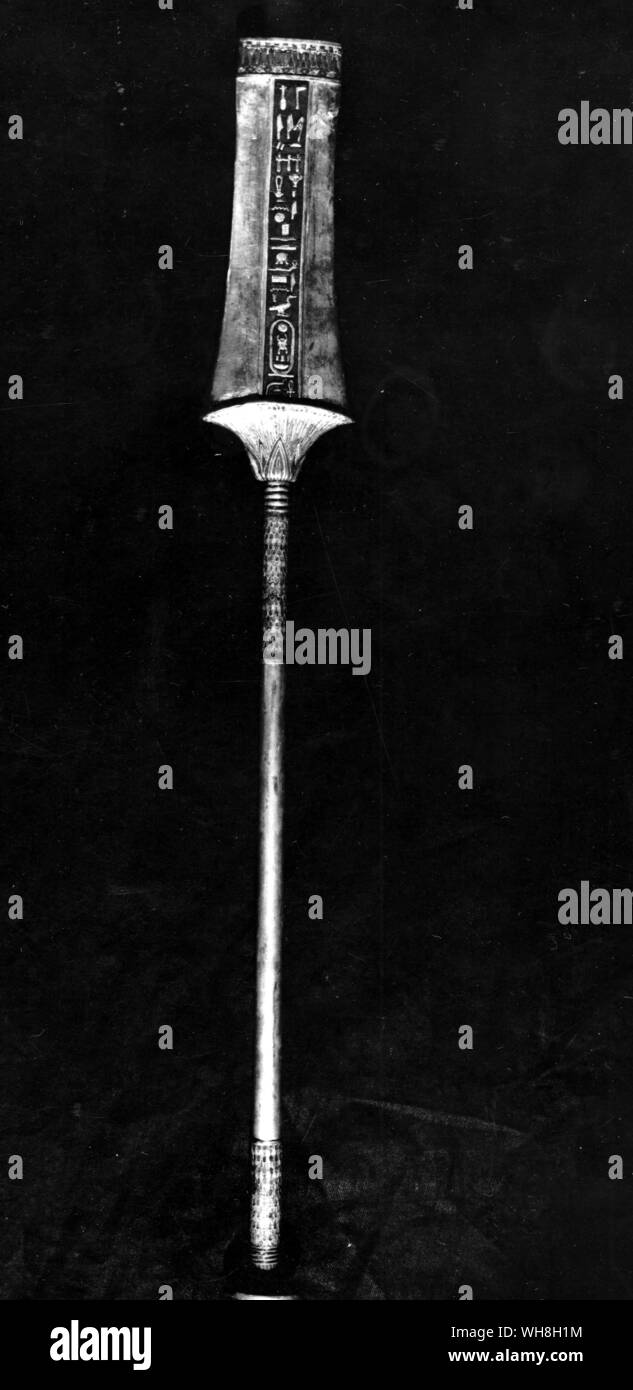 Royal sceptre. The Treasures of Tutankhamen, The Exhibition Catalogue by I E S Edwards, page 135. Stock Photohttps://www.alamy.com/image-license-details/?v=1https://www.alamy.com/royal-sceptre-the-treasures-of-tutankhamen-the-exhibition-catalogue-by-i-e-s-edwards-page-135-image268793664.html
Royal sceptre. The Treasures of Tutankhamen, The Exhibition Catalogue by I E S Edwards, page 135. Stock Photohttps://www.alamy.com/image-license-details/?v=1https://www.alamy.com/royal-sceptre-the-treasures-of-tutankhamen-the-exhibition-catalogue-by-i-e-s-edwards-page-135-image268793664.htmlRMWH8H1M–Royal sceptre. The Treasures of Tutankhamen, The Exhibition Catalogue by I E S Edwards, page 135.
 American soldiers admiring Manet's ?In the Conservatory? that Monuments Men (A special US army cultural recovery unit) inspect some of the thousands of works of art looted by Nazis from private collections within the salt mines of Merker, Germany. 1945 Stock Photohttps://www.alamy.com/image-license-details/?v=1https://www.alamy.com/american-soldiers-admiring-manets-in-the-conservatory-that-monuments-men-a-special-us-army-cultural-recovery-unit-inspect-some-of-the-thousands-of-works-of-art-looted-by-nazis-from-private-collections-within-the-salt-mines-of-merker-germany-1945-image634298593.html
American soldiers admiring Manet's ?In the Conservatory? that Monuments Men (A special US army cultural recovery unit) inspect some of the thousands of works of art looted by Nazis from private collections within the salt mines of Merker, Germany. 1945 Stock Photohttps://www.alamy.com/image-license-details/?v=1https://www.alamy.com/american-soldiers-admiring-manets-in-the-conservatory-that-monuments-men-a-special-us-army-cultural-recovery-unit-inspect-some-of-the-thousands-of-works-of-art-looted-by-nazis-from-private-collections-within-the-salt-mines-of-merker-germany-1945-image634298593.htmlRM2YRXP95–American soldiers admiring Manet's ?In the Conservatory? that Monuments Men (A special US army cultural recovery unit) inspect some of the thousands of works of art looted by Nazis from private collections within the salt mines of Merker, Germany. 1945
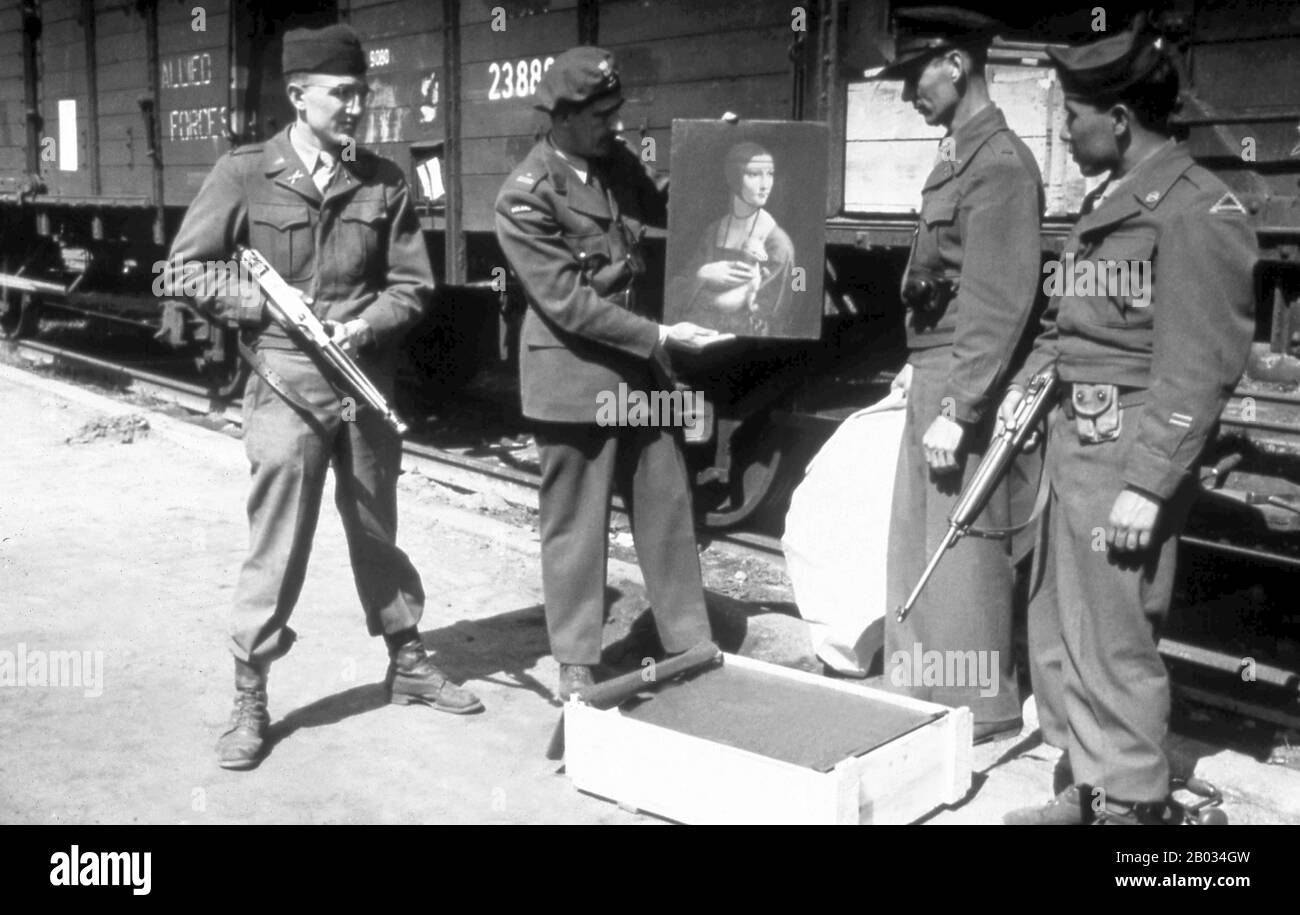 'Nazi plunder' refers to art theft and other items stolen as a result of the organized looting of European countries during the time of the Third Reich by agents acting on behalf of the ruling Nazi Party of Germany. Plundering occurred from 1933 until the end of World War II, although most plunder was acquired during the war. In addition to gold, silver and currency, cultural items of great significance were stolen, including paintings, ceramics, books, and religious treasures. Although most of these items were recovered by agents of the Monuments, Fine Arts, and Archives program (MFAA), affe Stock Photohttps://www.alamy.com/image-license-details/?v=1https://www.alamy.com/nazi-plunder-refers-to-art-theft-and-other-items-stolen-as-a-result-of-the-organized-looting-of-european-countries-during-the-time-of-the-third-reich-by-agents-acting-on-behalf-of-the-ruling-nazi-party-of-germany-plundering-occurred-from-1933-until-the-end-of-world-war-ii-although-most-plunder-was-acquired-during-the-war-in-addition-to-gold-silver-and-currency-cultural-items-of-great-significance-were-stolen-including-paintings-ceramics-books-and-religious-treasures-although-most-of-these-items-were-recovered-by-agents-of-the-monuments-fine-arts-and-archives-program-mfaa-affe-image344276825.html
'Nazi plunder' refers to art theft and other items stolen as a result of the organized looting of European countries during the time of the Third Reich by agents acting on behalf of the ruling Nazi Party of Germany. Plundering occurred from 1933 until the end of World War II, although most plunder was acquired during the war. In addition to gold, silver and currency, cultural items of great significance were stolen, including paintings, ceramics, books, and religious treasures. Although most of these items were recovered by agents of the Monuments, Fine Arts, and Archives program (MFAA), affe Stock Photohttps://www.alamy.com/image-license-details/?v=1https://www.alamy.com/nazi-plunder-refers-to-art-theft-and-other-items-stolen-as-a-result-of-the-organized-looting-of-european-countries-during-the-time-of-the-third-reich-by-agents-acting-on-behalf-of-the-ruling-nazi-party-of-germany-plundering-occurred-from-1933-until-the-end-of-world-war-ii-although-most-plunder-was-acquired-during-the-war-in-addition-to-gold-silver-and-currency-cultural-items-of-great-significance-were-stolen-including-paintings-ceramics-books-and-religious-treasures-although-most-of-these-items-were-recovered-by-agents-of-the-monuments-fine-arts-and-archives-program-mfaa-affe-image344276825.htmlRM2B034GW–'Nazi plunder' refers to art theft and other items stolen as a result of the organized looting of European countries during the time of the Third Reich by agents acting on behalf of the ruling Nazi Party of Germany. Plundering occurred from 1933 until the end of World War II, although most plunder was acquired during the war. In addition to gold, silver and currency, cultural items of great significance were stolen, including paintings, ceramics, books, and religious treasures. Although most of these items were recovered by agents of the Monuments, Fine Arts, and Archives program (MFAA), affe
 New York, NY, USA. 7th Jan, 2020. His Excellency António Guterres, UN Secretary-General of the United Nations at the exhibition opening 'Recovered Treasures: The Art of Saving Art presented by the Carabineri Command for the Protection of Cultural Heritage held at the United Nations Headquarters on January 7, 2020 in New York City. Credit: Mpi43/Media Punch/Alamy Live News Stock Photohttps://www.alamy.com/image-license-details/?v=1https://www.alamy.com/new-york-ny-usa-7th-jan-2020-his-excellency-antnio-guterres-un-secretary-general-of-the-united-nations-at-the-exhibition-opening-recovered-treasures-the-art-of-saving-art-presented-by-the-carabineri-command-for-the-protection-of-cultural-heritage-held-at-the-united-nations-headquarters-on-january-7-2020-in-new-york-city-credit-mpi43media-punchalamy-live-news-image338855483.html
New York, NY, USA. 7th Jan, 2020. His Excellency António Guterres, UN Secretary-General of the United Nations at the exhibition opening 'Recovered Treasures: The Art of Saving Art presented by the Carabineri Command for the Protection of Cultural Heritage held at the United Nations Headquarters on January 7, 2020 in New York City. Credit: Mpi43/Media Punch/Alamy Live News Stock Photohttps://www.alamy.com/image-license-details/?v=1https://www.alamy.com/new-york-ny-usa-7th-jan-2020-his-excellency-antnio-guterres-un-secretary-general-of-the-united-nations-at-the-exhibition-opening-recovered-treasures-the-art-of-saving-art-presented-by-the-carabineri-command-for-the-protection-of-cultural-heritage-held-at-the-united-nations-headquarters-on-january-7-2020-in-new-york-city-credit-mpi43media-punchalamy-live-news-image338855483.htmlRM2AK85HF–New York, NY, USA. 7th Jan, 2020. His Excellency António Guterres, UN Secretary-General of the United Nations at the exhibition opening 'Recovered Treasures: The Art of Saving Art presented by the Carabineri Command for the Protection of Cultural Heritage held at the United Nations Headquarters on January 7, 2020 in New York City. Credit: Mpi43/Media Punch/Alamy Live News
 'Nazi plunder' refers to art theft and other items stolen as a result of the organized looting of European countries during the time of the Third Reich by agents acting on behalf of the ruling Nazi Party of Germany. Plundering occurred from 1933 until the end of World War II, although most plunder was acquired during the war. In addition to gold, silver and currency, cultural items of great significance were stolen, including paintings, ceramics, books, and religious treasures. Although most of these items were recovered by agents of the Monuments, Fine Arts, and Archives program (MFAA), affe Stock Photohttps://www.alamy.com/image-license-details/?v=1https://www.alamy.com/nazi-plunder-refers-to-art-theft-and-other-items-stolen-as-a-result-of-the-organized-looting-of-european-countries-during-the-time-of-the-third-reich-by-agents-acting-on-behalf-of-the-ruling-nazi-party-of-germany-plundering-occurred-from-1933-until-the-end-of-world-war-ii-although-most-plunder-was-acquired-during-the-war-in-addition-to-gold-silver-and-currency-cultural-items-of-great-significance-were-stolen-including-paintings-ceramics-books-and-religious-treasures-although-most-of-these-items-were-recovered-by-agents-of-the-monuments-fine-arts-and-archives-program-mfaa-affe-image344276819.html
'Nazi plunder' refers to art theft and other items stolen as a result of the organized looting of European countries during the time of the Third Reich by agents acting on behalf of the ruling Nazi Party of Germany. Plundering occurred from 1933 until the end of World War II, although most plunder was acquired during the war. In addition to gold, silver and currency, cultural items of great significance were stolen, including paintings, ceramics, books, and religious treasures. Although most of these items were recovered by agents of the Monuments, Fine Arts, and Archives program (MFAA), affe Stock Photohttps://www.alamy.com/image-license-details/?v=1https://www.alamy.com/nazi-plunder-refers-to-art-theft-and-other-items-stolen-as-a-result-of-the-organized-looting-of-european-countries-during-the-time-of-the-third-reich-by-agents-acting-on-behalf-of-the-ruling-nazi-party-of-germany-plundering-occurred-from-1933-until-the-end-of-world-war-ii-although-most-plunder-was-acquired-during-the-war-in-addition-to-gold-silver-and-currency-cultural-items-of-great-significance-were-stolen-including-paintings-ceramics-books-and-religious-treasures-although-most-of-these-items-were-recovered-by-agents-of-the-monuments-fine-arts-and-archives-program-mfaa-affe-image344276819.htmlRM2B034GK–'Nazi plunder' refers to art theft and other items stolen as a result of the organized looting of European countries during the time of the Third Reich by agents acting on behalf of the ruling Nazi Party of Germany. Plundering occurred from 1933 until the end of World War II, although most plunder was acquired during the war. In addition to gold, silver and currency, cultural items of great significance were stolen, including paintings, ceramics, books, and religious treasures. Although most of these items were recovered by agents of the Monuments, Fine Arts, and Archives program (MFAA), affe
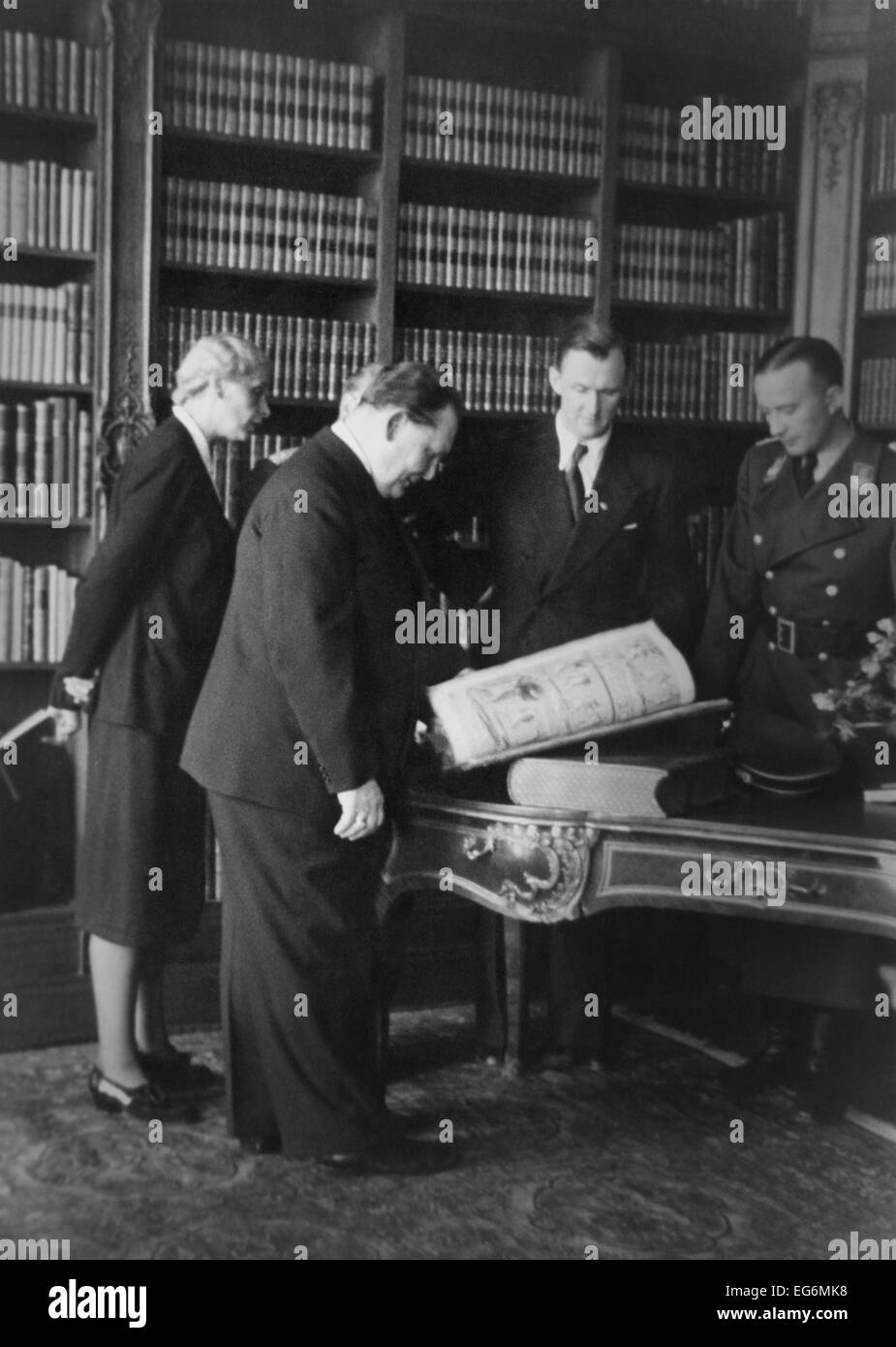 Hermann Goering at 'Einsatzstab Rosenberg' headquarters in Paris, France. Alfred Rosenberg is in uniform next to art historian Stock Photohttps://www.alamy.com/image-license-details/?v=1https://www.alamy.com/stock-photo-hermann-goering-at-einsatzstab-rosenberg-headquarters-in-paris-france-78823900.html
Hermann Goering at 'Einsatzstab Rosenberg' headquarters in Paris, France. Alfred Rosenberg is in uniform next to art historian Stock Photohttps://www.alamy.com/image-license-details/?v=1https://www.alamy.com/stock-photo-hermann-goering-at-einsatzstab-rosenberg-headquarters-in-paris-france-78823900.htmlRMEG6MK8–Hermann Goering at 'Einsatzstab Rosenberg' headquarters in Paris, France. Alfred Rosenberg is in uniform next to art historian
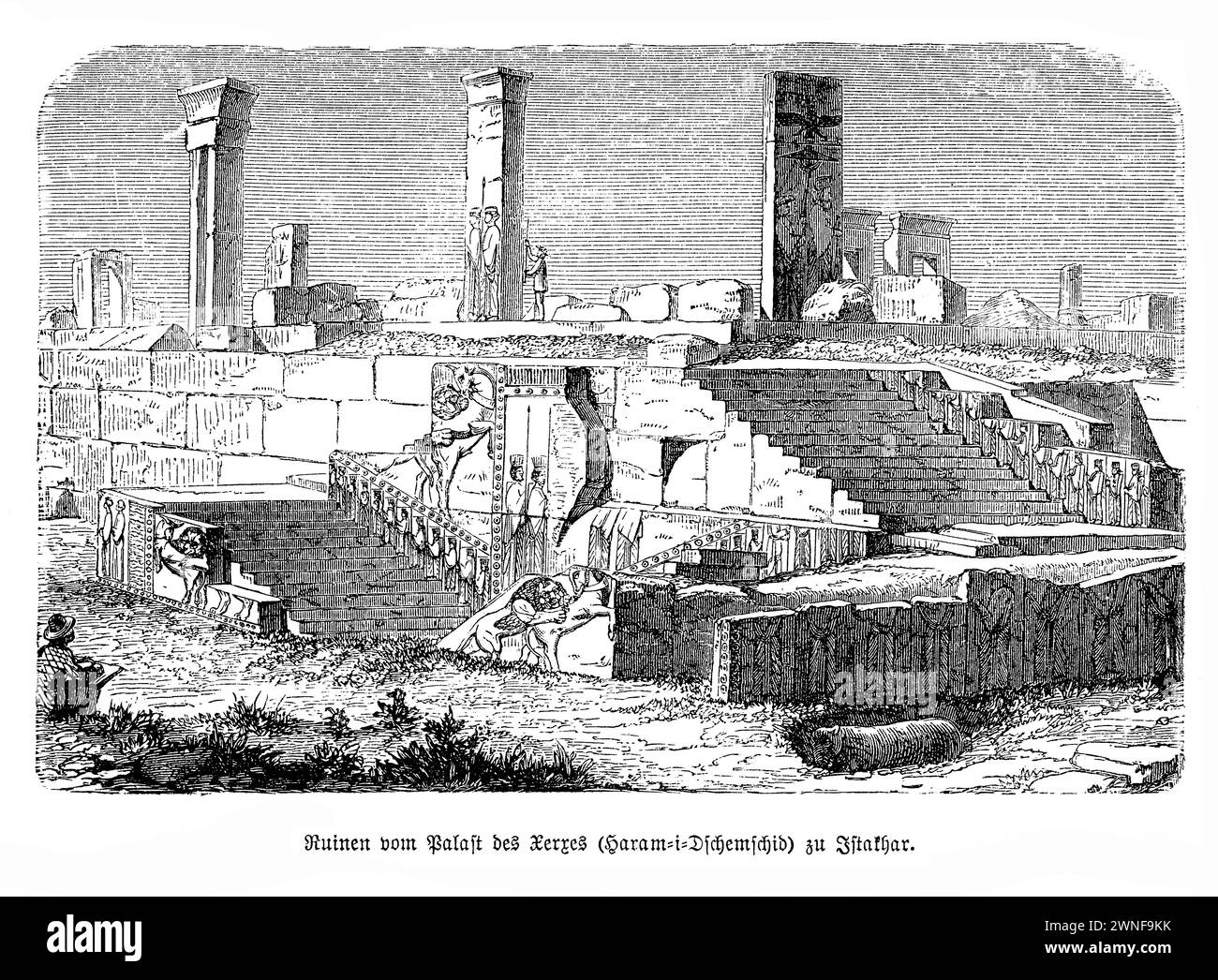 Palace of Xerxes ruins at Persepolis. Among the ancient splendors of Persepolis, the ruins of the Palace of Xerxes stand as a haunting reminder of the Achaemenid Empire's might and architectural ingenuity. Once the heart of a sprawling complex designed to showcase the glory of Xerxes the Great, these ruins now lay silent, their stones whispering tales of past grandeur and solemn ceremonies. The palace, with its vast halls and intricate reliefs, was a marvel of ancient engineering and artistry, reflecting the cosmopolitan spirit of its era. Stock Photohttps://www.alamy.com/image-license-details/?v=1https://www.alamy.com/palace-of-xerxes-ruins-at-persepolis-among-the-ancient-splendors-of-persepolis-the-ruins-of-the-palace-of-xerxes-stand-as-a-haunting-reminder-of-the-achaemenid-empires-might-and-architectural-ingenuity-once-the-heart-of-a-sprawling-complex-designed-to-showcase-the-glory-of-xerxes-the-great-these-ruins-now-lay-silent-their-stones-whispering-tales-of-past-grandeur-and-solemn-ceremonies-the-palace-with-its-vast-halls-and-intricate-reliefs-was-a-marvel-of-ancient-engineering-and-artistry-reflecting-the-cosmopolitan-spirit-of-its-era-image598397175.html
Palace of Xerxes ruins at Persepolis. Among the ancient splendors of Persepolis, the ruins of the Palace of Xerxes stand as a haunting reminder of the Achaemenid Empire's might and architectural ingenuity. Once the heart of a sprawling complex designed to showcase the glory of Xerxes the Great, these ruins now lay silent, their stones whispering tales of past grandeur and solemn ceremonies. The palace, with its vast halls and intricate reliefs, was a marvel of ancient engineering and artistry, reflecting the cosmopolitan spirit of its era. Stock Photohttps://www.alamy.com/image-license-details/?v=1https://www.alamy.com/palace-of-xerxes-ruins-at-persepolis-among-the-ancient-splendors-of-persepolis-the-ruins-of-the-palace-of-xerxes-stand-as-a-haunting-reminder-of-the-achaemenid-empires-might-and-architectural-ingenuity-once-the-heart-of-a-sprawling-complex-designed-to-showcase-the-glory-of-xerxes-the-great-these-ruins-now-lay-silent-their-stones-whispering-tales-of-past-grandeur-and-solemn-ceremonies-the-palace-with-its-vast-halls-and-intricate-reliefs-was-a-marvel-of-ancient-engineering-and-artistry-reflecting-the-cosmopolitan-spirit-of-its-era-image598397175.htmlRM2WNF9KK–Palace of Xerxes ruins at Persepolis. Among the ancient splendors of Persepolis, the ruins of the Palace of Xerxes stand as a haunting reminder of the Achaemenid Empire's might and architectural ingenuity. Once the heart of a sprawling complex designed to showcase the glory of Xerxes the Great, these ruins now lay silent, their stones whispering tales of past grandeur and solemn ceremonies. The palace, with its vast halls and intricate reliefs, was a marvel of ancient engineering and artistry, reflecting the cosmopolitan spirit of its era.
 A US soldier from the Third Army views stacks of jewish owned art looted by the Nazi hidden in a church April 24, 1945 in Ellingen, Germany. Stock Photohttps://www.alamy.com/image-license-details/?v=1https://www.alamy.com/a-us-soldier-from-the-third-army-views-stacks-of-jewish-owned-art-image66549113.html
A US soldier from the Third Army views stacks of jewish owned art looted by the Nazi hidden in a church April 24, 1945 in Ellingen, Germany. Stock Photohttps://www.alamy.com/image-license-details/?v=1https://www.alamy.com/a-us-soldier-from-the-third-army-views-stacks-of-jewish-owned-art-image66549113.htmlRMDT7G21–A US soldier from the Third Army views stacks of jewish owned art looted by the Nazi hidden in a church April 24, 1945 in Ellingen, Germany.
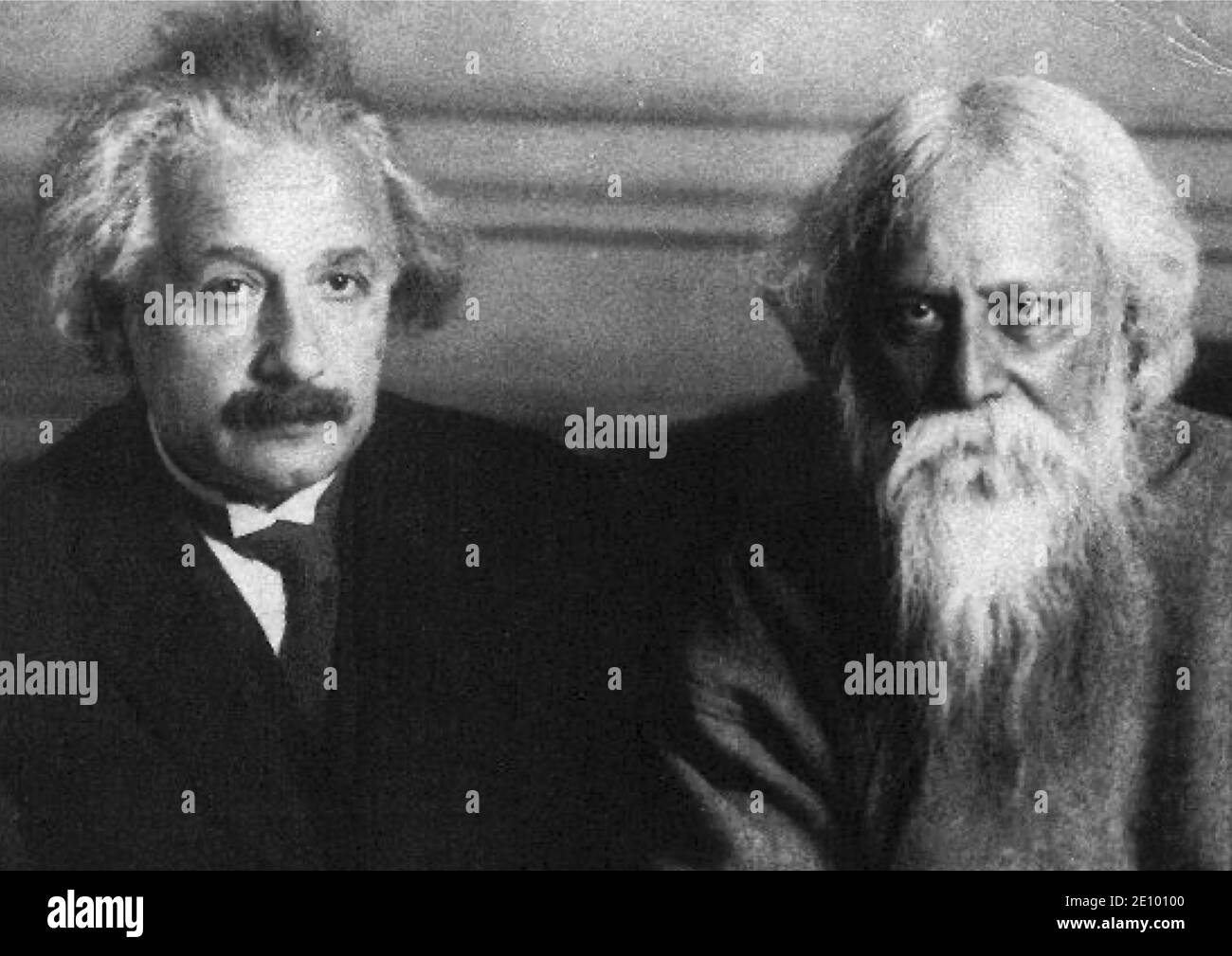 Albert Einstein and Rabindranath Tagore - 1930 Stock Photohttps://www.alamy.com/image-license-details/?v=1https://www.alamy.com/albert-einstein-and-rabindranath-tagore-1930-image396453904.html
Albert Einstein and Rabindranath Tagore - 1930 Stock Photohttps://www.alamy.com/image-license-details/?v=1https://www.alamy.com/albert-einstein-and-rabindranath-tagore-1930-image396453904.htmlRF2E10100–Albert Einstein and Rabindranath Tagore - 1930
 Jordanian Journeys: From Monte Nebo to Bethany, Al-Karak, and Amman Stock Photohttps://www.alamy.com/image-license-details/?v=1https://www.alamy.com/jordanian-journeys-from-monte-nebo-to-bethany-al-karak-and-amman-image569005290.html
Jordanian Journeys: From Monte Nebo to Bethany, Al-Karak, and Amman Stock Photohttps://www.alamy.com/image-license-details/?v=1https://www.alamy.com/jordanian-journeys-from-monte-nebo-to-bethany-al-karak-and-amman-image569005290.htmlRF2T1MC1E–Jordanian Journeys: From Monte Nebo to Bethany, Al-Karak, and Amman
 The Rotterdam Museum, lately destroyed by fire, 1864. Engraving from a photograph. 'The city of Rotterdam has suffered an irreparable loss by the destruction of its museum in the Schieland Palace, which was burnt down...The Schieland Palace...was erected in 1662...In 1847, a collection of valuable paintings, bequeathed to the city by M. Boymans, was transferred to the halls of the palace to form the nucleus of the costly treasures of art which have now for the most part been destroyed. The collection gradually increased till it numbered about four hundred paintings...Many - it is said a hundre Stock Photohttps://www.alamy.com/image-license-details/?v=1https://www.alamy.com/the-rotterdam-museum-lately-destroyed-by-fire-1864-engraving-from-a-photograph-the-city-of-rotterdam-has-suffered-an-irreparable-loss-by-the-destruction-of-its-museum-in-the-schieland-palace-which-was-burnt-downthe-schieland-palacewas-erected-in-1662in-1847-a-collection-of-valuable-paintings-bequeathed-to-the-city-by-m-boymans-was-transferred-to-the-halls-of-the-palace-to-form-the-nucleus-of-the-costly-treasures-of-art-which-have-now-for-the-most-part-been-destroyed-the-collection-gradually-increased-till-it-numbered-about-four-hundred-paintingsmany-it-is-said-a-hundre-image603633381.html
The Rotterdam Museum, lately destroyed by fire, 1864. Engraving from a photograph. 'The city of Rotterdam has suffered an irreparable loss by the destruction of its museum in the Schieland Palace, which was burnt down...The Schieland Palace...was erected in 1662...In 1847, a collection of valuable paintings, bequeathed to the city by M. Boymans, was transferred to the halls of the palace to form the nucleus of the costly treasures of art which have now for the most part been destroyed. The collection gradually increased till it numbered about four hundred paintings...Many - it is said a hundre Stock Photohttps://www.alamy.com/image-license-details/?v=1https://www.alamy.com/the-rotterdam-museum-lately-destroyed-by-fire-1864-engraving-from-a-photograph-the-city-of-rotterdam-has-suffered-an-irreparable-loss-by-the-destruction-of-its-museum-in-the-schieland-palace-which-was-burnt-downthe-schieland-palacewas-erected-in-1662in-1847-a-collection-of-valuable-paintings-bequeathed-to-the-city-by-m-boymans-was-transferred-to-the-halls-of-the-palace-to-form-the-nucleus-of-the-costly-treasures-of-art-which-have-now-for-the-most-part-been-destroyed-the-collection-gradually-increased-till-it-numbered-about-four-hundred-paintingsmany-it-is-said-a-hundre-image603633381.htmlRM2X21TF1–The Rotterdam Museum, lately destroyed by fire, 1864. Engraving from a photograph. 'The city of Rotterdam has suffered an irreparable loss by the destruction of its museum in the Schieland Palace, which was burnt down...The Schieland Palace...was erected in 1662...In 1847, a collection of valuable paintings, bequeathed to the city by M. Boymans, was transferred to the halls of the palace to form the nucleus of the costly treasures of art which have now for the most part been destroyed. The collection gradually increased till it numbered about four hundred paintings...Many - it is said a hundre
 Hermann Goering at 'Einsatzstab Rosenberg' headquarters in Paris, France. Alfred Rosenberg is in uniform next to art historian and dealer Bruno Lohse (second from right). The Nazi German officials were involved in the plundering of great European art works for a future 'Fuhrer Museum', as well as for their personal collections. March 10, 1942. World War 2. (BSLOC 2014 8 154) Stock Photohttps://www.alamy.com/image-license-details/?v=1https://www.alamy.com/stock-photo-hermann-goering-at-einsatzstab-rosenberg-headquarters-in-paris-france-170507254.html
Hermann Goering at 'Einsatzstab Rosenberg' headquarters in Paris, France. Alfred Rosenberg is in uniform next to art historian and dealer Bruno Lohse (second from right). The Nazi German officials were involved in the plundering of great European art works for a future 'Fuhrer Museum', as well as for their personal collections. March 10, 1942. World War 2. (BSLOC 2014 8 154) Stock Photohttps://www.alamy.com/image-license-details/?v=1https://www.alamy.com/stock-photo-hermann-goering-at-einsatzstab-rosenberg-headquarters-in-paris-france-170507254.htmlRMKWB7MP–Hermann Goering at 'Einsatzstab Rosenberg' headquarters in Paris, France. Alfred Rosenberg is in uniform next to art historian and dealer Bruno Lohse (second from right). The Nazi German officials were involved in the plundering of great European art works for a future 'Fuhrer Museum', as well as for their personal collections. March 10, 1942. World War 2. (BSLOC 2014 8 154)
 hand and inkstand Stock Photohttps://www.alamy.com/image-license-details/?v=1https://www.alamy.com/hand-and-inkstand-image459863586.html
hand and inkstand Stock Photohttps://www.alamy.com/image-license-details/?v=1https://www.alamy.com/hand-and-inkstand-image459863586.htmlRF2HM4GKE–hand and inkstand
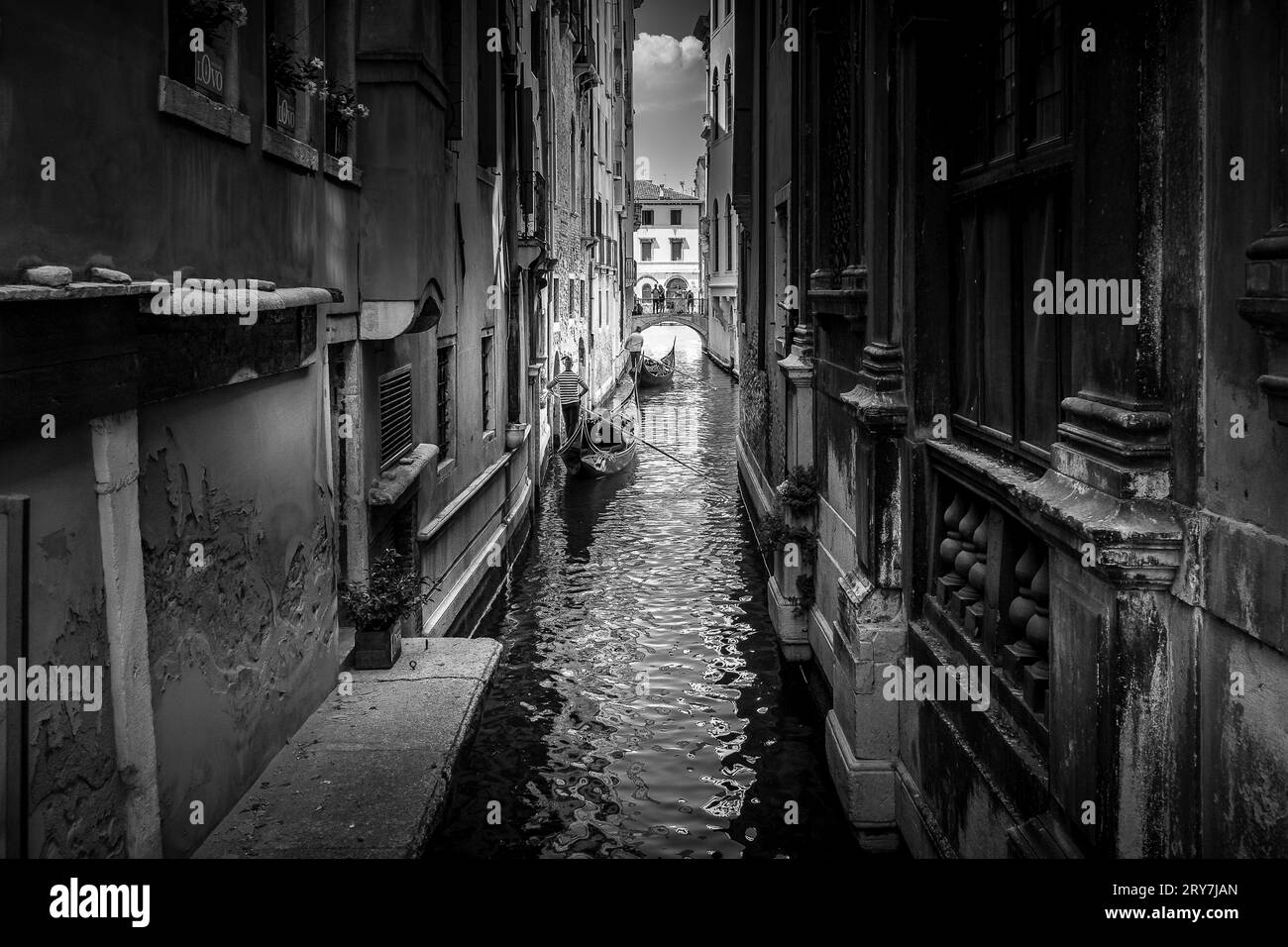 Venice Italy in Monochrome: Dreamy Cityscape Print for a Memorable Honeymoon or Wedding Gift Stock Photohttps://www.alamy.com/image-license-details/?v=1https://www.alamy.com/venice-italy-in-monochrome-dreamy-cityscape-print-for-a-memorable-honeymoon-or-wedding-gift-image567495565.html
Venice Italy in Monochrome: Dreamy Cityscape Print for a Memorable Honeymoon or Wedding Gift Stock Photohttps://www.alamy.com/image-license-details/?v=1https://www.alamy.com/venice-italy-in-monochrome-dreamy-cityscape-print-for-a-memorable-honeymoon-or-wedding-gift-image567495565.htmlRF2RY7JAN–Venice Italy in Monochrome: Dreamy Cityscape Print for a Memorable Honeymoon or Wedding Gift
 Porta San Niccolo, a towering stone gate from Florence's 1300s fortification walls Stock Photohttps://www.alamy.com/image-license-details/?v=1https://www.alamy.com/porta-san-niccolo-a-towering-stone-gate-from-florences-1300s-fortification-walls-image606403845.html
Porta San Niccolo, a towering stone gate from Florence's 1300s fortification walls Stock Photohttps://www.alamy.com/image-license-details/?v=1https://www.alamy.com/porta-san-niccolo-a-towering-stone-gate-from-florences-1300s-fortification-walls-image606403845.htmlRF2X6G285–Porta San Niccolo, a towering stone gate from Florence's 1300s fortification walls
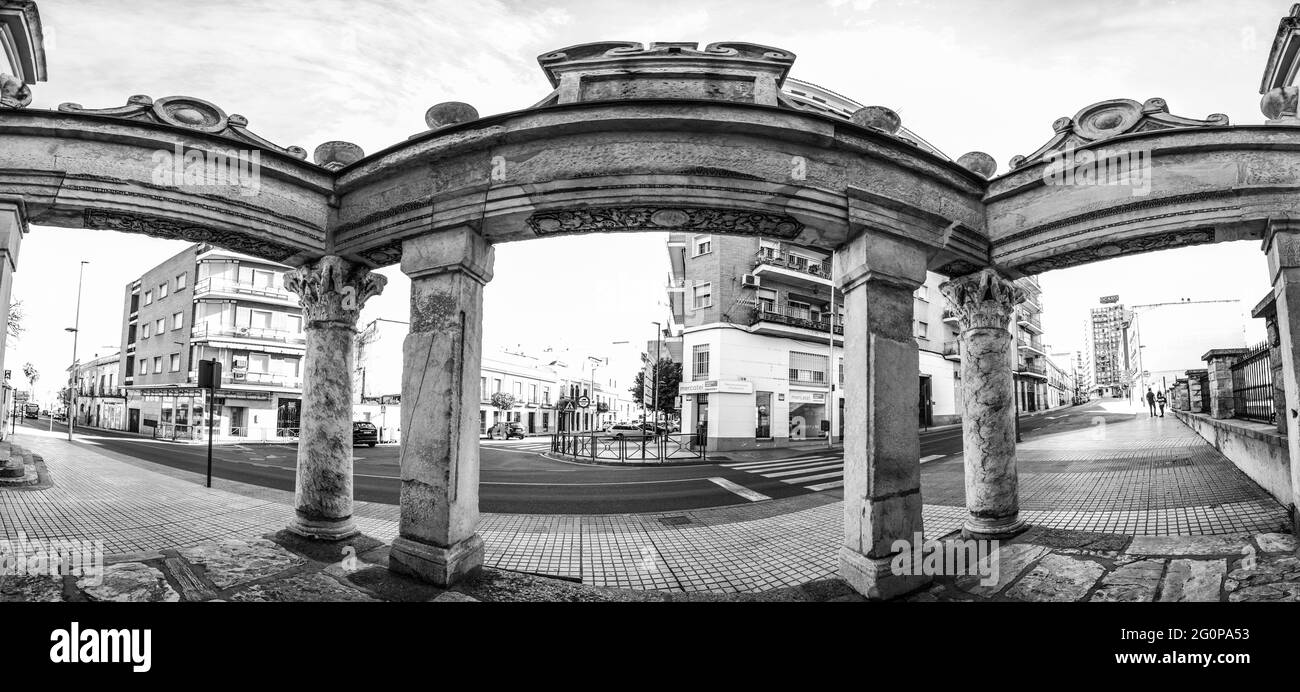 Chapel of Santa Eulalia Basilica in Merida. A showcase of the town twenty centuries of history, Extremadura, Spain Stock Photohttps://www.alamy.com/image-license-details/?v=1https://www.alamy.com/chapel-of-santa-eulalia-basilica-in-merida-a-showcase-of-the-town-twenty-centuries-of-history-extremadura-spain-image430750127.html
Chapel of Santa Eulalia Basilica in Merida. A showcase of the town twenty centuries of history, Extremadura, Spain Stock Photohttps://www.alamy.com/image-license-details/?v=1https://www.alamy.com/chapel-of-santa-eulalia-basilica-in-merida-a-showcase-of-the-town-twenty-centuries-of-history-extremadura-spain-image430750127.htmlRF2G0PA53–Chapel of Santa Eulalia Basilica in Merida. A showcase of the town twenty centuries of history, Extremadura, Spain
 Paphos Archaeological Park covers most of the important ancient Greek and Roman City and is a UNESCO World Heritage site. Stock Photohttps://www.alamy.com/image-license-details/?v=1https://www.alamy.com/paphos-archaeological-park-covers-most-of-the-important-ancient-greek-and-roman-city-and-is-a-unesco-world-heritage-site-image241707960.html
Paphos Archaeological Park covers most of the important ancient Greek and Roman City and is a UNESCO World Heritage site. Stock Photohttps://www.alamy.com/image-license-details/?v=1https://www.alamy.com/paphos-archaeological-park-covers-most-of-the-important-ancient-greek-and-roman-city-and-is-a-unesco-world-heritage-site-image241707960.htmlRFT16MY4–Paphos Archaeological Park covers most of the important ancient Greek and Roman City and is a UNESCO World Heritage site.
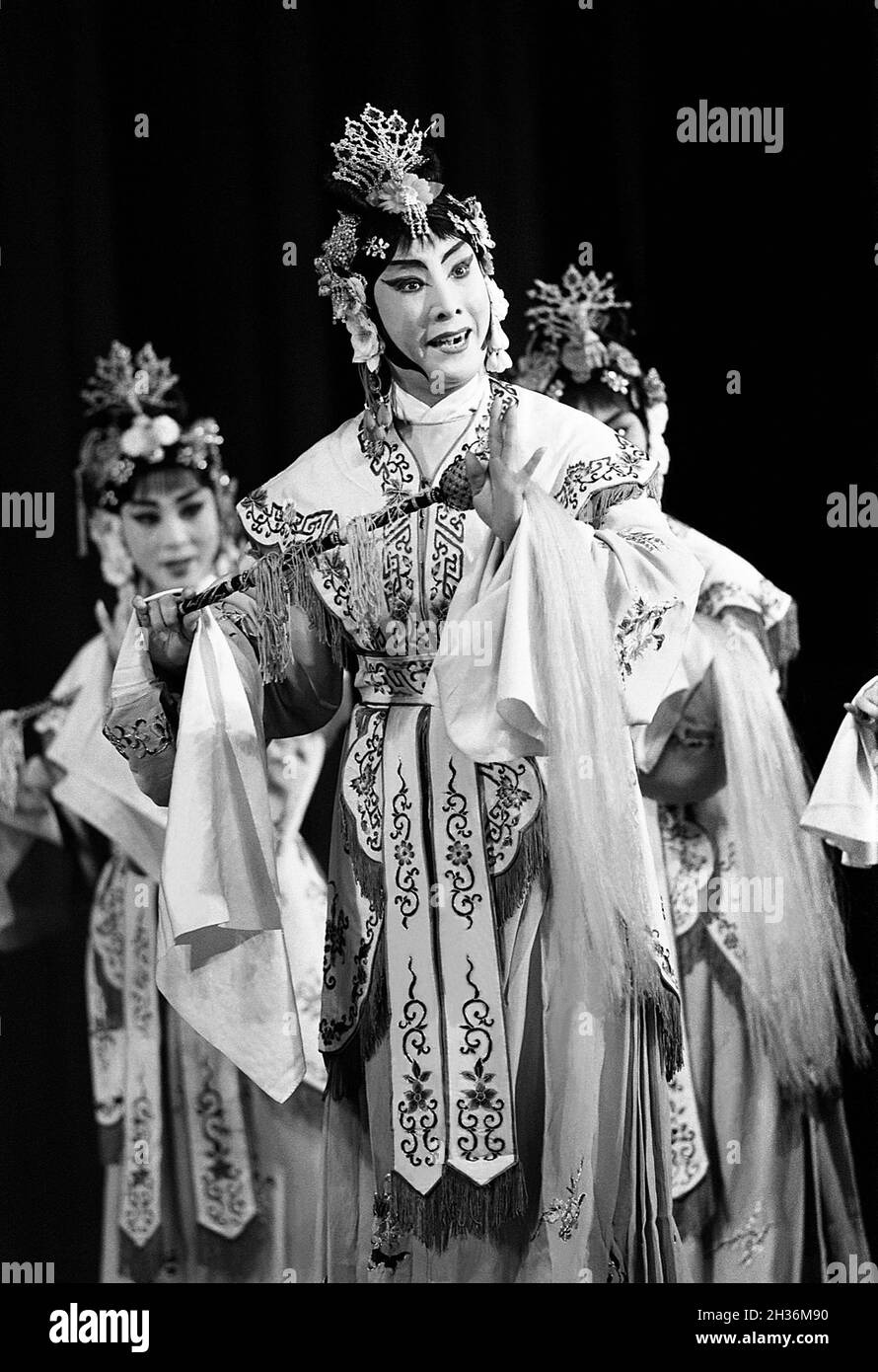 PEKING OPERA combines music mime dance and vocal performance Stock Photohttps://www.alamy.com/image-license-details/?v=1https://www.alamy.com/peking-opera-combines-music-mime-dance-and-vocal-performance-image449461180.html
PEKING OPERA combines music mime dance and vocal performance Stock Photohttps://www.alamy.com/image-license-details/?v=1https://www.alamy.com/peking-opera-combines-music-mime-dance-and-vocal-performance-image449461180.htmlRM2H36M90–PEKING OPERA combines music mime dance and vocal performance
RF2WKE23M–Vienna edifices icon outline vector. Cultural city wonders. Viennese history gems
 Model Boat. The Treasures of Tutankhamen, The Exhibition Catalogue by I E S Edwards, page 69. Stock Photohttps://www.alamy.com/image-license-details/?v=1https://www.alamy.com/model-boat-the-treasures-of-tutankhamen-the-exhibition-catalogue-by-i-e-s-edwards-page-69-image268793719.html
Model Boat. The Treasures of Tutankhamen, The Exhibition Catalogue by I E S Edwards, page 69. Stock Photohttps://www.alamy.com/image-license-details/?v=1https://www.alamy.com/model-boat-the-treasures-of-tutankhamen-the-exhibition-catalogue-by-i-e-s-edwards-page-69-image268793719.htmlRMWH8H3K–Model Boat. The Treasures of Tutankhamen, The Exhibition Catalogue by I E S Edwards, page 69.
 Art stolen by the Einsatzstab Reichsleiter Rosenberg. Paintings stored at the Jeu de Paume, Paris, these works were stolen by the Nazi State's Reichsleiter Rosenberg Taskforce (ERR) in France. Stock Photohttps://www.alamy.com/image-license-details/?v=1https://www.alamy.com/art-stolen-by-the-einsatzstab-reichsleiter-rosenberg-paintings-stored-at-the-jeu-de-paume-paris-these-works-were-stolen-by-the-nazi-states-reichsleiter-rosenberg-taskforce-err-in-france-image634298595.html
Art stolen by the Einsatzstab Reichsleiter Rosenberg. Paintings stored at the Jeu de Paume, Paris, these works were stolen by the Nazi State's Reichsleiter Rosenberg Taskforce (ERR) in France. Stock Photohttps://www.alamy.com/image-license-details/?v=1https://www.alamy.com/art-stolen-by-the-einsatzstab-reichsleiter-rosenberg-paintings-stored-at-the-jeu-de-paume-paris-these-works-were-stolen-by-the-nazi-states-reichsleiter-rosenberg-taskforce-err-in-france-image634298595.htmlRM2YRXP97–Art stolen by the Einsatzstab Reichsleiter Rosenberg. Paintings stored at the Jeu de Paume, Paris, these works were stolen by the Nazi State's Reichsleiter Rosenberg Taskforce (ERR) in France.
 Medieval and Renaissance Gallery at Victoria and Albert Museum, London UK, reflected in glass display cabinet. Photographed in monochrome Stock Photohttps://www.alamy.com/image-license-details/?v=1https://www.alamy.com/stock-photo-medieval-and-renaissance-gallery-at-victoria-and-albert-museum-london-172015104.html
Medieval and Renaissance Gallery at Victoria and Albert Museum, London UK, reflected in glass display cabinet. Photographed in monochrome Stock Photohttps://www.alamy.com/image-license-details/?v=1https://www.alamy.com/stock-photo-medieval-and-renaissance-gallery-at-victoria-and-albert-museum-london-172015104.htmlRFKYRY0G–Medieval and Renaissance Gallery at Victoria and Albert Museum, London UK, reflected in glass display cabinet. Photographed in monochrome
 Quebec City, Canada - July, 2022: old city (downtown part) is the major attraction for world travelers in summer and winter time Stock Photohttps://www.alamy.com/image-license-details/?v=1https://www.alamy.com/quebec-city-canada-july-2022-old-city-downtown-part-is-the-major-attraction-for-world-travelers-in-summer-and-winter-time-image476668515.html
Quebec City, Canada - July, 2022: old city (downtown part) is the major attraction for world travelers in summer and winter time Stock Photohttps://www.alamy.com/image-license-details/?v=1https://www.alamy.com/quebec-city-canada-july-2022-old-city-downtown-part-is-the-major-attraction-for-world-travelers-in-summer-and-winter-time-image476668515.htmlRF2JKE3FF–Quebec City, Canada - July, 2022: old city (downtown part) is the major attraction for world travelers in summer and winter time
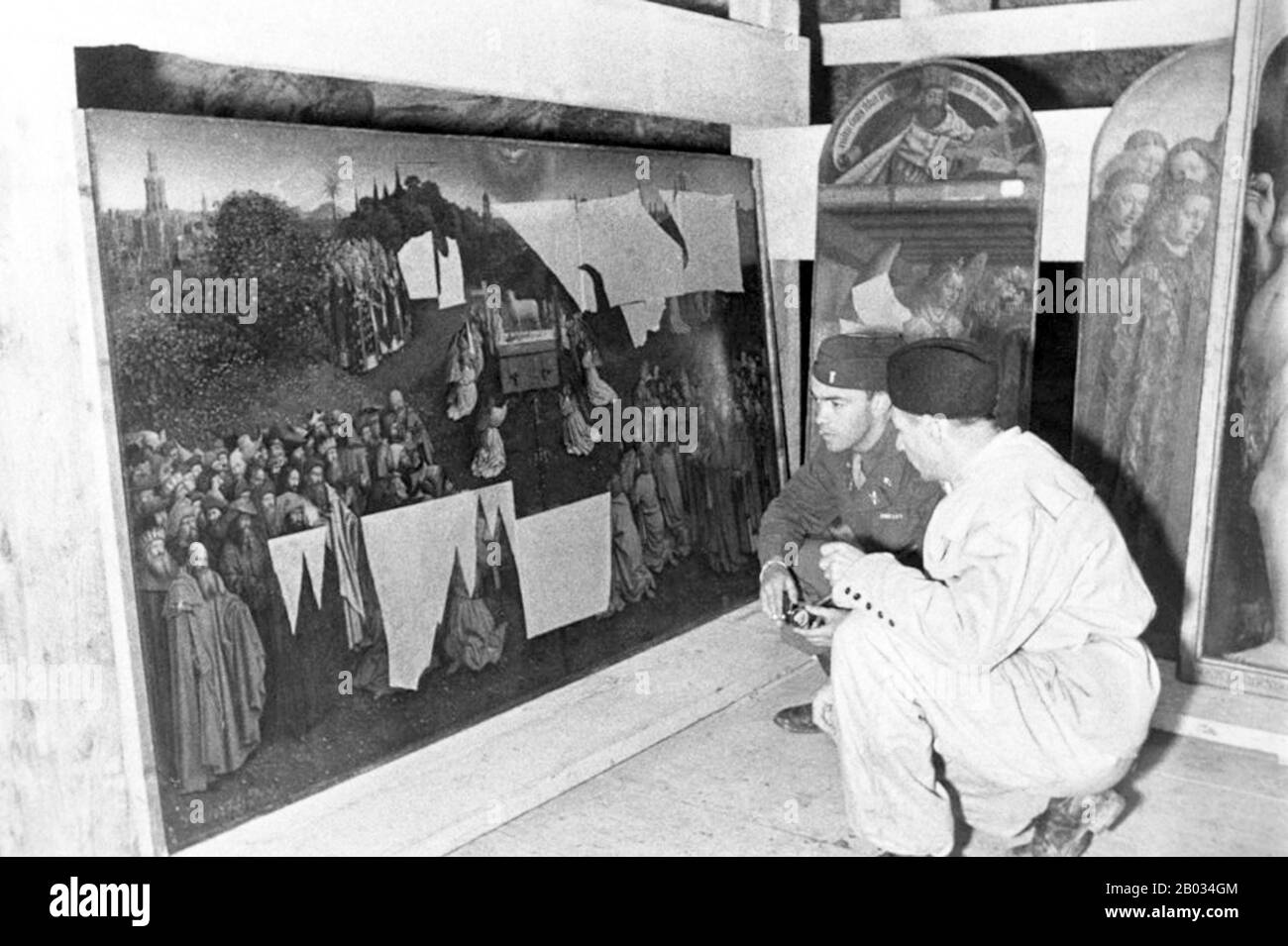 'Nazi plunder' refers to art theft and other items stolen as a result of the organized looting of European countries during the time of the Third Reich by agents acting on behalf of the ruling Nazi Party of Germany. Plundering occurred from 1933 until the end of World War II, although most plunder was acquired during the war. In addition to gold, silver and currency, cultural items of great significance were stolen, including paintings, ceramics, books, and religious treasures. Although most of these items were recovered by agents of the Monuments, Fine Arts, and Archives program (MFAA), affe Stock Photohttps://www.alamy.com/image-license-details/?v=1https://www.alamy.com/nazi-plunder-refers-to-art-theft-and-other-items-stolen-as-a-result-of-the-organized-looting-of-european-countries-during-the-time-of-the-third-reich-by-agents-acting-on-behalf-of-the-ruling-nazi-party-of-germany-plundering-occurred-from-1933-until-the-end-of-world-war-ii-although-most-plunder-was-acquired-during-the-war-in-addition-to-gold-silver-and-currency-cultural-items-of-great-significance-were-stolen-including-paintings-ceramics-books-and-religious-treasures-although-most-of-these-items-were-recovered-by-agents-of-the-monuments-fine-arts-and-archives-program-mfaa-affe-image344276820.html
'Nazi plunder' refers to art theft and other items stolen as a result of the organized looting of European countries during the time of the Third Reich by agents acting on behalf of the ruling Nazi Party of Germany. Plundering occurred from 1933 until the end of World War II, although most plunder was acquired during the war. In addition to gold, silver and currency, cultural items of great significance were stolen, including paintings, ceramics, books, and religious treasures. Although most of these items were recovered by agents of the Monuments, Fine Arts, and Archives program (MFAA), affe Stock Photohttps://www.alamy.com/image-license-details/?v=1https://www.alamy.com/nazi-plunder-refers-to-art-theft-and-other-items-stolen-as-a-result-of-the-organized-looting-of-european-countries-during-the-time-of-the-third-reich-by-agents-acting-on-behalf-of-the-ruling-nazi-party-of-germany-plundering-occurred-from-1933-until-the-end-of-world-war-ii-although-most-plunder-was-acquired-during-the-war-in-addition-to-gold-silver-and-currency-cultural-items-of-great-significance-were-stolen-including-paintings-ceramics-books-and-religious-treasures-although-most-of-these-items-were-recovered-by-agents-of-the-monuments-fine-arts-and-archives-program-mfaa-affe-image344276820.htmlRM2B034GM–'Nazi plunder' refers to art theft and other items stolen as a result of the organized looting of European countries during the time of the Third Reich by agents acting on behalf of the ruling Nazi Party of Germany. Plundering occurred from 1933 until the end of World War II, although most plunder was acquired during the war. In addition to gold, silver and currency, cultural items of great significance were stolen, including paintings, ceramics, books, and religious treasures. Although most of these items were recovered by agents of the Monuments, Fine Arts, and Archives program (MFAA), affe
 Hermann Goering at 'Einsatzstab Rosenberg' headquarters in Paris, France. Alfred Rosenberg is in uniform next to art historian and dealer Bruno Lohse (second from right). The Nazi German officials were involved in the plundering of great European art works for a future 'Fuhrer Museum', as well as for their personal collections. March 10, 1942. World War 2. (BSLOC 2014 8 154) Stock Photohttps://www.alamy.com/image-license-details/?v=1https://www.alamy.com/stock-photo-hermann-goering-at-einsatzstab-rosenberg-headquarters-in-paris-france-170506361.html
Hermann Goering at 'Einsatzstab Rosenberg' headquarters in Paris, France. Alfred Rosenberg is in uniform next to art historian and dealer Bruno Lohse (second from right). The Nazi German officials were involved in the plundering of great European art works for a future 'Fuhrer Museum', as well as for their personal collections. March 10, 1942. World War 2. (BSLOC 2014 8 154) Stock Photohttps://www.alamy.com/image-license-details/?v=1https://www.alamy.com/stock-photo-hermann-goering-at-einsatzstab-rosenberg-headquarters-in-paris-france-170506361.htmlRMKWB6GW–Hermann Goering at 'Einsatzstab Rosenberg' headquarters in Paris, France. Alfred Rosenberg is in uniform next to art historian and dealer Bruno Lohse (second from right). The Nazi German officials were involved in the plundering of great European art works for a future 'Fuhrer Museum', as well as for their personal collections. March 10, 1942. World War 2. (BSLOC 2014 8 154)
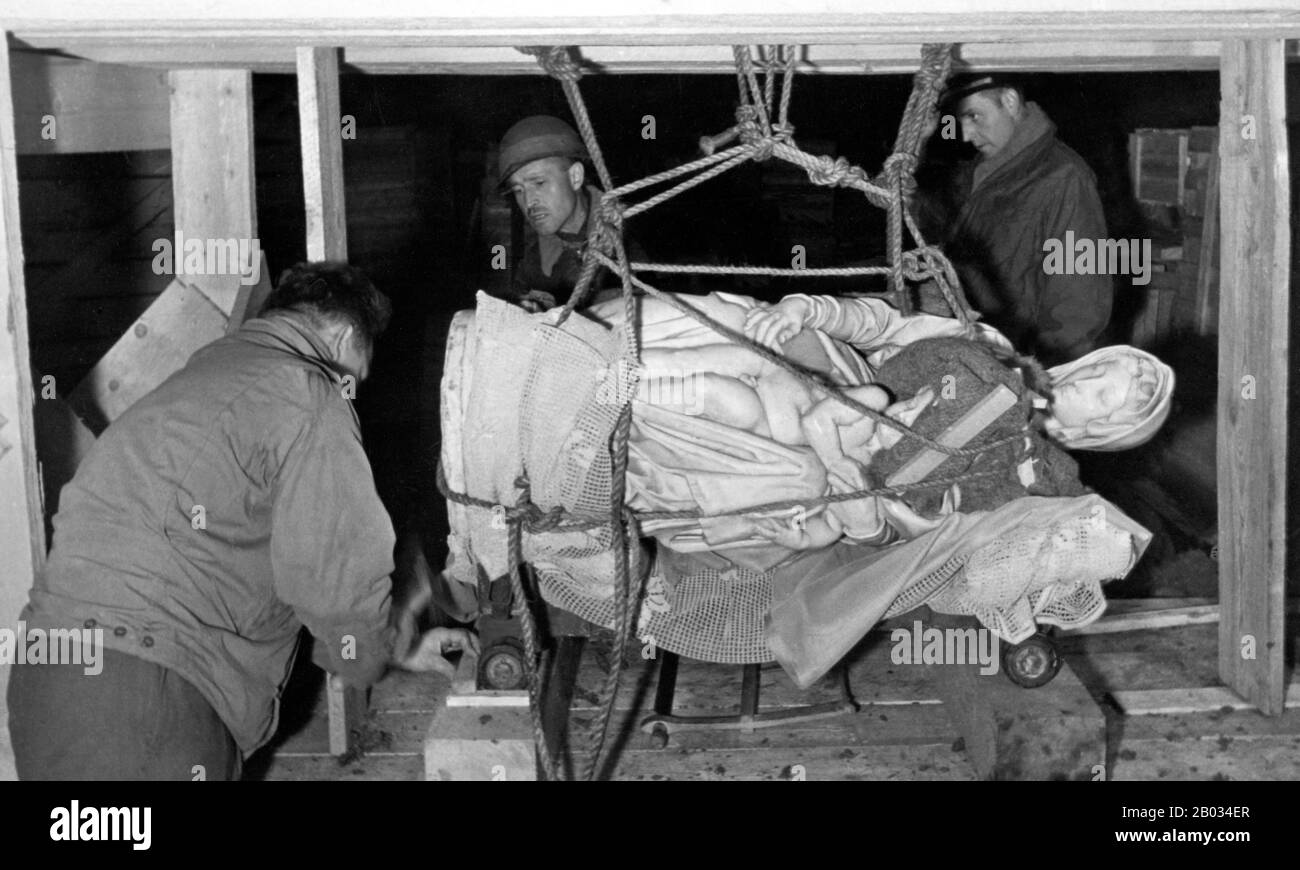 'Nazi plunder' refers to art theft and other items stolen as a result of the organized looting of European countries during the time of the Third Reich by agents acting on behalf of the ruling Nazi Party of Germany. Plundering occurred from 1933 until the end of World War II, although most plunder was acquired during the war. In addition to gold, silver and currency, cultural items of great significance were stolen, including paintings, ceramics, books, and religious treasures. Although most of these items were recovered by agents of the Monuments, Fine Arts, and Archives program (MFAA), aff Stock Photohttps://www.alamy.com/image-license-details/?v=1https://www.alamy.com/nazi-plunder-refers-to-art-theft-and-other-items-stolen-as-a-result-of-the-organized-looting-of-european-countries-during-the-time-of-the-third-reich-by-agents-acting-on-behalf-of-the-ruling-nazi-party-of-germany-plundering-occurred-from-1933-until-the-end-of-world-war-ii-although-most-plunder-was-acquired-during-the-war-in-addition-to-gold-silver-and-currency-cultural-items-of-great-significance-were-stolen-including-paintings-ceramics-books-and-religious-treasures-although-most-of-these-items-were-recovered-by-agents-of-the-monuments-fine-arts-and-archives-program-mfaa-aff-image344276767.html
'Nazi plunder' refers to art theft and other items stolen as a result of the organized looting of European countries during the time of the Third Reich by agents acting on behalf of the ruling Nazi Party of Germany. Plundering occurred from 1933 until the end of World War II, although most plunder was acquired during the war. In addition to gold, silver and currency, cultural items of great significance were stolen, including paintings, ceramics, books, and religious treasures. Although most of these items were recovered by agents of the Monuments, Fine Arts, and Archives program (MFAA), aff Stock Photohttps://www.alamy.com/image-license-details/?v=1https://www.alamy.com/nazi-plunder-refers-to-art-theft-and-other-items-stolen-as-a-result-of-the-organized-looting-of-european-countries-during-the-time-of-the-third-reich-by-agents-acting-on-behalf-of-the-ruling-nazi-party-of-germany-plundering-occurred-from-1933-until-the-end-of-world-war-ii-although-most-plunder-was-acquired-during-the-war-in-addition-to-gold-silver-and-currency-cultural-items-of-great-significance-were-stolen-including-paintings-ceramics-books-and-religious-treasures-although-most-of-these-items-were-recovered-by-agents-of-the-monuments-fine-arts-and-archives-program-mfaa-aff-image344276767.htmlRM2B034ER–'Nazi plunder' refers to art theft and other items stolen as a result of the organized looting of European countries during the time of the Third Reich by agents acting on behalf of the ruling Nazi Party of Germany. Plundering occurred from 1933 until the end of World War II, although most plunder was acquired during the war. In addition to gold, silver and currency, cultural items of great significance were stolen, including paintings, ceramics, books, and religious treasures. Although most of these items were recovered by agents of the Monuments, Fine Arts, and Archives program (MFAA), aff
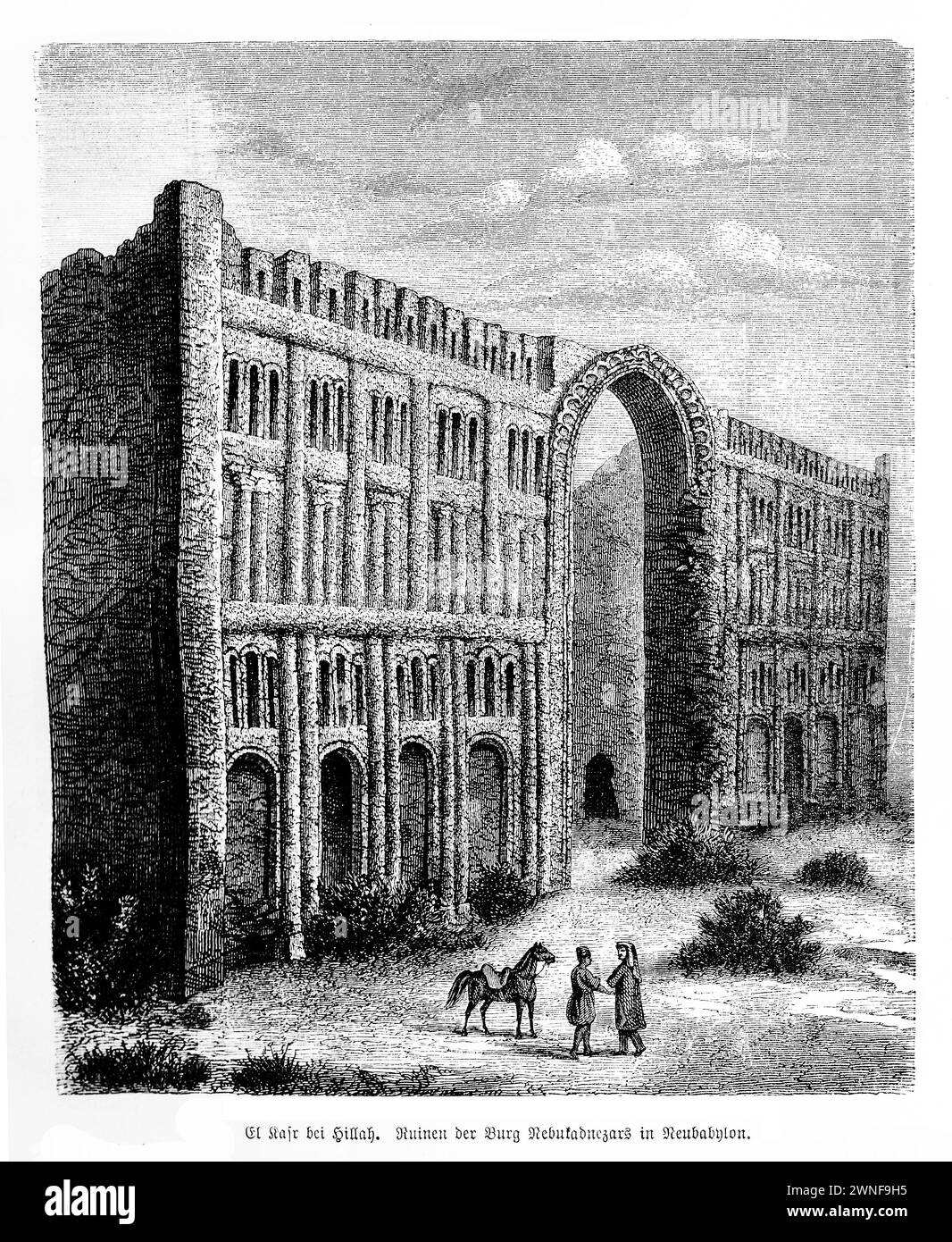 Palace Of Nebuchadnezzar II ruins, Neo-Babylonian empire, near Hilla, now Irak. In the shadow of modern-day Hilla lies the haunting remnants of the Palace of Nebuchadnezzar II, a once-magnificent testament to the grandeur of the Neo-Babylonian Empire. These ruins whisper tales of ancient glory, where Nebuchadnezzar II, a ruler famed for his architectural ventures and the Hanging Gardens, one of the Seven Wonders of the Ancient World, held court. Today, what remains of the palace serves as a poignant bridge to a bygone era, inviting awe and reflection on the impermanence of human endeavors. Stock Photohttps://www.alamy.com/image-license-details/?v=1https://www.alamy.com/palace-of-nebuchadnezzar-ii-ruins-neo-babylonian-empire-near-hilla-now-irak-in-the-shadow-of-modern-day-hilla-lies-the-haunting-remnants-of-the-palace-of-nebuchadnezzar-ii-a-once-magnificent-testament-to-the-grandeur-of-the-neo-babylonian-empire-these-ruins-whisper-tales-of-ancient-glory-where-nebuchadnezzar-ii-a-ruler-famed-for-his-architectural-ventures-and-the-hanging-gardens-one-of-the-seven-wonders-of-the-ancient-world-held-court-today-what-remains-of-the-palace-serves-as-a-poignant-bridge-to-a-bygone-era-inviting-awe-and-reflection-on-the-impermanence-of-human-endeavors-image598397105.html
Palace Of Nebuchadnezzar II ruins, Neo-Babylonian empire, near Hilla, now Irak. In the shadow of modern-day Hilla lies the haunting remnants of the Palace of Nebuchadnezzar II, a once-magnificent testament to the grandeur of the Neo-Babylonian Empire. These ruins whisper tales of ancient glory, where Nebuchadnezzar II, a ruler famed for his architectural ventures and the Hanging Gardens, one of the Seven Wonders of the Ancient World, held court. Today, what remains of the palace serves as a poignant bridge to a bygone era, inviting awe and reflection on the impermanence of human endeavors. Stock Photohttps://www.alamy.com/image-license-details/?v=1https://www.alamy.com/palace-of-nebuchadnezzar-ii-ruins-neo-babylonian-empire-near-hilla-now-irak-in-the-shadow-of-modern-day-hilla-lies-the-haunting-remnants-of-the-palace-of-nebuchadnezzar-ii-a-once-magnificent-testament-to-the-grandeur-of-the-neo-babylonian-empire-these-ruins-whisper-tales-of-ancient-glory-where-nebuchadnezzar-ii-a-ruler-famed-for-his-architectural-ventures-and-the-hanging-gardens-one-of-the-seven-wonders-of-the-ancient-world-held-court-today-what-remains-of-the-palace-serves-as-a-poignant-bridge-to-a-bygone-era-inviting-awe-and-reflection-on-the-impermanence-of-human-endeavors-image598397105.htmlRM2WNF9H5–Palace Of Nebuchadnezzar II ruins, Neo-Babylonian empire, near Hilla, now Irak. In the shadow of modern-day Hilla lies the haunting remnants of the Palace of Nebuchadnezzar II, a once-magnificent testament to the grandeur of the Neo-Babylonian Empire. These ruins whisper tales of ancient glory, where Nebuchadnezzar II, a ruler famed for his architectural ventures and the Hanging Gardens, one of the Seven Wonders of the Ancient World, held court. Today, what remains of the palace serves as a poignant bridge to a bygone era, inviting awe and reflection on the impermanence of human endeavors.
 Exhibition at Alton Towers, Staffordshire, in aid of the Wedgwood Institute of Burslem - the Picture-Gallery and Armoury, 1865. '...it is intended that the building itself shall illustrate the constructive as well as the decorative uses of ceramic art...Earl Granville had done much to further this scheme, having allowed the exhibition committee to borrow some of the art- treasures from the museum at South Kensington...in respect of Wedgwood ware, a larger show was rarely if ever seen. There are also some excellent specimens of Staffordshire ware, from the best local manufacturers...The Armoury Stock Photohttps://www.alamy.com/image-license-details/?v=1https://www.alamy.com/exhibition-at-alton-towers-staffordshire-in-aid-of-the-wedgwood-institute-of-burslem-the-picture-gallery-and-armoury-1865-it-is-intended-that-the-building-itself-shall-illustrate-the-constructive-as-well-as-the-decorative-uses-of-ceramic-artearl-granville-had-done-much-to-further-this-scheme-having-allowed-the-exhibition-committee-to-borrow-some-of-the-art-treasures-from-the-museum-at-south-kensingtonin-respect-of-wedgwood-ware-a-larger-show-was-rarely-if-ever-seen-there-are-also-some-excellent-specimens-of-staffordshire-ware-from-the-best-local-manufacturersthe-armoury-image603634152.html
Exhibition at Alton Towers, Staffordshire, in aid of the Wedgwood Institute of Burslem - the Picture-Gallery and Armoury, 1865. '...it is intended that the building itself shall illustrate the constructive as well as the decorative uses of ceramic art...Earl Granville had done much to further this scheme, having allowed the exhibition committee to borrow some of the art- treasures from the museum at South Kensington...in respect of Wedgwood ware, a larger show was rarely if ever seen. There are also some excellent specimens of Staffordshire ware, from the best local manufacturers...The Armoury Stock Photohttps://www.alamy.com/image-license-details/?v=1https://www.alamy.com/exhibition-at-alton-towers-staffordshire-in-aid-of-the-wedgwood-institute-of-burslem-the-picture-gallery-and-armoury-1865-it-is-intended-that-the-building-itself-shall-illustrate-the-constructive-as-well-as-the-decorative-uses-of-ceramic-artearl-granville-had-done-much-to-further-this-scheme-having-allowed-the-exhibition-committee-to-borrow-some-of-the-art-treasures-from-the-museum-at-south-kensingtonin-respect-of-wedgwood-ware-a-larger-show-was-rarely-if-ever-seen-there-are-also-some-excellent-specimens-of-staffordshire-ware-from-the-best-local-manufacturersthe-armoury-image603634152.htmlRM2X21WEG–Exhibition at Alton Towers, Staffordshire, in aid of the Wedgwood Institute of Burslem - the Picture-Gallery and Armoury, 1865. '...it is intended that the building itself shall illustrate the constructive as well as the decorative uses of ceramic art...Earl Granville had done much to further this scheme, having allowed the exhibition committee to borrow some of the art- treasures from the museum at South Kensington...in respect of Wedgwood ware, a larger show was rarely if ever seen. There are also some excellent specimens of Staffordshire ware, from the best local manufacturers...The Armoury
 Hermann Goering at 'Einsatzstab Rosenberg' headquarters in Paris, France. Alfred Rosenberg is in uniform next to art historian Stock Photohttps://www.alamy.com/image-license-details/?v=1https://www.alamy.com/stock-photo-hermann-goering-at-einsatzstab-rosenberg-headquarters-in-paris-france-78823801.html
Hermann Goering at 'Einsatzstab Rosenberg' headquarters in Paris, France. Alfred Rosenberg is in uniform next to art historian Stock Photohttps://www.alamy.com/image-license-details/?v=1https://www.alamy.com/stock-photo-hermann-goering-at-einsatzstab-rosenberg-headquarters-in-paris-france-78823801.htmlRMEG6MFN–Hermann Goering at 'Einsatzstab Rosenberg' headquarters in Paris, France. Alfred Rosenberg is in uniform next to art historian
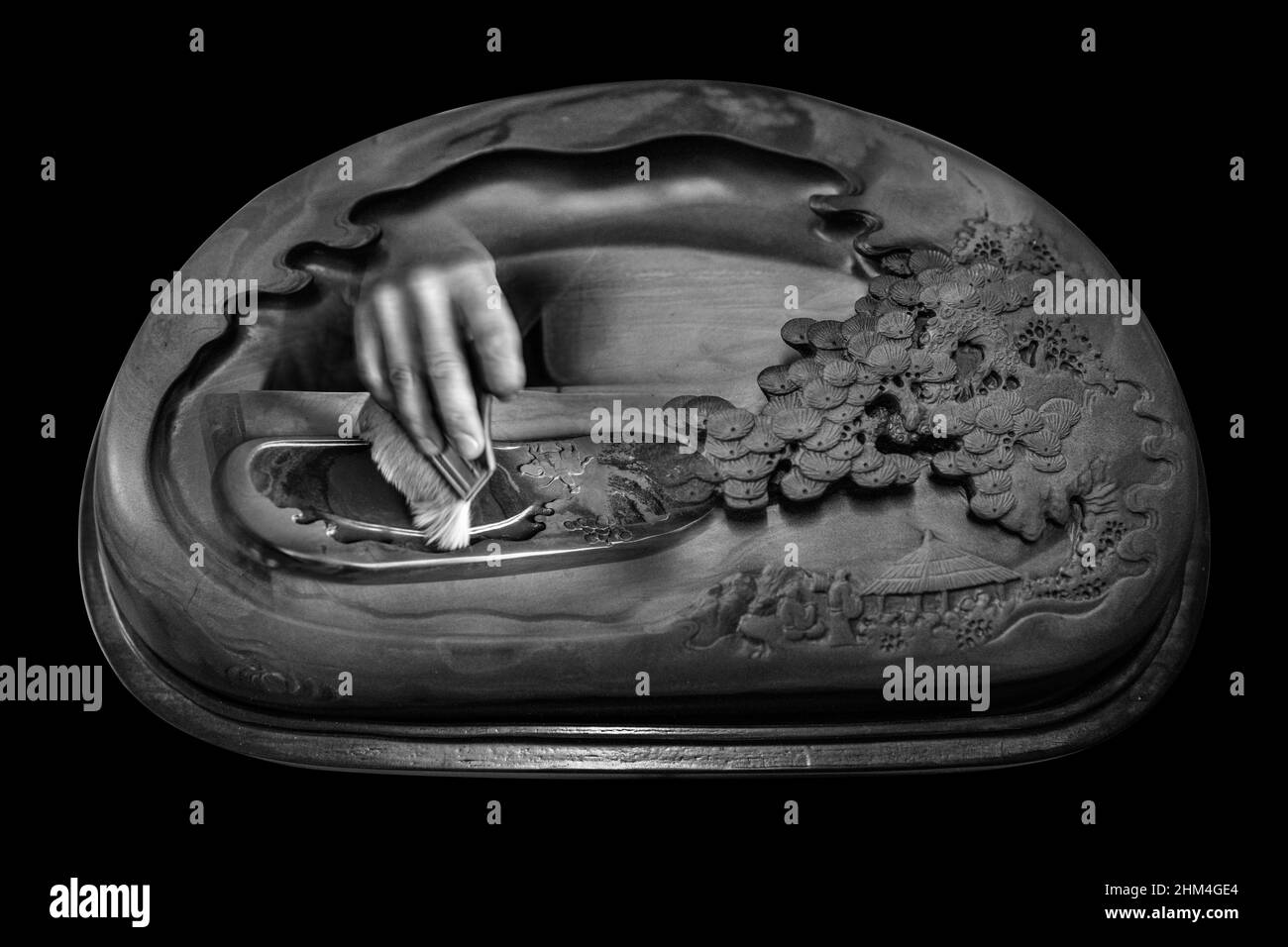 hand and inkstand Stock Photohttps://www.alamy.com/image-license-details/?v=1https://www.alamy.com/hand-and-inkstand-image459863436.html
hand and inkstand Stock Photohttps://www.alamy.com/image-license-details/?v=1https://www.alamy.com/hand-and-inkstand-image459863436.htmlRF2HM4GE4–hand and inkstand
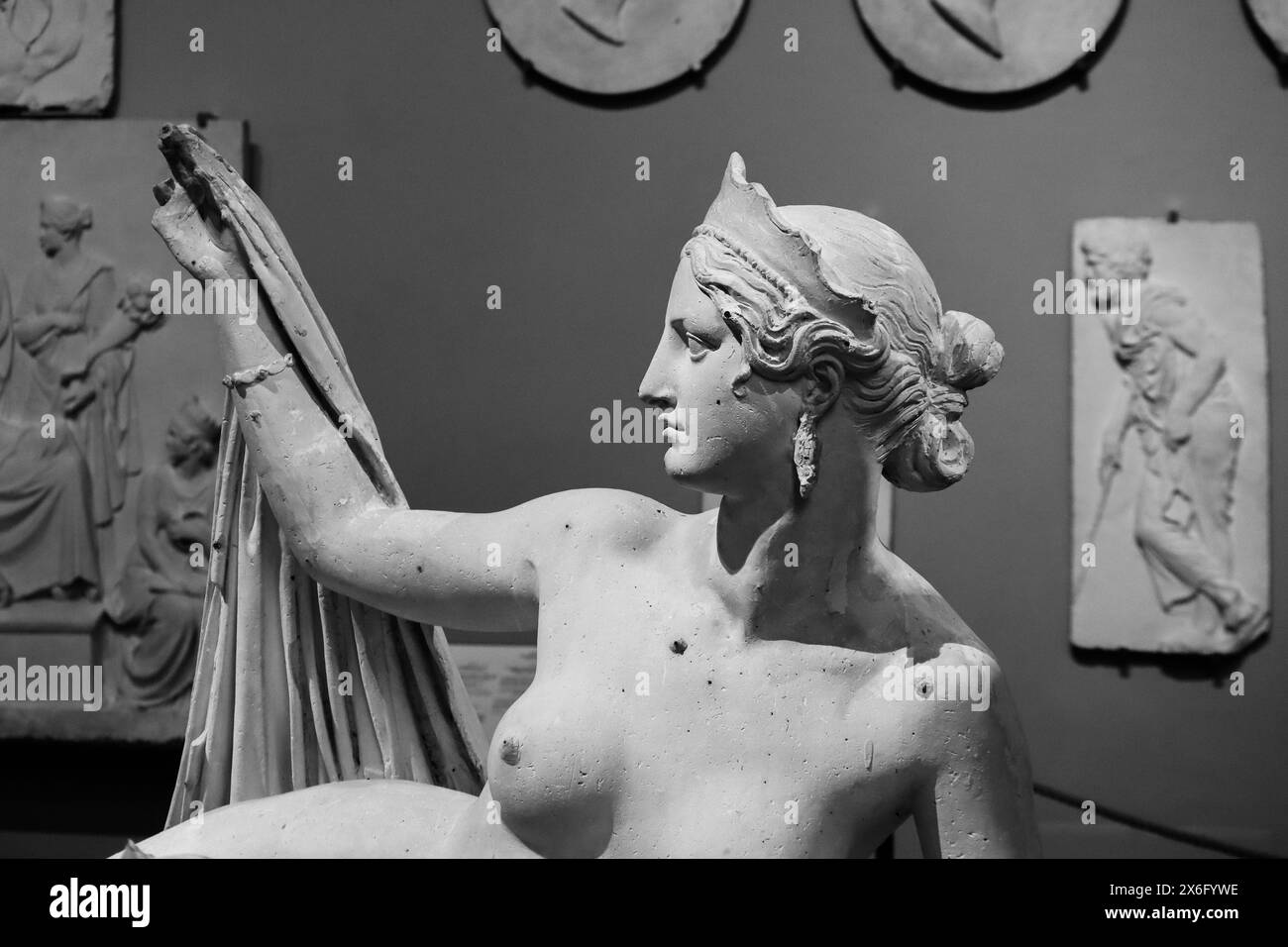 Florence, Italy - 29 December, 2023: The Galleria dell'Accademia di Firenze, or 'Gallery of the Academy of Florence', an art museum in Florence, Italy Stock Photohttps://www.alamy.com/image-license-details/?v=1https://www.alamy.com/florence-italy-29-december-2023-the-galleria-dellaccademia-di-firenze-or-gallery-of-the-academy-of-florence-an-art-museum-in-florence-italy-image606401978.html
Florence, Italy - 29 December, 2023: The Galleria dell'Accademia di Firenze, or 'Gallery of the Academy of Florence', an art museum in Florence, Italy Stock Photohttps://www.alamy.com/image-license-details/?v=1https://www.alamy.com/florence-italy-29-december-2023-the-galleria-dellaccademia-di-firenze-or-gallery-of-the-academy-of-florence-an-art-museum-in-florence-italy-image606401978.htmlRF2X6FYWE–Florence, Italy - 29 December, 2023: The Galleria dell'Accademia di Firenze, or 'Gallery of the Academy of Florence', an art museum in Florence, Italy
 PEKING OPERA combines music mime dance and vocal performance Stock Photohttps://www.alamy.com/image-license-details/?v=1https://www.alamy.com/peking-opera-combines-music-mime-dance-and-vocal-performance-image449461109.html
PEKING OPERA combines music mime dance and vocal performance Stock Photohttps://www.alamy.com/image-license-details/?v=1https://www.alamy.com/peking-opera-combines-music-mime-dance-and-vocal-performance-image449461109.htmlRM2H36M6D–PEKING OPERA combines music mime dance and vocal performance
RF2WKE7EK–Cultural capital icon outline vector. Viennese architecture. Austrian historical city center
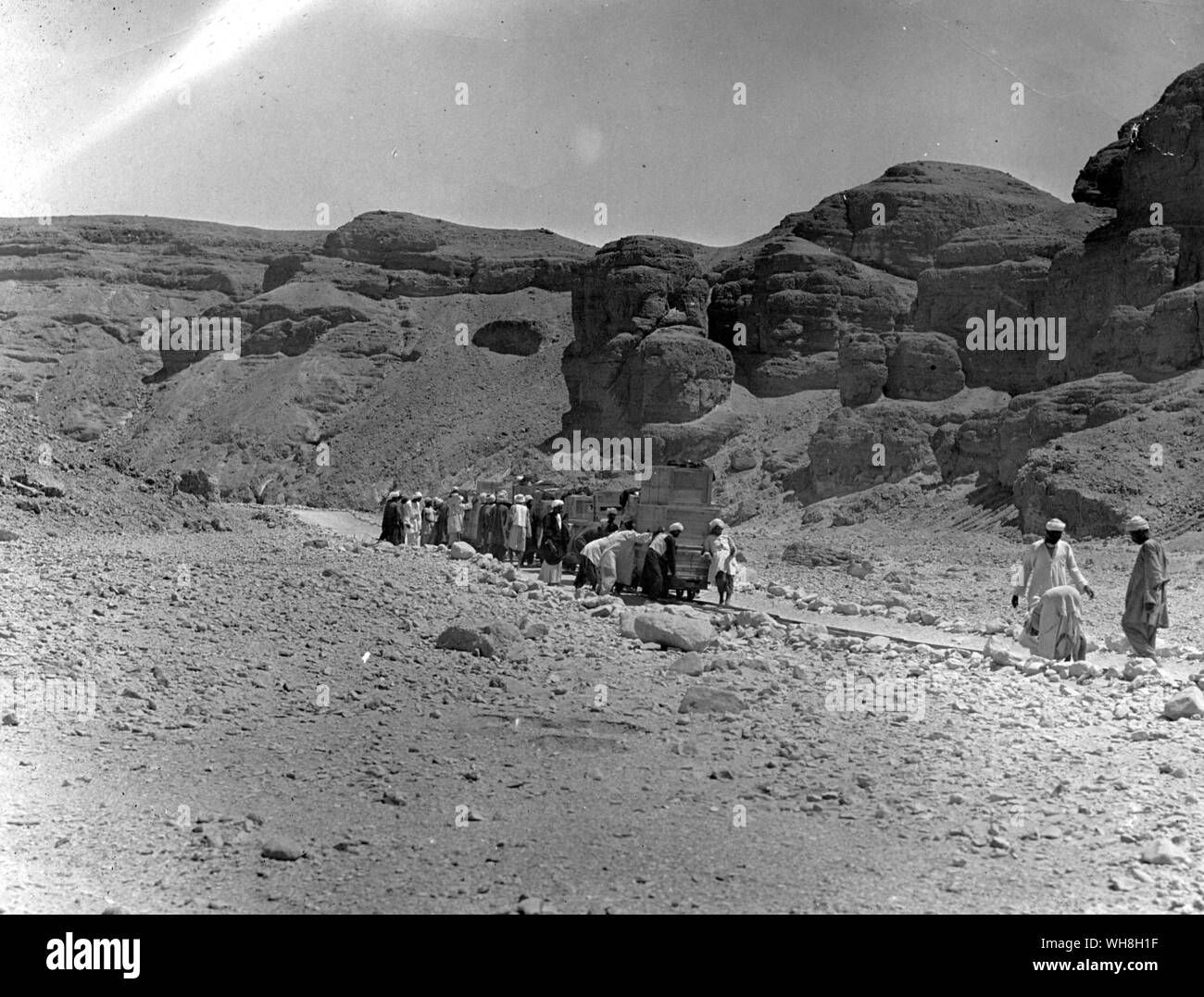 Transporting the objects from the tomb. The Treasures of Tutankhamen, The Exhibition Catalogue by I E S Edwards, page 47. Stock Photohttps://www.alamy.com/image-license-details/?v=1https://www.alamy.com/transporting-the-objects-from-the-tomb-the-treasures-of-tutankhamen-the-exhibition-catalogue-by-i-e-s-edwards-page-47-image268793659.html
Transporting the objects from the tomb. The Treasures of Tutankhamen, The Exhibition Catalogue by I E S Edwards, page 47. Stock Photohttps://www.alamy.com/image-license-details/?v=1https://www.alamy.com/transporting-the-objects-from-the-tomb-the-treasures-of-tutankhamen-the-exhibition-catalogue-by-i-e-s-edwards-page-47-image268793659.htmlRMWH8H1F–Transporting the objects from the tomb. The Treasures of Tutankhamen, The Exhibition Catalogue by I E S Edwards, page 47.
 Quebec City, Canada - July, 2022: old city (downtown part) is the major attraction for world travelers in summer and winter time Stock Photohttps://www.alamy.com/image-license-details/?v=1https://www.alamy.com/quebec-city-canada-july-2022-old-city-downtown-part-is-the-major-attraction-for-world-travelers-in-summer-and-winter-time-image476668319.html
Quebec City, Canada - July, 2022: old city (downtown part) is the major attraction for world travelers in summer and winter time Stock Photohttps://www.alamy.com/image-license-details/?v=1https://www.alamy.com/quebec-city-canada-july-2022-old-city-downtown-part-is-the-major-attraction-for-world-travelers-in-summer-and-winter-time-image476668319.htmlRF2JKE38F–Quebec City, Canada - July, 2022: old city (downtown part) is the major attraction for world travelers in summer and winter time
 Quebec City, Canada - July, 2022: old city (downtown part) is the major attraction for world travelers in summer and winter time Stock Photohttps://www.alamy.com/image-license-details/?v=1https://www.alamy.com/quebec-city-canada-july-2022-old-city-downtown-part-is-the-major-attraction-for-world-travelers-in-summer-and-winter-time-image476668413.html
Quebec City, Canada - July, 2022: old city (downtown part) is the major attraction for world travelers in summer and winter time Stock Photohttps://www.alamy.com/image-license-details/?v=1https://www.alamy.com/quebec-city-canada-july-2022-old-city-downtown-part-is-the-major-attraction-for-world-travelers-in-summer-and-winter-time-image476668413.htmlRF2JKE3BW–Quebec City, Canada - July, 2022: old city (downtown part) is the major attraction for world travelers in summer and winter time
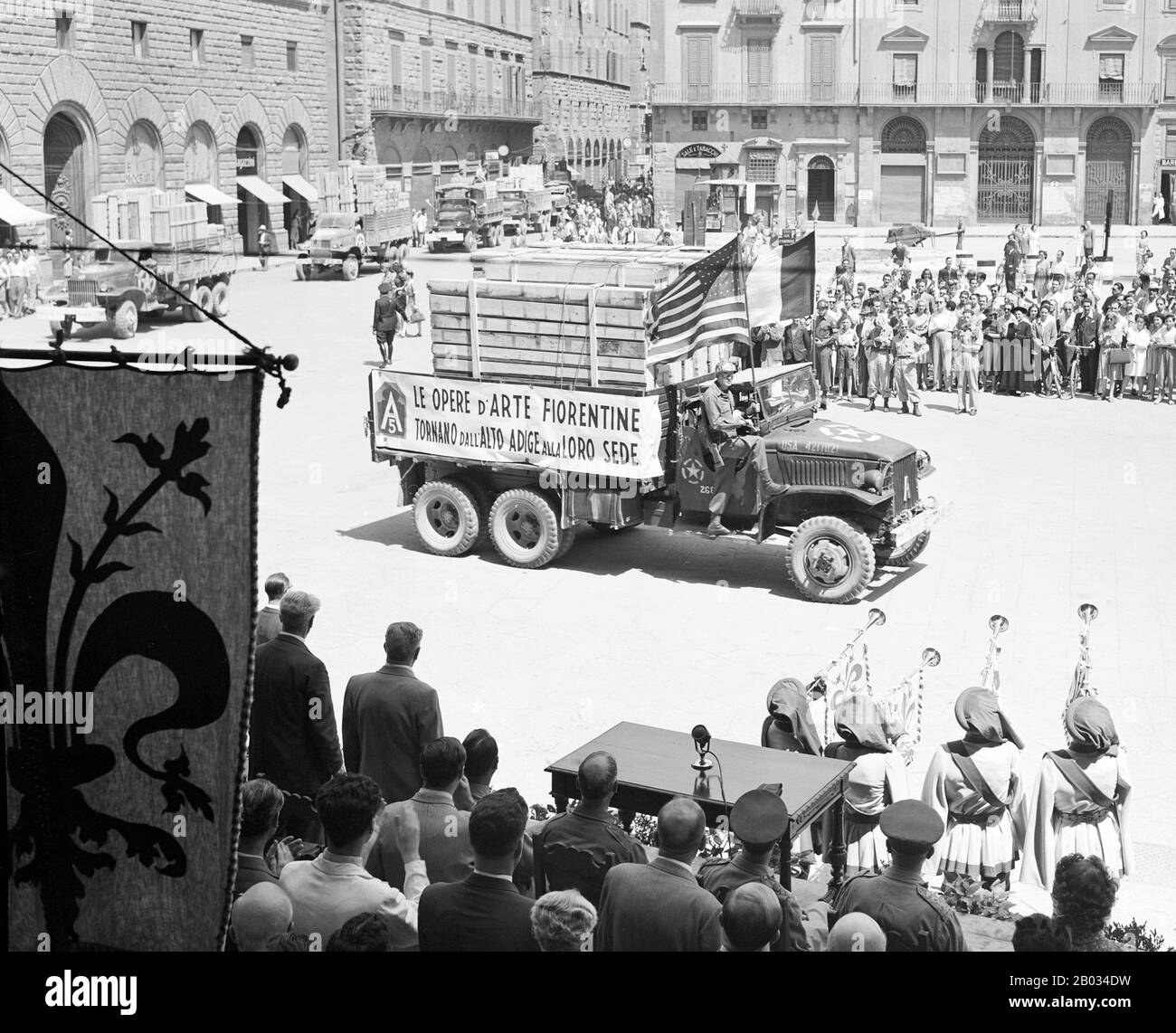 'Nazi plunder' refers to art theft and other items stolen as a result of the organized looting of European countries during the time of the Third Reich by agents acting on behalf of the ruling Nazi Party of Germany. Plundering occurred from 1933 until the end of World War II, although most plunder was acquired during the war. In addition to gold, silver and currency, cultural items of great significance were stolen, including paintings, ceramics, books, and religious treasures. Although most of these items were recovered by agents of the Monuments, Fine Arts, and Archives program (MFAA), aff Stock Photohttps://www.alamy.com/image-license-details/?v=1https://www.alamy.com/nazi-plunder-refers-to-art-theft-and-other-items-stolen-as-a-result-of-the-organized-looting-of-european-countries-during-the-time-of-the-third-reich-by-agents-acting-on-behalf-of-the-ruling-nazi-party-of-germany-plundering-occurred-from-1933-until-the-end-of-world-war-ii-although-most-plunder-was-acquired-during-the-war-in-addition-to-gold-silver-and-currency-cultural-items-of-great-significance-were-stolen-including-paintings-ceramics-books-and-religious-treasures-although-most-of-these-items-were-recovered-by-agents-of-the-monuments-fine-arts-and-archives-program-mfaa-aff-image344276741.html
'Nazi plunder' refers to art theft and other items stolen as a result of the organized looting of European countries during the time of the Third Reich by agents acting on behalf of the ruling Nazi Party of Germany. Plundering occurred from 1933 until the end of World War II, although most plunder was acquired during the war. In addition to gold, silver and currency, cultural items of great significance were stolen, including paintings, ceramics, books, and religious treasures. Although most of these items were recovered by agents of the Monuments, Fine Arts, and Archives program (MFAA), aff Stock Photohttps://www.alamy.com/image-license-details/?v=1https://www.alamy.com/nazi-plunder-refers-to-art-theft-and-other-items-stolen-as-a-result-of-the-organized-looting-of-european-countries-during-the-time-of-the-third-reich-by-agents-acting-on-behalf-of-the-ruling-nazi-party-of-germany-plundering-occurred-from-1933-until-the-end-of-world-war-ii-although-most-plunder-was-acquired-during-the-war-in-addition-to-gold-silver-and-currency-cultural-items-of-great-significance-were-stolen-including-paintings-ceramics-books-and-religious-treasures-although-most-of-these-items-were-recovered-by-agents-of-the-monuments-fine-arts-and-archives-program-mfaa-aff-image344276741.htmlRM2B034DW–'Nazi plunder' refers to art theft and other items stolen as a result of the organized looting of European countries during the time of the Third Reich by agents acting on behalf of the ruling Nazi Party of Germany. Plundering occurred from 1933 until the end of World War II, although most plunder was acquired during the war. In addition to gold, silver and currency, cultural items of great significance were stolen, including paintings, ceramics, books, and religious treasures. Although most of these items were recovered by agents of the Monuments, Fine Arts, and Archives program (MFAA), aff
 Pyramids of Meroë, Great pyramid N6. Nestled in the heart of Sudan's desert, the Pyramids of Meroë stand as timeless sentinels of the ancient Kushite kingdom. Among these, the Great Pyramid N6, once a majestic mausoleum for Queen Amanishakheto, tells a tale of grandeur and loss. Erected to honor the powerful queen who reigned in prosperity, this pyramid was a testament to the architectural prowess and rich cultural heritage of Meroë. However, its legacy was marred in the 1830s when treasure-hunter Giuseppe Ferlini, driven by greed, inflicted irreparable damage in his quest for gold. Stock Photohttps://www.alamy.com/image-license-details/?v=1https://www.alamy.com/pyramids-of-mero-great-pyramid-n6-nestled-in-the-heart-of-sudans-desert-the-pyramids-of-mero-stand-as-timeless-sentinels-of-the-ancient-kushite-kingdom-among-these-the-great-pyramid-n6-once-a-majestic-mausoleum-for-queen-amanishakheto-tells-a-tale-of-grandeur-and-loss-erected-to-honor-the-powerful-queen-who-reigned-in-prosperity-this-pyramid-was-a-testament-to-the-architectural-prowess-and-rich-cultural-heritage-of-mero-however-its-legacy-was-marred-in-the-1830s-when-treasure-hunter-giuseppe-ferlini-driven-by-greed-inflicted-irreparable-damage-in-his-quest-for-gold-image598397069.html
Pyramids of Meroë, Great pyramid N6. Nestled in the heart of Sudan's desert, the Pyramids of Meroë stand as timeless sentinels of the ancient Kushite kingdom. Among these, the Great Pyramid N6, once a majestic mausoleum for Queen Amanishakheto, tells a tale of grandeur and loss. Erected to honor the powerful queen who reigned in prosperity, this pyramid was a testament to the architectural prowess and rich cultural heritage of Meroë. However, its legacy was marred in the 1830s when treasure-hunter Giuseppe Ferlini, driven by greed, inflicted irreparable damage in his quest for gold. Stock Photohttps://www.alamy.com/image-license-details/?v=1https://www.alamy.com/pyramids-of-mero-great-pyramid-n6-nestled-in-the-heart-of-sudans-desert-the-pyramids-of-mero-stand-as-timeless-sentinels-of-the-ancient-kushite-kingdom-among-these-the-great-pyramid-n6-once-a-majestic-mausoleum-for-queen-amanishakheto-tells-a-tale-of-grandeur-and-loss-erected-to-honor-the-powerful-queen-who-reigned-in-prosperity-this-pyramid-was-a-testament-to-the-architectural-prowess-and-rich-cultural-heritage-of-mero-however-its-legacy-was-marred-in-the-1830s-when-treasure-hunter-giuseppe-ferlini-driven-by-greed-inflicted-irreparable-damage-in-his-quest-for-gold-image598397069.htmlRM2WNF9FW–Pyramids of Meroë, Great pyramid N6. Nestled in the heart of Sudan's desert, the Pyramids of Meroë stand as timeless sentinels of the ancient Kushite kingdom. Among these, the Great Pyramid N6, once a majestic mausoleum for Queen Amanishakheto, tells a tale of grandeur and loss. Erected to honor the powerful queen who reigned in prosperity, this pyramid was a testament to the architectural prowess and rich cultural heritage of Meroë. However, its legacy was marred in the 1830s when treasure-hunter Giuseppe Ferlini, driven by greed, inflicted irreparable damage in his quest for gold.
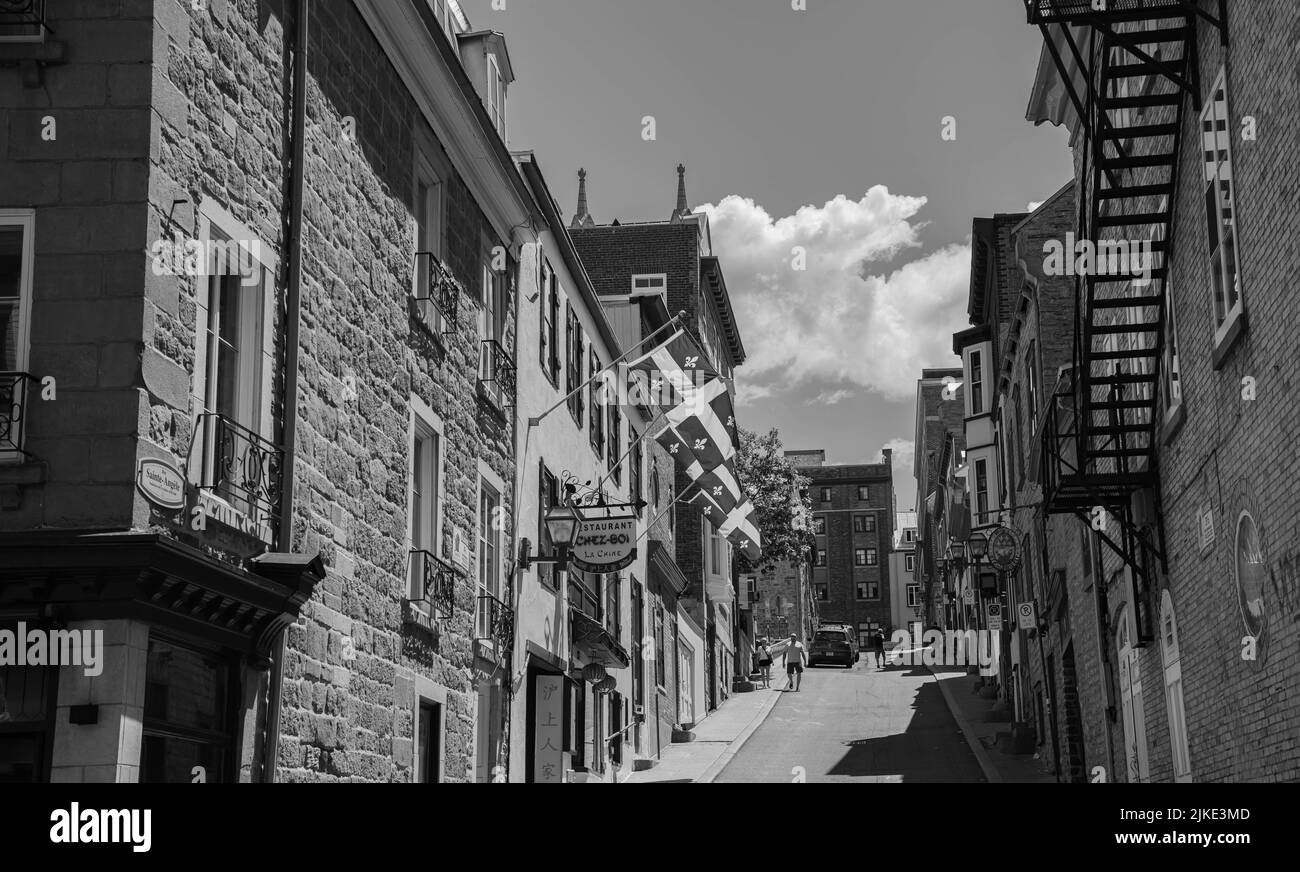 Quebec City, Canada - July, 2022: old city (downtown part) is the major attraction for world travelers in summer and winter time Stock Photohttps://www.alamy.com/image-license-details/?v=1https://www.alamy.com/quebec-city-canada-july-2022-old-city-downtown-part-is-the-major-attraction-for-world-travelers-in-summer-and-winter-time-image476668653.html
Quebec City, Canada - July, 2022: old city (downtown part) is the major attraction for world travelers in summer and winter time Stock Photohttps://www.alamy.com/image-license-details/?v=1https://www.alamy.com/quebec-city-canada-july-2022-old-city-downtown-part-is-the-major-attraction-for-world-travelers-in-summer-and-winter-time-image476668653.htmlRF2JKE3MD–Quebec City, Canada - July, 2022: old city (downtown part) is the major attraction for world travelers in summer and winter time
 The International Exhibition: "The Auction - Last Day of the Sale", by G.B. O'Neil, 1862. Auction after a clergyman's death. '...the aged partner and his comely daughter, in the first bloom of womanhood, are left without the means of preserving the family treasures endeared by so many associations of affection...Already-although both are still in the deepest mourning - everything must be sold...Not one person in the room has a look or a care for the widow and the fatherless...Our auctioneer is the very type of his class - an arch-hypocrite, hard-featured, impassible, yet perfectly aw Stock Photohttps://www.alamy.com/image-license-details/?v=1https://www.alamy.com/the-international-exhibition-quotthe-auction-last-day-of-the-salequot-by-gb-oneil-1862-auction-after-a-clergymans-death-the-aged-partner-and-his-comely-daughter-in-the-first-bloom-of-womanhood-are-left-without-the-means-of-preserving-the-family-treasures-endeared-by-so-many-associations-of-affectionalready-although-both-are-still-in-the-deepest-mourning-everything-must-be-soldnot-one-person-in-the-room-has-a-look-or-a-care-for-the-widow-and-the-fatherlessour-auctioneer-is-the-very-type-of-his-class-an-arch-hypocrite-hard-featured-impassible-yet-perfectly-aw-image595001869.html
The International Exhibition: "The Auction - Last Day of the Sale", by G.B. O'Neil, 1862. Auction after a clergyman's death. '...the aged partner and his comely daughter, in the first bloom of womanhood, are left without the means of preserving the family treasures endeared by so many associations of affection...Already-although both are still in the deepest mourning - everything must be sold...Not one person in the room has a look or a care for the widow and the fatherless...Our auctioneer is the very type of his class - an arch-hypocrite, hard-featured, impassible, yet perfectly aw Stock Photohttps://www.alamy.com/image-license-details/?v=1https://www.alamy.com/the-international-exhibition-quotthe-auction-last-day-of-the-salequot-by-gb-oneil-1862-auction-after-a-clergymans-death-the-aged-partner-and-his-comely-daughter-in-the-first-bloom-of-womanhood-are-left-without-the-means-of-preserving-the-family-treasures-endeared-by-so-many-associations-of-affectionalready-although-both-are-still-in-the-deepest-mourning-everything-must-be-soldnot-one-person-in-the-room-has-a-look-or-a-care-for-the-widow-and-the-fatherlessour-auctioneer-is-the-very-type-of-his-class-an-arch-hypocrite-hard-featured-impassible-yet-perfectly-aw-image595001869.htmlRM2WG0JXN–The International Exhibition: "The Auction - Last Day of the Sale", by G.B. O'Neil, 1862. Auction after a clergyman's death. '...the aged partner and his comely daughter, in the first bloom of womanhood, are left without the means of preserving the family treasures endeared by so many associations of affection...Already-although both are still in the deepest mourning - everything must be sold...Not one person in the room has a look or a care for the widow and the fatherless...Our auctioneer is the very type of his class - an arch-hypocrite, hard-featured, impassible, yet perfectly aw
 hand and inkstand Stock Photohttps://www.alamy.com/image-license-details/?v=1https://www.alamy.com/hand-and-inkstand-image459863522.html
hand and inkstand Stock Photohttps://www.alamy.com/image-license-details/?v=1https://www.alamy.com/hand-and-inkstand-image459863522.htmlRF2HM4GH6–hand and inkstand
 Florence, Italy - 29 December, 2023: The Galleria dell'Accademia di Firenze, or 'Gallery of the Academy of Florence', an art museum in Florence, Italy Stock Photohttps://www.alamy.com/image-license-details/?v=1https://www.alamy.com/florence-italy-29-december-2023-the-galleria-dellaccademia-di-firenze-or-gallery-of-the-academy-of-florence-an-art-museum-in-florence-italy-image606402053.html
Florence, Italy - 29 December, 2023: The Galleria dell'Accademia di Firenze, or 'Gallery of the Academy of Florence', an art museum in Florence, Italy Stock Photohttps://www.alamy.com/image-license-details/?v=1https://www.alamy.com/florence-italy-29-december-2023-the-galleria-dellaccademia-di-firenze-or-gallery-of-the-academy-of-florence-an-art-museum-in-florence-italy-image606402053.htmlRF2X6G005–Florence, Italy - 29 December, 2023: The Galleria dell'Accademia di Firenze, or 'Gallery of the Academy of Florence', an art museum in Florence, Italy
 PEKING OPERA combines music mime dance and vocal performance Stock Photohttps://www.alamy.com/image-license-details/?v=1https://www.alamy.com/peking-opera-combines-music-mime-dance-and-vocal-performance-image449461213.html
PEKING OPERA combines music mime dance and vocal performance Stock Photohttps://www.alamy.com/image-license-details/?v=1https://www.alamy.com/peking-opera-combines-music-mime-dance-and-vocal-performance-image449461213.htmlRM2H36MA5–PEKING OPERA combines music mime dance and vocal performance
RF2WKE0CH–Cultural Vienna architecture icon outline vector. Historic metropolis wonder. Iconic mansion house
 Decorated scarab found in Tutankhamen's tomb. The Treasures of Tutankhamen, The Exhibition Catalogue by I E S Edwards, page 128. Stock Photohttps://www.alamy.com/image-license-details/?v=1https://www.alamy.com/decorated-scarab-found-in-tutankhamens-tomb-the-treasures-of-tutankhamen-the-exhibition-catalogue-by-i-e-s-edwards-page-128-image268793611.html
Decorated scarab found in Tutankhamen's tomb. The Treasures of Tutankhamen, The Exhibition Catalogue by I E S Edwards, page 128. Stock Photohttps://www.alamy.com/image-license-details/?v=1https://www.alamy.com/decorated-scarab-found-in-tutankhamens-tomb-the-treasures-of-tutankhamen-the-exhibition-catalogue-by-i-e-s-edwards-page-128-image268793611.htmlRMWH8GYR–Decorated scarab found in Tutankhamen's tomb. The Treasures of Tutankhamen, The Exhibition Catalogue by I E S Edwards, page 128.
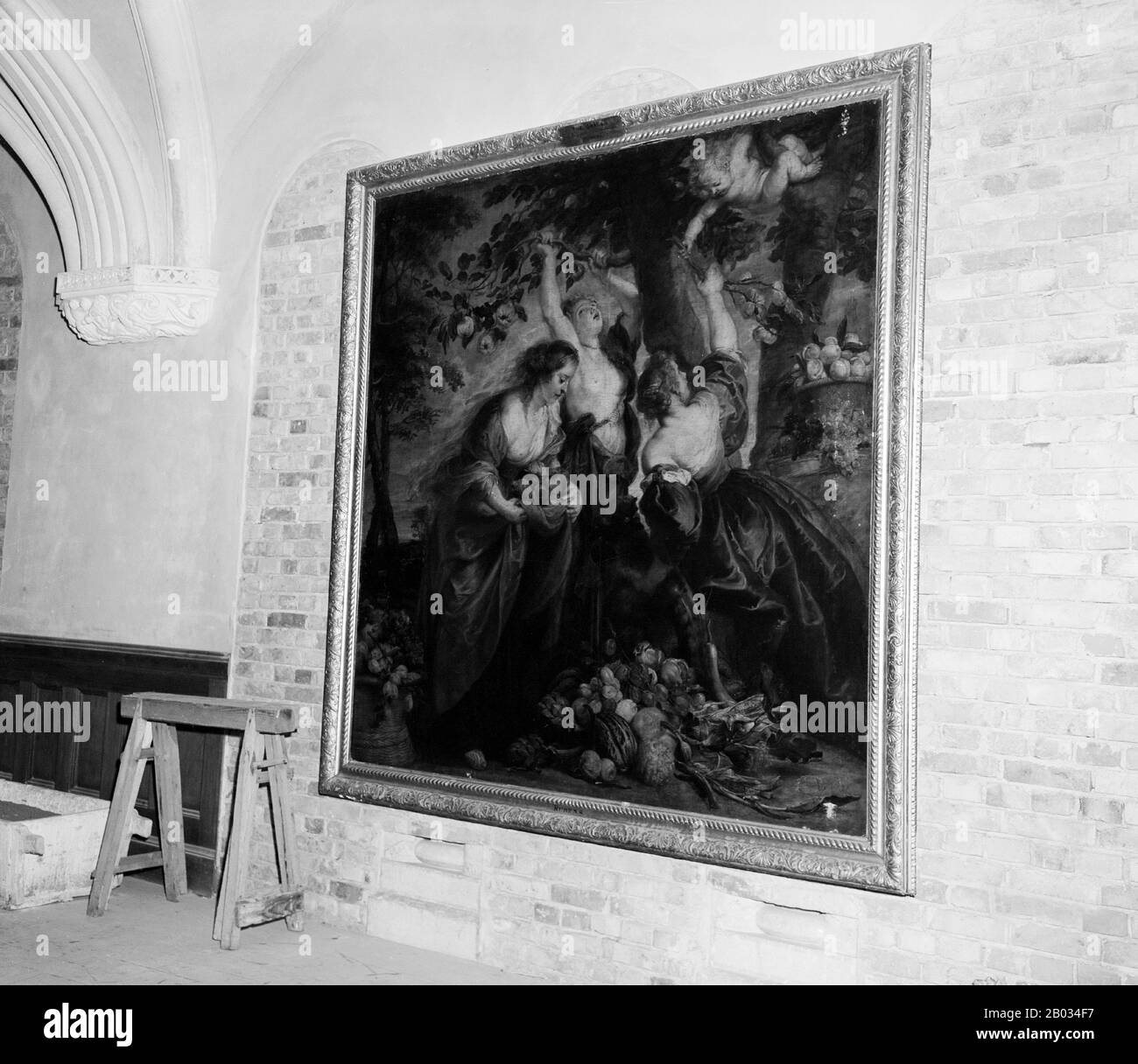 'Nazi plunder' refers to art theft and other items stolen as a result of the organized looting of European countries during the time of the Third Reich by agents acting on behalf of the ruling Nazi Party of Germany. Plundering occurred from 1933 until the end of World War II, although most plunder was acquired during the war. In addition to gold, silver and currency, cultural items of great significance were stolen, including paintings, ceramics, books, and religious treasures. Although most of these items were recovered by agents of the Monuments, Fine Arts, and Archives program (MFAA), affe Stock Photohttps://www.alamy.com/image-license-details/?v=1https://www.alamy.com/nazi-plunder-refers-to-art-theft-and-other-items-stolen-as-a-result-of-the-organized-looting-of-european-countries-during-the-time-of-the-third-reich-by-agents-acting-on-behalf-of-the-ruling-nazi-party-of-germany-plundering-occurred-from-1933-until-the-end-of-world-war-ii-although-most-plunder-was-acquired-during-the-war-in-addition-to-gold-silver-and-currency-cultural-items-of-great-significance-were-stolen-including-paintings-ceramics-books-and-religious-treasures-although-most-of-these-items-were-recovered-by-agents-of-the-monuments-fine-arts-and-archives-program-mfaa-affe-image344276779.html
'Nazi plunder' refers to art theft and other items stolen as a result of the organized looting of European countries during the time of the Third Reich by agents acting on behalf of the ruling Nazi Party of Germany. Plundering occurred from 1933 until the end of World War II, although most plunder was acquired during the war. In addition to gold, silver and currency, cultural items of great significance were stolen, including paintings, ceramics, books, and religious treasures. Although most of these items were recovered by agents of the Monuments, Fine Arts, and Archives program (MFAA), affe Stock Photohttps://www.alamy.com/image-license-details/?v=1https://www.alamy.com/nazi-plunder-refers-to-art-theft-and-other-items-stolen-as-a-result-of-the-organized-looting-of-european-countries-during-the-time-of-the-third-reich-by-agents-acting-on-behalf-of-the-ruling-nazi-party-of-germany-plundering-occurred-from-1933-until-the-end-of-world-war-ii-although-most-plunder-was-acquired-during-the-war-in-addition-to-gold-silver-and-currency-cultural-items-of-great-significance-were-stolen-including-paintings-ceramics-books-and-religious-treasures-although-most-of-these-items-were-recovered-by-agents-of-the-monuments-fine-arts-and-archives-program-mfaa-affe-image344276779.htmlRM2B034F7–'Nazi plunder' refers to art theft and other items stolen as a result of the organized looting of European countries during the time of the Third Reich by agents acting on behalf of the ruling Nazi Party of Germany. Plundering occurred from 1933 until the end of World War II, although most plunder was acquired during the war. In addition to gold, silver and currency, cultural items of great significance were stolen, including paintings, ceramics, books, and religious treasures. Although most of these items were recovered by agents of the Monuments, Fine Arts, and Archives program (MFAA), affe
 The Lycian tombs at Cyaneae (Kyaneai), near Yavu in the Antalya Province of Turkey, are a fascinating testament to the ancient Lycian civilization, renowned for its unique funerary architecture. Carved directly into the rock faces of the Taurus Mountains, these tombs date back to the 4th century BCE and reflect the Lycians' beliefs about death and the afterlife. The tombs are distinguished by their elaborate façades, which mimic the architectural styles of Lycian wooden houses and temples, featuring intricate reliefs and inscriptions that offer invaluable insights into the social structure Stock Photohttps://www.alamy.com/image-license-details/?v=1https://www.alamy.com/the-lycian-tombs-at-cyaneae-kyaneai-near-yavu-in-the-antalya-province-of-turkey-are-a-fascinating-testament-to-the-ancient-lycian-civilization-renowned-for-its-unique-funerary-architecture-carved-directly-into-the-rock-faces-of-the-taurus-mountains-these-tombs-date-back-to-the-4th-century-bce-and-reflect-the-lycians-beliefs-about-death-and-the-afterlife-the-tombs-are-distinguished-by-their-elaborate-faades-which-mimic-the-architectural-styles-of-lycian-wooden-houses-and-temples-featuring-intricate-reliefs-and-inscriptions-that-offer-invaluable-insights-into-the-social-structure-image597903922.html
The Lycian tombs at Cyaneae (Kyaneai), near Yavu in the Antalya Province of Turkey, are a fascinating testament to the ancient Lycian civilization, renowned for its unique funerary architecture. Carved directly into the rock faces of the Taurus Mountains, these tombs date back to the 4th century BCE and reflect the Lycians' beliefs about death and the afterlife. The tombs are distinguished by their elaborate façades, which mimic the architectural styles of Lycian wooden houses and temples, featuring intricate reliefs and inscriptions that offer invaluable insights into the social structure Stock Photohttps://www.alamy.com/image-license-details/?v=1https://www.alamy.com/the-lycian-tombs-at-cyaneae-kyaneai-near-yavu-in-the-antalya-province-of-turkey-are-a-fascinating-testament-to-the-ancient-lycian-civilization-renowned-for-its-unique-funerary-architecture-carved-directly-into-the-rock-faces-of-the-taurus-mountains-these-tombs-date-back-to-the-4th-century-bce-and-reflect-the-lycians-beliefs-about-death-and-the-afterlife-the-tombs-are-distinguished-by-their-elaborate-faades-which-mimic-the-architectural-styles-of-lycian-wooden-houses-and-temples-featuring-intricate-reliefs-and-inscriptions-that-offer-invaluable-insights-into-the-social-structure-image597903922.htmlRM2WMMTFE–The Lycian tombs at Cyaneae (Kyaneai), near Yavu in the Antalya Province of Turkey, are a fascinating testament to the ancient Lycian civilization, renowned for its unique funerary architecture. Carved directly into the rock faces of the Taurus Mountains, these tombs date back to the 4th century BCE and reflect the Lycians' beliefs about death and the afterlife. The tombs are distinguished by their elaborate façades, which mimic the architectural styles of Lycian wooden houses and temples, featuring intricate reliefs and inscriptions that offer invaluable insights into the social structure
 Interior view of the Manchester Exhibition, 1857 (late 19th century). Artist: Unknown Stock Photohttps://www.alamy.com/image-license-details/?v=1https://www.alamy.com/interior-view-of-the-manchester-exhibition-1857-late-19th-century-artist-unknown-image262757293.html
Interior view of the Manchester Exhibition, 1857 (late 19th century). Artist: Unknown Stock Photohttps://www.alamy.com/image-license-details/?v=1https://www.alamy.com/interior-view-of-the-manchester-exhibition-1857-late-19th-century-artist-unknown-image262757293.htmlRMW7DHH1–Interior view of the Manchester Exhibition, 1857 (late 19th century). Artist: Unknown
 hand and inkstand Stock Photohttps://www.alamy.com/image-license-details/?v=1https://www.alamy.com/hand-and-inkstand-image459863591.html
hand and inkstand Stock Photohttps://www.alamy.com/image-license-details/?v=1https://www.alamy.com/hand-and-inkstand-image459863591.htmlRF2HM4GKK–hand and inkstand
 Florence, Italy - 29 December, 2023: The Galleria dell'Accademia di Firenze, or 'Gallery of the Academy of Florence', an art museum in Florence, Italy Stock Photohttps://www.alamy.com/image-license-details/?v=1https://www.alamy.com/florence-italy-29-december-2023-the-galleria-dellaccademia-di-firenze-or-gallery-of-the-academy-of-florence-an-art-museum-in-florence-italy-image606402137.html
Florence, Italy - 29 December, 2023: The Galleria dell'Accademia di Firenze, or 'Gallery of the Academy of Florence', an art museum in Florence, Italy Stock Photohttps://www.alamy.com/image-license-details/?v=1https://www.alamy.com/florence-italy-29-december-2023-the-galleria-dellaccademia-di-firenze-or-gallery-of-the-academy-of-florence-an-art-museum-in-florence-italy-image606402137.htmlRF2X6G035–Florence, Italy - 29 December, 2023: The Galleria dell'Accademia di Firenze, or 'Gallery of the Academy of Florence', an art museum in Florence, Italy
 PEKING OPERA combines music mime dance and vocal performance Stock Photohttps://www.alamy.com/image-license-details/?v=1https://www.alamy.com/peking-opera-combines-music-mime-dance-and-vocal-performance-image449461167.html
PEKING OPERA combines music mime dance and vocal performance Stock Photohttps://www.alamy.com/image-license-details/?v=1https://www.alamy.com/peking-opera-combines-music-mime-dance-and-vocal-performance-image449461167.htmlRM2H36M8F–PEKING OPERA combines music mime dance and vocal performance
RF2WKE1K4–Vienna cultural hub icon outline vector. Iconic historical buildings. Famous belvedere palace
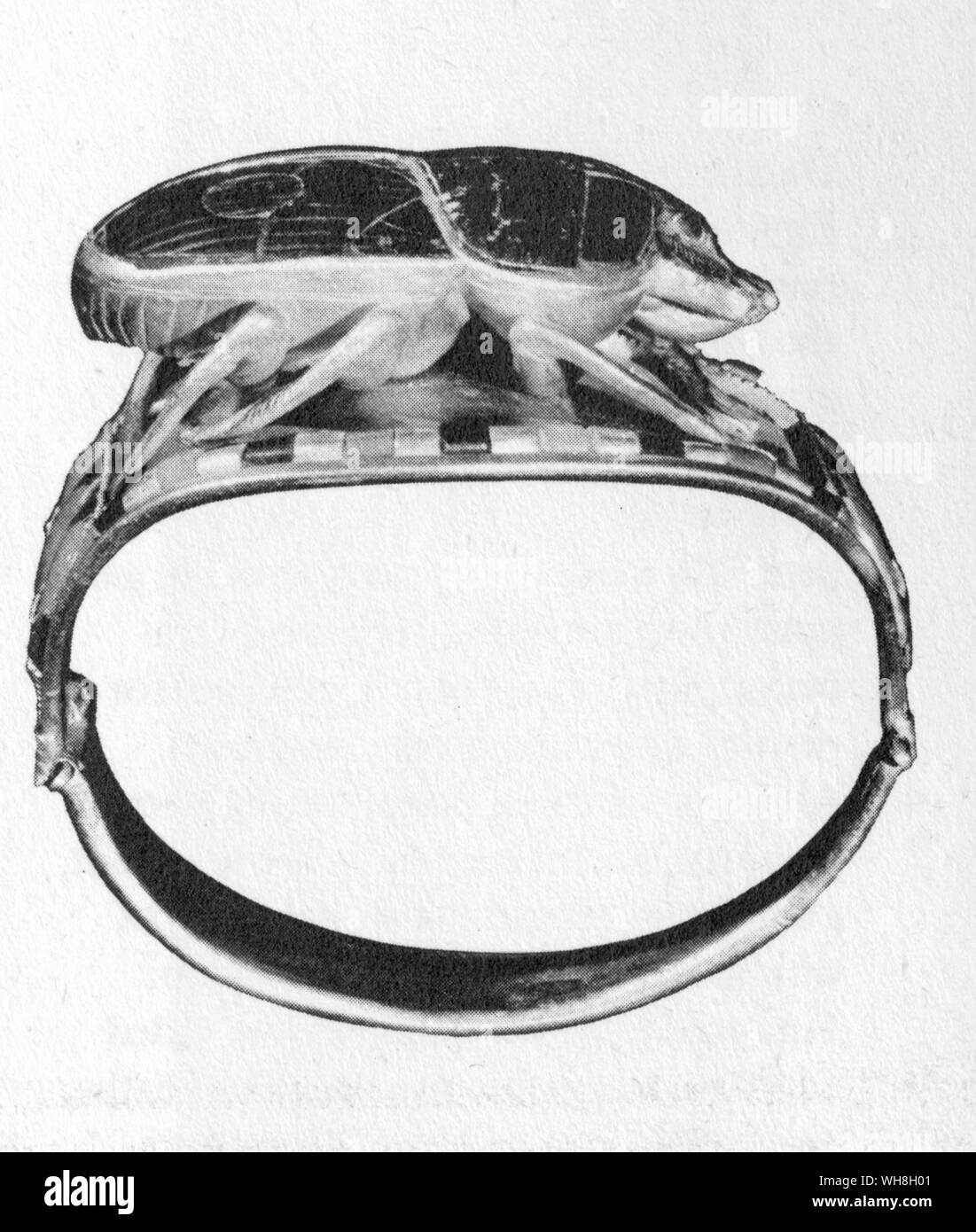 Scarab bracelet found in Tutankhamen's tomb. The Treasures of Tutankhamen, The Exhibition Catalogue by I E S Edwards, page 129. Stock Photohttps://www.alamy.com/image-license-details/?v=1https://www.alamy.com/scarab-bracelet-found-in-tutankhamens-tomb-the-treasures-of-tutankhamen-the-exhibition-catalogue-by-i-e-s-edwards-page-129-image268793617.html
Scarab bracelet found in Tutankhamen's tomb. The Treasures of Tutankhamen, The Exhibition Catalogue by I E S Edwards, page 129. Stock Photohttps://www.alamy.com/image-license-details/?v=1https://www.alamy.com/scarab-bracelet-found-in-tutankhamens-tomb-the-treasures-of-tutankhamen-the-exhibition-catalogue-by-i-e-s-edwards-page-129-image268793617.htmlRMWH8H01–Scarab bracelet found in Tutankhamen's tomb. The Treasures of Tutankhamen, The Exhibition Catalogue by I E S Edwards, page 129.
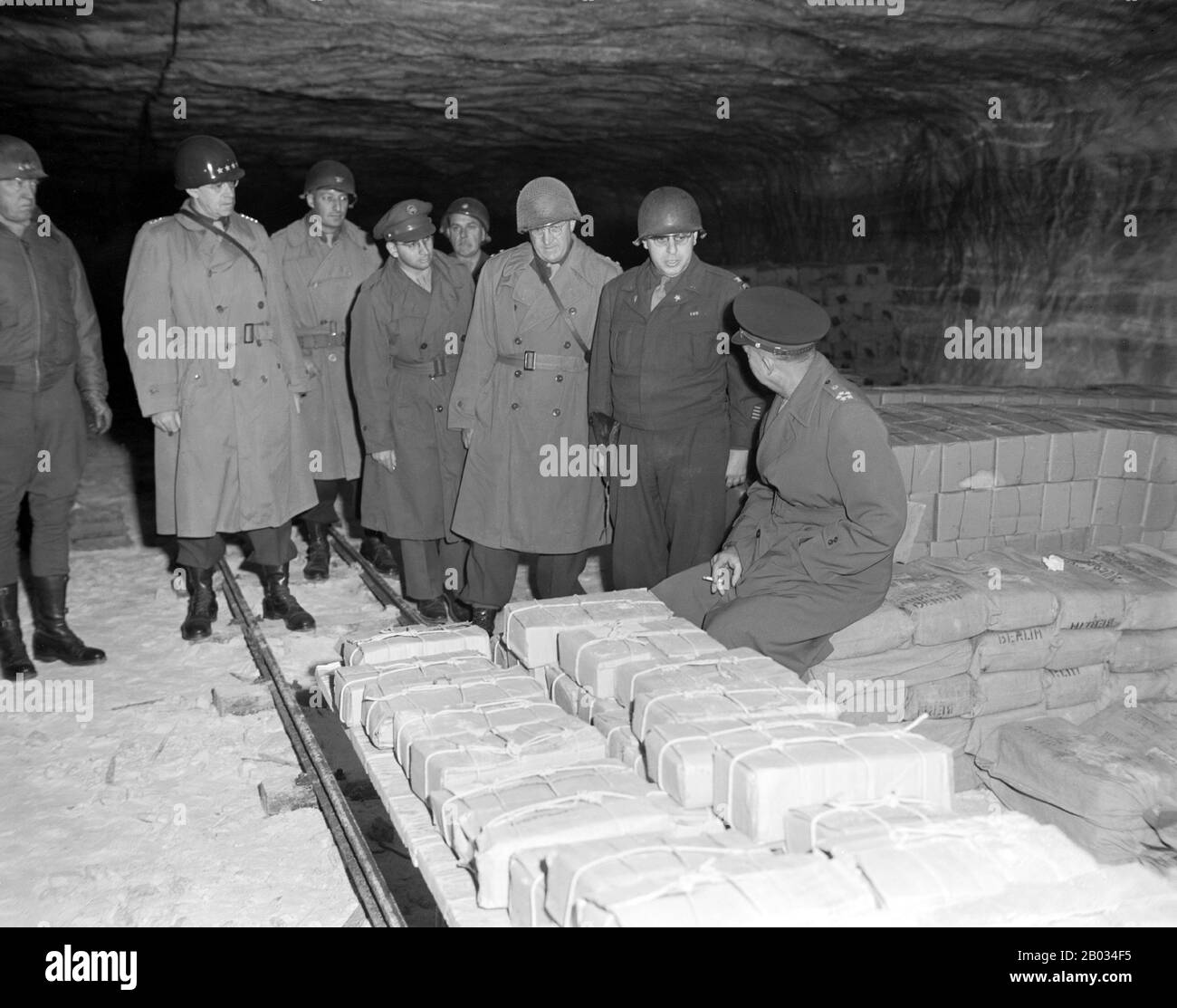 'Nazi plunder' refers to art theft and other items stolen as a result of the organized looting of European countries during the time of the Third Reich by agents acting on behalf of the ruling Nazi Party of Germany. Plundering occurred from 1933 until the end of World War II, although most plunder was acquired during the war. In addition to gold, silver and currency, cultural items of great significance were stolen, including paintings, ceramics, books, and religious treasures. Although most of these items were recovered by agents of the Monuments, Fine Arts, and Archives program (MFAA), affe Stock Photohttps://www.alamy.com/image-license-details/?v=1https://www.alamy.com/nazi-plunder-refers-to-art-theft-and-other-items-stolen-as-a-result-of-the-organized-looting-of-european-countries-during-the-time-of-the-third-reich-by-agents-acting-on-behalf-of-the-ruling-nazi-party-of-germany-plundering-occurred-from-1933-until-the-end-of-world-war-ii-although-most-plunder-was-acquired-during-the-war-in-addition-to-gold-silver-and-currency-cultural-items-of-great-significance-were-stolen-including-paintings-ceramics-books-and-religious-treasures-although-most-of-these-items-were-recovered-by-agents-of-the-monuments-fine-arts-and-archives-program-mfaa-affe-image344276777.html
'Nazi plunder' refers to art theft and other items stolen as a result of the organized looting of European countries during the time of the Third Reich by agents acting on behalf of the ruling Nazi Party of Germany. Plundering occurred from 1933 until the end of World War II, although most plunder was acquired during the war. In addition to gold, silver and currency, cultural items of great significance were stolen, including paintings, ceramics, books, and religious treasures. Although most of these items were recovered by agents of the Monuments, Fine Arts, and Archives program (MFAA), affe Stock Photohttps://www.alamy.com/image-license-details/?v=1https://www.alamy.com/nazi-plunder-refers-to-art-theft-and-other-items-stolen-as-a-result-of-the-organized-looting-of-european-countries-during-the-time-of-the-third-reich-by-agents-acting-on-behalf-of-the-ruling-nazi-party-of-germany-plundering-occurred-from-1933-until-the-end-of-world-war-ii-although-most-plunder-was-acquired-during-the-war-in-addition-to-gold-silver-and-currency-cultural-items-of-great-significance-were-stolen-including-paintings-ceramics-books-and-religious-treasures-although-most-of-these-items-were-recovered-by-agents-of-the-monuments-fine-arts-and-archives-program-mfaa-affe-image344276777.htmlRM2B034F5–'Nazi plunder' refers to art theft and other items stolen as a result of the organized looting of European countries during the time of the Third Reich by agents acting on behalf of the ruling Nazi Party of Germany. Plundering occurred from 1933 until the end of World War II, although most plunder was acquired during the war. In addition to gold, silver and currency, cultural items of great significance were stolen, including paintings, ceramics, books, and religious treasures. Although most of these items were recovered by agents of the Monuments, Fine Arts, and Archives program (MFAA), affe
 Xerxes the Great palace hall at Persepolis, column architectural details. Amidst the ancient grandeur of Persepolis, the Column of Xerxes stands as a silent guardian of history, towering within the Great Palace Hall. This architectural marvel, dating back to the Achaemenid Empire, showcases the zenith of Persian craftsmanship under the reign of Xerxes the Great. It's a symbol of the empire's power and architectural innovation. Though centuries have passed, the column's intricate details and imposing stature continue to awe visitors Stock Photohttps://www.alamy.com/image-license-details/?v=1https://www.alamy.com/xerxes-the-great-palace-hall-at-persepolis-column-architectural-details-amidst-the-ancient-grandeur-of-persepolis-the-column-of-xerxes-stands-as-a-silent-guardian-of-history-towering-within-the-great-palace-hall-this-architectural-marvel-dating-back-to-the-achaemenid-empire-showcases-the-zenith-of-persian-craftsmanship-under-the-reign-of-xerxes-the-great-its-a-symbol-of-the-empires-power-and-architectural-innovation-though-centuries-have-passed-the-columns-intricate-details-and-imposing-stature-continue-to-awe-visitors-image598397178.html
Xerxes the Great palace hall at Persepolis, column architectural details. Amidst the ancient grandeur of Persepolis, the Column of Xerxes stands as a silent guardian of history, towering within the Great Palace Hall. This architectural marvel, dating back to the Achaemenid Empire, showcases the zenith of Persian craftsmanship under the reign of Xerxes the Great. It's a symbol of the empire's power and architectural innovation. Though centuries have passed, the column's intricate details and imposing stature continue to awe visitors Stock Photohttps://www.alamy.com/image-license-details/?v=1https://www.alamy.com/xerxes-the-great-palace-hall-at-persepolis-column-architectural-details-amidst-the-ancient-grandeur-of-persepolis-the-column-of-xerxes-stands-as-a-silent-guardian-of-history-towering-within-the-great-palace-hall-this-architectural-marvel-dating-back-to-the-achaemenid-empire-showcases-the-zenith-of-persian-craftsmanship-under-the-reign-of-xerxes-the-great-its-a-symbol-of-the-empires-power-and-architectural-innovation-though-centuries-have-passed-the-columns-intricate-details-and-imposing-stature-continue-to-awe-visitors-image598397178.htmlRM2WNF9KP–Xerxes the Great palace hall at Persepolis, column architectural details. Amidst the ancient grandeur of Persepolis, the Column of Xerxes stands as a silent guardian of history, towering within the Great Palace Hall. This architectural marvel, dating back to the Achaemenid Empire, showcases the zenith of Persian craftsmanship under the reign of Xerxes the Great. It's a symbol of the empire's power and architectural innovation. Though centuries have passed, the column's intricate details and imposing stature continue to awe visitors
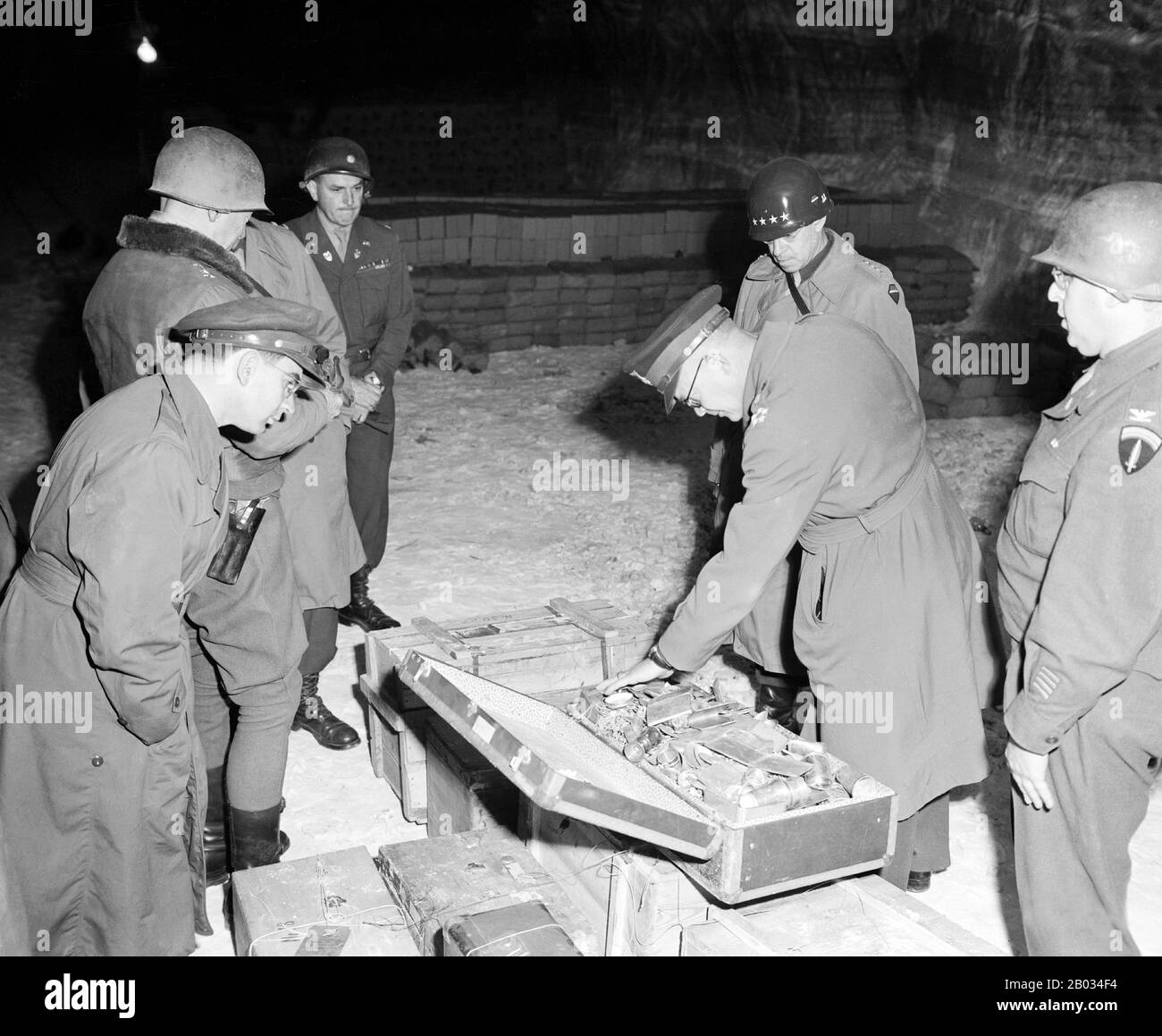 'Nazi plunder' refers to art theft and other items stolen as a result of the organized looting of European countries during the time of the Third Reich by agents acting on behalf of the ruling Nazi Party of Germany. Plundering occurred from 1933 until the end of World War II, although most plunder was acquired during the war. In addition to gold, silver and currency, cultural items of great significance were stolen, including paintings, ceramics, books, and religious treasures. Although most of these items were recovered by agents of the Monuments, Fine Arts, and Archives program (MFAA), affe Stock Photohttps://www.alamy.com/image-license-details/?v=1https://www.alamy.com/nazi-plunder-refers-to-art-theft-and-other-items-stolen-as-a-result-of-the-organized-looting-of-european-countries-during-the-time-of-the-third-reich-by-agents-acting-on-behalf-of-the-ruling-nazi-party-of-germany-plundering-occurred-from-1933-until-the-end-of-world-war-ii-although-most-plunder-was-acquired-during-the-war-in-addition-to-gold-silver-and-currency-cultural-items-of-great-significance-were-stolen-including-paintings-ceramics-books-and-religious-treasures-although-most-of-these-items-were-recovered-by-agents-of-the-monuments-fine-arts-and-archives-program-mfaa-affe-image344276776.html
'Nazi plunder' refers to art theft and other items stolen as a result of the organized looting of European countries during the time of the Third Reich by agents acting on behalf of the ruling Nazi Party of Germany. Plundering occurred from 1933 until the end of World War II, although most plunder was acquired during the war. In addition to gold, silver and currency, cultural items of great significance were stolen, including paintings, ceramics, books, and religious treasures. Although most of these items were recovered by agents of the Monuments, Fine Arts, and Archives program (MFAA), affe Stock Photohttps://www.alamy.com/image-license-details/?v=1https://www.alamy.com/nazi-plunder-refers-to-art-theft-and-other-items-stolen-as-a-result-of-the-organized-looting-of-european-countries-during-the-time-of-the-third-reich-by-agents-acting-on-behalf-of-the-ruling-nazi-party-of-germany-plundering-occurred-from-1933-until-the-end-of-world-war-ii-although-most-plunder-was-acquired-during-the-war-in-addition-to-gold-silver-and-currency-cultural-items-of-great-significance-were-stolen-including-paintings-ceramics-books-and-religious-treasures-although-most-of-these-items-were-recovered-by-agents-of-the-monuments-fine-arts-and-archives-program-mfaa-affe-image344276776.htmlRM2B034F4–'Nazi plunder' refers to art theft and other items stolen as a result of the organized looting of European countries during the time of the Third Reich by agents acting on behalf of the ruling Nazi Party of Germany. Plundering occurred from 1933 until the end of World War II, although most plunder was acquired during the war. In addition to gold, silver and currency, cultural items of great significance were stolen, including paintings, ceramics, books, and religious treasures. Although most of these items were recovered by agents of the Monuments, Fine Arts, and Archives program (MFAA), affe
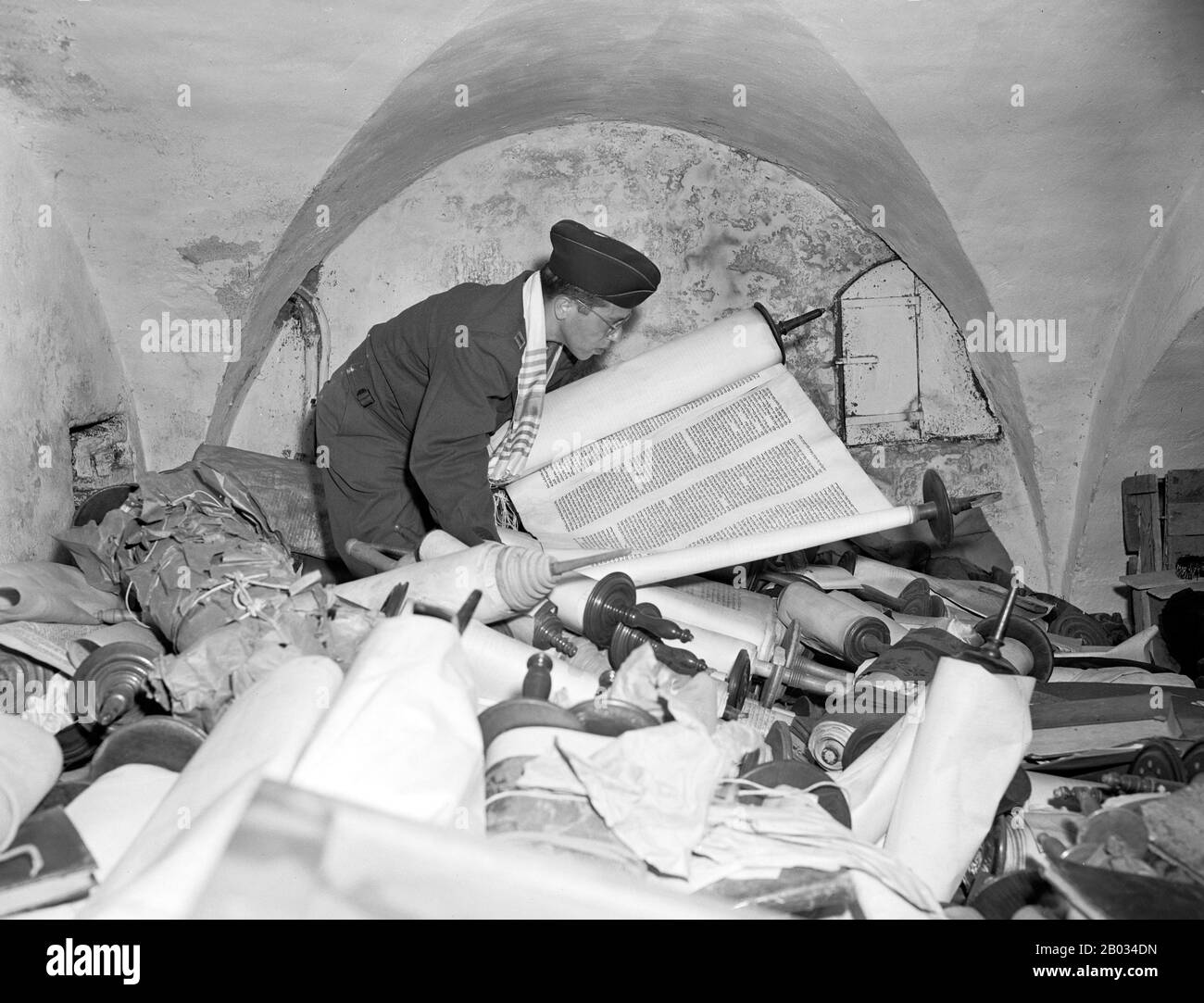 'Nazi plunder' refers to art theft and other items stolen as a result of the organized looting of European countries during the time of the Third Reich by agents acting on behalf of the ruling Nazi Party of Germany. Plundering occurred from 1933 until the end of World War II, although most plunder was acquired during the war. In addition to gold, silver and currency, cultural items of great significance were stolen, including paintings, ceramics, books, and religious treasures. Although most of these items were recovered by agents of the Monuments, Fine Arts, and Archives program (MFAA), aff Stock Photohttps://www.alamy.com/image-license-details/?v=1https://www.alamy.com/nazi-plunder-refers-to-art-theft-and-other-items-stolen-as-a-result-of-the-organized-looting-of-european-countries-during-the-time-of-the-third-reich-by-agents-acting-on-behalf-of-the-ruling-nazi-party-of-germany-plundering-occurred-from-1933-until-the-end-of-world-war-ii-although-most-plunder-was-acquired-during-the-war-in-addition-to-gold-silver-and-currency-cultural-items-of-great-significance-were-stolen-including-paintings-ceramics-books-and-religious-treasures-although-most-of-these-items-were-recovered-by-agents-of-the-monuments-fine-arts-and-archives-program-mfaa-aff-image344276737.html
'Nazi plunder' refers to art theft and other items stolen as a result of the organized looting of European countries during the time of the Third Reich by agents acting on behalf of the ruling Nazi Party of Germany. Plundering occurred from 1933 until the end of World War II, although most plunder was acquired during the war. In addition to gold, silver and currency, cultural items of great significance were stolen, including paintings, ceramics, books, and religious treasures. Although most of these items were recovered by agents of the Monuments, Fine Arts, and Archives program (MFAA), aff Stock Photohttps://www.alamy.com/image-license-details/?v=1https://www.alamy.com/nazi-plunder-refers-to-art-theft-and-other-items-stolen-as-a-result-of-the-organized-looting-of-european-countries-during-the-time-of-the-third-reich-by-agents-acting-on-behalf-of-the-ruling-nazi-party-of-germany-plundering-occurred-from-1933-until-the-end-of-world-war-ii-although-most-plunder-was-acquired-during-the-war-in-addition-to-gold-silver-and-currency-cultural-items-of-great-significance-were-stolen-including-paintings-ceramics-books-and-religious-treasures-although-most-of-these-items-were-recovered-by-agents-of-the-monuments-fine-arts-and-archives-program-mfaa-aff-image344276737.htmlRM2B034DN–'Nazi plunder' refers to art theft and other items stolen as a result of the organized looting of European countries during the time of the Third Reich by agents acting on behalf of the ruling Nazi Party of Germany. Plundering occurred from 1933 until the end of World War II, although most plunder was acquired during the war. In addition to gold, silver and currency, cultural items of great significance were stolen, including paintings, ceramics, books, and religious treasures. Although most of these items were recovered by agents of the Monuments, Fine Arts, and Archives program (MFAA), aff
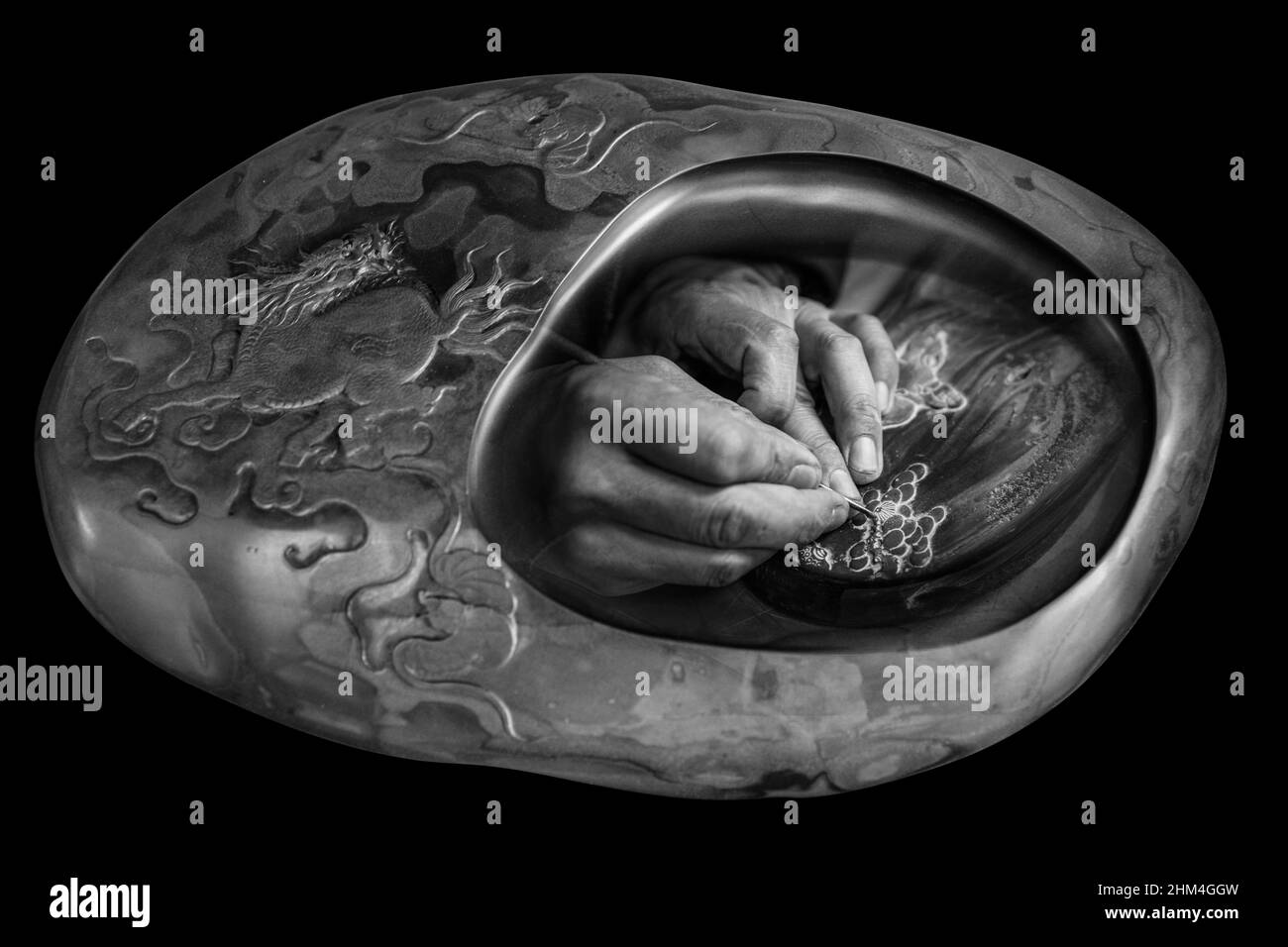 hand and inkstand Stock Photohttps://www.alamy.com/image-license-details/?v=1https://www.alamy.com/hand-and-inkstand-image459863513.html
hand and inkstand Stock Photohttps://www.alamy.com/image-license-details/?v=1https://www.alamy.com/hand-and-inkstand-image459863513.htmlRF2HM4GGW–hand and inkstand
 Florence, Italy - 29 December, 2023: The Galleria dell'Accademia di Firenze, or 'Gallery of the Academy of Florence', an art museum in Florence, Italy Stock Photohttps://www.alamy.com/image-license-details/?v=1https://www.alamy.com/florence-italy-29-december-2023-the-galleria-dellaccademia-di-firenze-or-gallery-of-the-academy-of-florence-an-art-museum-in-florence-italy-image606401998.html
Florence, Italy - 29 December, 2023: The Galleria dell'Accademia di Firenze, or 'Gallery of the Academy of Florence', an art museum in Florence, Italy Stock Photohttps://www.alamy.com/image-license-details/?v=1https://www.alamy.com/florence-italy-29-december-2023-the-galleria-dellaccademia-di-firenze-or-gallery-of-the-academy-of-florence-an-art-museum-in-florence-italy-image606401998.htmlRF2X6FYX6–Florence, Italy - 29 December, 2023: The Galleria dell'Accademia di Firenze, or 'Gallery of the Academy of Florence', an art museum in Florence, Italy
RF2WKDYC8–Belvedere palace icon outline vector. Viennese architecture. Traditional cultural edifice
 Gold figure of the King. The Treasures of Tutankhamen, The Exhibition Catalogue by I E S Edwards, page 106. Stock Photohttps://www.alamy.com/image-license-details/?v=1https://www.alamy.com/gold-figure-of-the-king-the-treasures-of-tutankhamen-the-exhibition-catalogue-by-i-e-s-edwards-page-106-image268793591.html
Gold figure of the King. The Treasures of Tutankhamen, The Exhibition Catalogue by I E S Edwards, page 106. Stock Photohttps://www.alamy.com/image-license-details/?v=1https://www.alamy.com/gold-figure-of-the-king-the-treasures-of-tutankhamen-the-exhibition-catalogue-by-i-e-s-edwards-page-106-image268793591.htmlRMWH8GY3–Gold figure of the King. The Treasures of Tutankhamen, The Exhibition Catalogue by I E S Edwards, page 106.
 'Nazi plunder' refers to art theft and other items stolen as a result of the organized looting of European countries during the time of the Third Reich by agents acting on behalf of the ruling Nazi Party of Germany. Plundering occurred from 1933 until the end of World War II, although most plunder was acquired during the war. In addition to gold, silver and currency, cultural items of great significance were stolen, including paintings, ceramics, books, and religious treasures. Although most of these items were recovered by agents of the Monuments, Fine Arts, and Archives program (MFAA), aff Stock Photohttps://www.alamy.com/image-license-details/?v=1https://www.alamy.com/nazi-plunder-refers-to-art-theft-and-other-items-stolen-as-a-result-of-the-organized-looting-of-european-countries-during-the-time-of-the-third-reich-by-agents-acting-on-behalf-of-the-ruling-nazi-party-of-germany-plundering-occurred-from-1933-until-the-end-of-world-war-ii-although-most-plunder-was-acquired-during-the-war-in-addition-to-gold-silver-and-currency-cultural-items-of-great-significance-were-stolen-including-paintings-ceramics-books-and-religious-treasures-although-most-of-these-items-were-recovered-by-agents-of-the-monuments-fine-arts-and-archives-program-mfaa-aff-image344276732.html
'Nazi plunder' refers to art theft and other items stolen as a result of the organized looting of European countries during the time of the Third Reich by agents acting on behalf of the ruling Nazi Party of Germany. Plundering occurred from 1933 until the end of World War II, although most plunder was acquired during the war. In addition to gold, silver and currency, cultural items of great significance were stolen, including paintings, ceramics, books, and religious treasures. Although most of these items were recovered by agents of the Monuments, Fine Arts, and Archives program (MFAA), aff Stock Photohttps://www.alamy.com/image-license-details/?v=1https://www.alamy.com/nazi-plunder-refers-to-art-theft-and-other-items-stolen-as-a-result-of-the-organized-looting-of-european-countries-during-the-time-of-the-third-reich-by-agents-acting-on-behalf-of-the-ruling-nazi-party-of-germany-plundering-occurred-from-1933-until-the-end-of-world-war-ii-although-most-plunder-was-acquired-during-the-war-in-addition-to-gold-silver-and-currency-cultural-items-of-great-significance-were-stolen-including-paintings-ceramics-books-and-religious-treasures-although-most-of-these-items-were-recovered-by-agents-of-the-monuments-fine-arts-and-archives-program-mfaa-aff-image344276732.htmlRM2B034DG–'Nazi plunder' refers to art theft and other items stolen as a result of the organized looting of European countries during the time of the Third Reich by agents acting on behalf of the ruling Nazi Party of Germany. Plundering occurred from 1933 until the end of World War II, although most plunder was acquired during the war. In addition to gold, silver and currency, cultural items of great significance were stolen, including paintings, ceramics, books, and religious treasures. Although most of these items were recovered by agents of the Monuments, Fine Arts, and Archives program (MFAA), aff
 hand and inkstand Stock Photohttps://www.alamy.com/image-license-details/?v=1https://www.alamy.com/hand-and-inkstand-image459863580.html
hand and inkstand Stock Photohttps://www.alamy.com/image-license-details/?v=1https://www.alamy.com/hand-and-inkstand-image459863580.htmlRF2HM4GK8–hand and inkstand
 Florence, Italy - 29 December, 2023: Palestrina Pieta by Michelangelo Buonarroti at The Galleria dell'Accademia di Firenze, or 'Gallery of the Academy Stock Photohttps://www.alamy.com/image-license-details/?v=1https://www.alamy.com/florence-italy-29-december-2023-palestrina-pieta-by-michelangelo-buonarroti-at-the-galleria-dellaccademia-di-firenze-or-gallery-of-the-academy-image606401805.html
Florence, Italy - 29 December, 2023: Palestrina Pieta by Michelangelo Buonarroti at The Galleria dell'Accademia di Firenze, or 'Gallery of the Academy Stock Photohttps://www.alamy.com/image-license-details/?v=1https://www.alamy.com/florence-italy-29-december-2023-palestrina-pieta-by-michelangelo-buonarroti-at-the-galleria-dellaccademia-di-firenze-or-gallery-of-the-academy-image606401805.htmlRF2X6FYK9–Florence, Italy - 29 December, 2023: Palestrina Pieta by Michelangelo Buonarroti at The Galleria dell'Accademia di Firenze, or 'Gallery of the Academy
RF2WKE08F–Historical Vienna icon outline vector. Architectural marvels edifice. Cultural Austrian landmarks
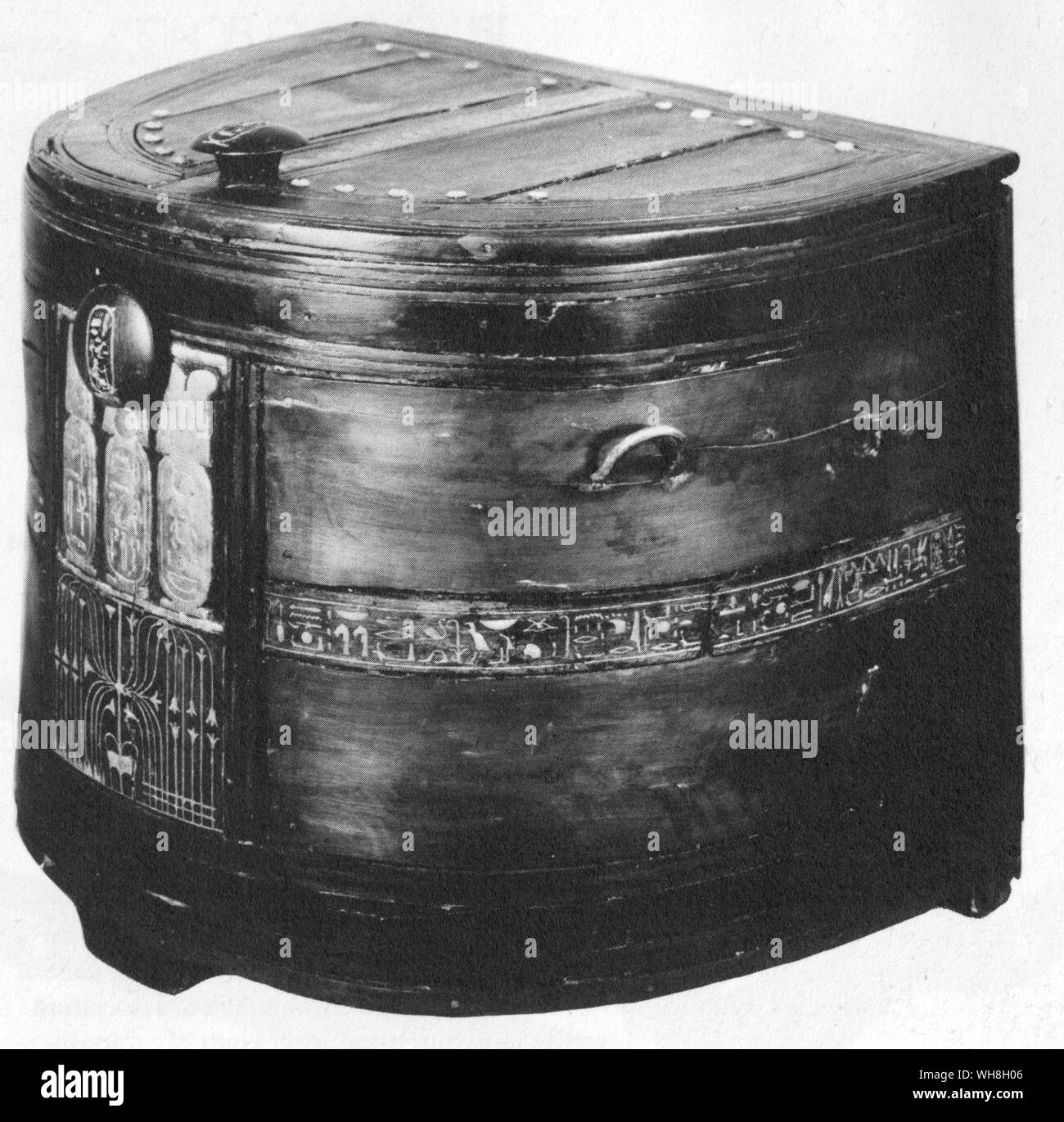 Bow fronted box found in Tutankhamen's tomb. The Treasures of Tutankhamen, The Exhibition Catalogue by I E S Edwards, page 97. Stock Photohttps://www.alamy.com/image-license-details/?v=1https://www.alamy.com/bow-fronted-box-found-in-tutankhamens-tomb-the-treasures-of-tutankhamen-the-exhibition-catalogue-by-i-e-s-edwards-page-97-image268793622.html
Bow fronted box found in Tutankhamen's tomb. The Treasures of Tutankhamen, The Exhibition Catalogue by I E S Edwards, page 97. Stock Photohttps://www.alamy.com/image-license-details/?v=1https://www.alamy.com/bow-fronted-box-found-in-tutankhamens-tomb-the-treasures-of-tutankhamen-the-exhibition-catalogue-by-i-e-s-edwards-page-97-image268793622.htmlRMWH8H06–Bow fronted box found in Tutankhamen's tomb. The Treasures of Tutankhamen, The Exhibition Catalogue by I E S Edwards, page 97.
 'Nazi plunder' refers to art theft and other items stolen as a result of the organized looting of European countries during the time of the Third Reich by agents acting on behalf of the ruling Nazi Party of Germany. Plundering occurred from 1933 until the end of World War II, although most plunder was acquired during the war. In addition to gold, silver and currency, cultural items of great significance were stolen, including paintings, ceramics, books, and religious treasures. Although most of these items were recovered by agents of the Monuments, Fine Arts, and Archives program (MFAA), aff Stock Photohttps://www.alamy.com/image-license-details/?v=1https://www.alamy.com/nazi-plunder-refers-to-art-theft-and-other-items-stolen-as-a-result-of-the-organized-looting-of-european-countries-during-the-time-of-the-third-reich-by-agents-acting-on-behalf-of-the-ruling-nazi-party-of-germany-plundering-occurred-from-1933-until-the-end-of-world-war-ii-although-most-plunder-was-acquired-during-the-war-in-addition-to-gold-silver-and-currency-cultural-items-of-great-significance-were-stolen-including-paintings-ceramics-books-and-religious-treasures-although-most-of-these-items-were-recovered-by-agents-of-the-monuments-fine-arts-and-archives-program-mfaa-aff-image344276734.html
'Nazi plunder' refers to art theft and other items stolen as a result of the organized looting of European countries during the time of the Third Reich by agents acting on behalf of the ruling Nazi Party of Germany. Plundering occurred from 1933 until the end of World War II, although most plunder was acquired during the war. In addition to gold, silver and currency, cultural items of great significance were stolen, including paintings, ceramics, books, and religious treasures. Although most of these items were recovered by agents of the Monuments, Fine Arts, and Archives program (MFAA), aff Stock Photohttps://www.alamy.com/image-license-details/?v=1https://www.alamy.com/nazi-plunder-refers-to-art-theft-and-other-items-stolen-as-a-result-of-the-organized-looting-of-european-countries-during-the-time-of-the-third-reich-by-agents-acting-on-behalf-of-the-ruling-nazi-party-of-germany-plundering-occurred-from-1933-until-the-end-of-world-war-ii-although-most-plunder-was-acquired-during-the-war-in-addition-to-gold-silver-and-currency-cultural-items-of-great-significance-were-stolen-including-paintings-ceramics-books-and-religious-treasures-although-most-of-these-items-were-recovered-by-agents-of-the-monuments-fine-arts-and-archives-program-mfaa-aff-image344276734.htmlRM2B034DJ–'Nazi plunder' refers to art theft and other items stolen as a result of the organized looting of European countries during the time of the Third Reich by agents acting on behalf of the ruling Nazi Party of Germany. Plundering occurred from 1933 until the end of World War II, although most plunder was acquired during the war. In addition to gold, silver and currency, cultural items of great significance were stolen, including paintings, ceramics, books, and religious treasures. Although most of these items were recovered by agents of the Monuments, Fine Arts, and Archives program (MFAA), aff
 hand and inkstand Stock Photohttps://www.alamy.com/image-license-details/?v=1https://www.alamy.com/hand-and-inkstand-image459863535.html
hand and inkstand Stock Photohttps://www.alamy.com/image-license-details/?v=1https://www.alamy.com/hand-and-inkstand-image459863535.htmlRF2HM4GHK–hand and inkstand
 Florence, Italy - 29 December, 2023: The Uffizi Gallery, a prominent art museum located adjacent to the Piazza della Signoria in the Historic Centre o Stock Photohttps://www.alamy.com/image-license-details/?v=1https://www.alamy.com/florence-italy-29-december-2023-the-uffizi-gallery-a-prominent-art-museum-located-adjacent-to-the-piazza-della-signoria-in-the-historic-centre-o-image606404622.html
Florence, Italy - 29 December, 2023: The Uffizi Gallery, a prominent art museum located adjacent to the Piazza della Signoria in the Historic Centre o Stock Photohttps://www.alamy.com/image-license-details/?v=1https://www.alamy.com/florence-italy-29-december-2023-the-uffizi-gallery-a-prominent-art-museum-located-adjacent-to-the-piazza-della-signoria-in-the-historic-centre-o-image606404622.htmlRF2X6G37X–Florence, Italy - 29 December, 2023: The Uffizi Gallery, a prominent art museum located adjacent to the Piazza della Signoria in the Historic Centre o
RF2WKDYHN–Viennese mansion icon outline vector. Traditional cultural treasure. Travel tourist attraction
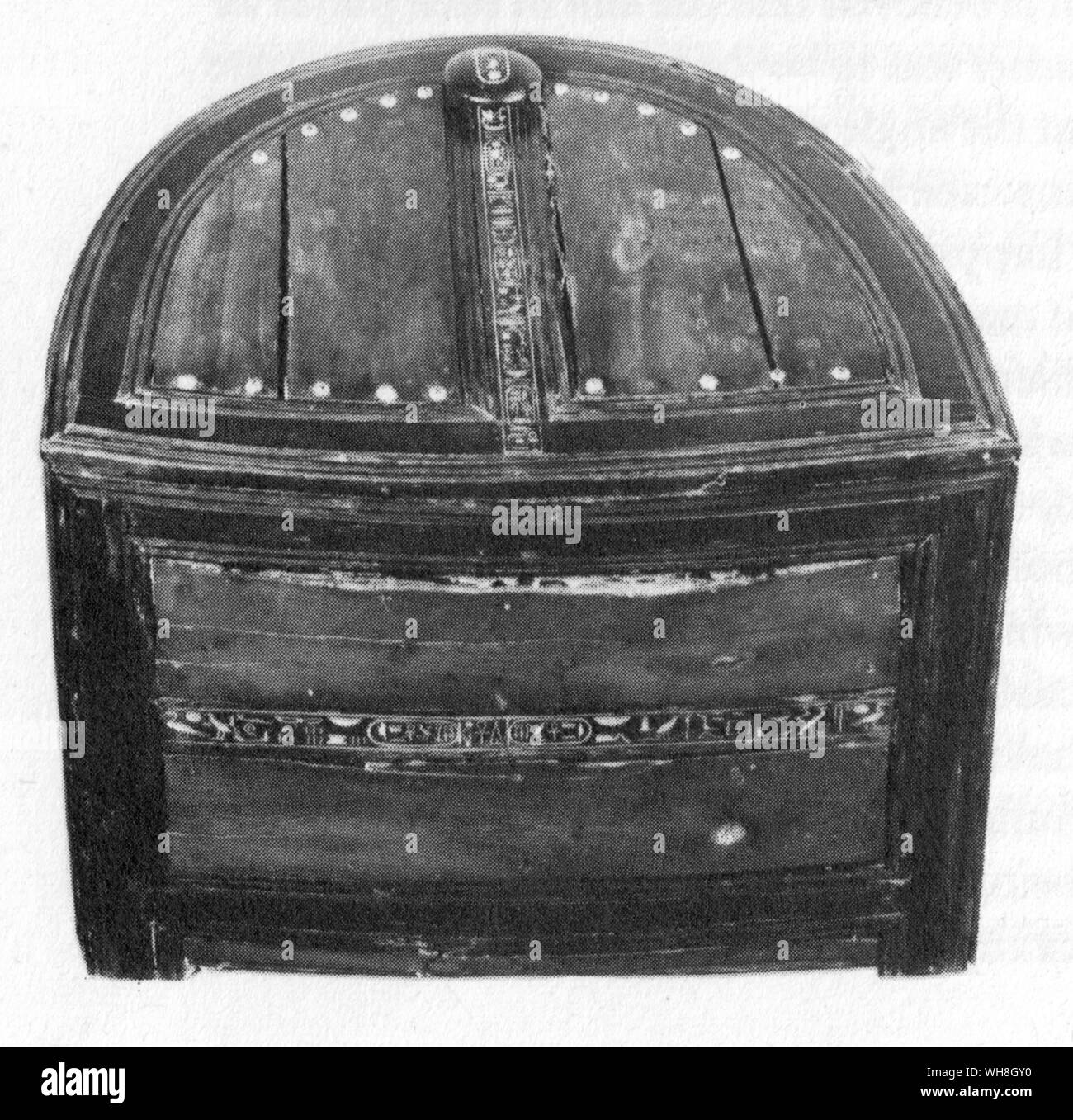 Bow fronted box found in Tutankhamen's tomb. The Treasures of Tutankhamen, The Exhibition Catalogue by I E S Edwards, page 97. Stock Photohttps://www.alamy.com/image-license-details/?v=1https://www.alamy.com/bow-fronted-box-found-in-tutankhamens-tomb-the-treasures-of-tutankhamen-the-exhibition-catalogue-by-i-e-s-edwards-page-97-image268793588.html
Bow fronted box found in Tutankhamen's tomb. The Treasures of Tutankhamen, The Exhibition Catalogue by I E S Edwards, page 97. Stock Photohttps://www.alamy.com/image-license-details/?v=1https://www.alamy.com/bow-fronted-box-found-in-tutankhamens-tomb-the-treasures-of-tutankhamen-the-exhibition-catalogue-by-i-e-s-edwards-page-97-image268793588.htmlRMWH8GY0–Bow fronted box found in Tutankhamen's tomb. The Treasures of Tutankhamen, The Exhibition Catalogue by I E S Edwards, page 97.
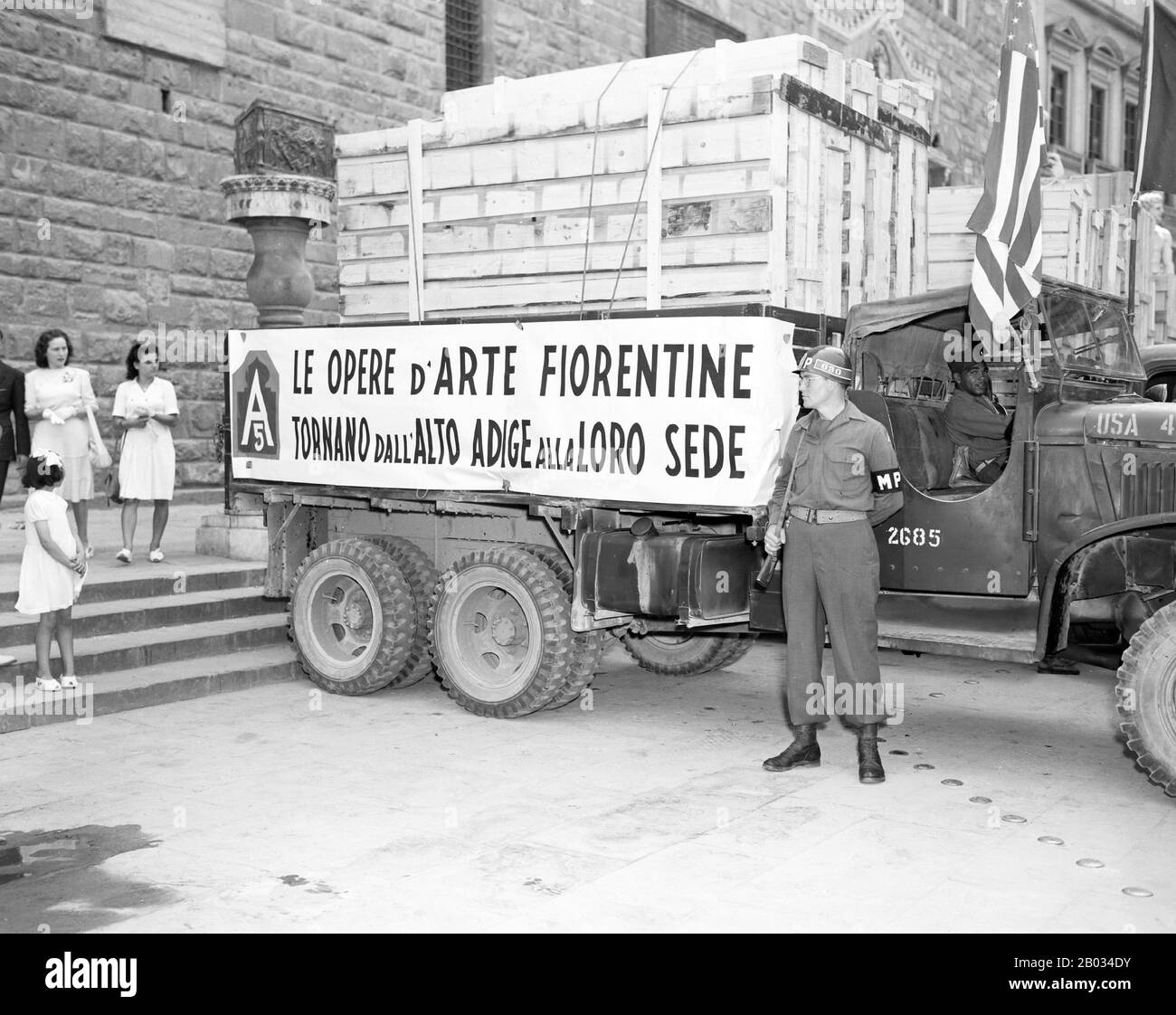 'Nazi plunder' refers to art theft and other items stolen as a result of the organized looting of European countries during the time of the Third Reich by agents acting on behalf of the ruling Nazi Party of Germany. Plundering occurred from 1933 until the end of World War II, although most plunder was acquired during the war. In addition to gold, silver and currency, cultural items of great significance were stolen, including paintings, ceramics, books, and religious treasures. Although most of these items were recovered by agents of the Monuments, Fine Arts, and Archives program (MFAA), aff Stock Photohttps://www.alamy.com/image-license-details/?v=1https://www.alamy.com/nazi-plunder-refers-to-art-theft-and-other-items-stolen-as-a-result-of-the-organized-looting-of-european-countries-during-the-time-of-the-third-reich-by-agents-acting-on-behalf-of-the-ruling-nazi-party-of-germany-plundering-occurred-from-1933-until-the-end-of-world-war-ii-although-most-plunder-was-acquired-during-the-war-in-addition-to-gold-silver-and-currency-cultural-items-of-great-significance-were-stolen-including-paintings-ceramics-books-and-religious-treasures-although-most-of-these-items-were-recovered-by-agents-of-the-monuments-fine-arts-and-archives-program-mfaa-aff-image344276743.html
'Nazi plunder' refers to art theft and other items stolen as a result of the organized looting of European countries during the time of the Third Reich by agents acting on behalf of the ruling Nazi Party of Germany. Plundering occurred from 1933 until the end of World War II, although most plunder was acquired during the war. In addition to gold, silver and currency, cultural items of great significance were stolen, including paintings, ceramics, books, and religious treasures. Although most of these items were recovered by agents of the Monuments, Fine Arts, and Archives program (MFAA), aff Stock Photohttps://www.alamy.com/image-license-details/?v=1https://www.alamy.com/nazi-plunder-refers-to-art-theft-and-other-items-stolen-as-a-result-of-the-organized-looting-of-european-countries-during-the-time-of-the-third-reich-by-agents-acting-on-behalf-of-the-ruling-nazi-party-of-germany-plundering-occurred-from-1933-until-the-end-of-world-war-ii-although-most-plunder-was-acquired-during-the-war-in-addition-to-gold-silver-and-currency-cultural-items-of-great-significance-were-stolen-including-paintings-ceramics-books-and-religious-treasures-although-most-of-these-items-were-recovered-by-agents-of-the-monuments-fine-arts-and-archives-program-mfaa-aff-image344276743.htmlRM2B034DY–'Nazi plunder' refers to art theft and other items stolen as a result of the organized looting of European countries during the time of the Third Reich by agents acting on behalf of the ruling Nazi Party of Germany. Plundering occurred from 1933 until the end of World War II, although most plunder was acquired during the war. In addition to gold, silver and currency, cultural items of great significance were stolen, including paintings, ceramics, books, and religious treasures. Although most of these items were recovered by agents of the Monuments, Fine Arts, and Archives program (MFAA), aff
RF2WKE0DB–Opera house building icon outline vector. Viennese culture. Metropolis cultural landmark
 Ostrich feather fan found in Tutankhamen's tomb. The Treasures of Tutankhamen, The Exhibition Catalogue by I E S Edwards, page 108. Stock Photohttps://www.alamy.com/image-license-details/?v=1https://www.alamy.com/ostrich-feather-fan-found-in-tutankhamens-tomb-the-treasures-of-tutankhamen-the-exhibition-catalogue-by-i-e-s-edwards-page-108-image268793624.html
Ostrich feather fan found in Tutankhamen's tomb. The Treasures of Tutankhamen, The Exhibition Catalogue by I E S Edwards, page 108. Stock Photohttps://www.alamy.com/image-license-details/?v=1https://www.alamy.com/ostrich-feather-fan-found-in-tutankhamens-tomb-the-treasures-of-tutankhamen-the-exhibition-catalogue-by-i-e-s-edwards-page-108-image268793624.htmlRMWH8H08–Ostrich feather fan found in Tutankhamen's tomb. The Treasures of Tutankhamen, The Exhibition Catalogue by I E S Edwards, page 108.
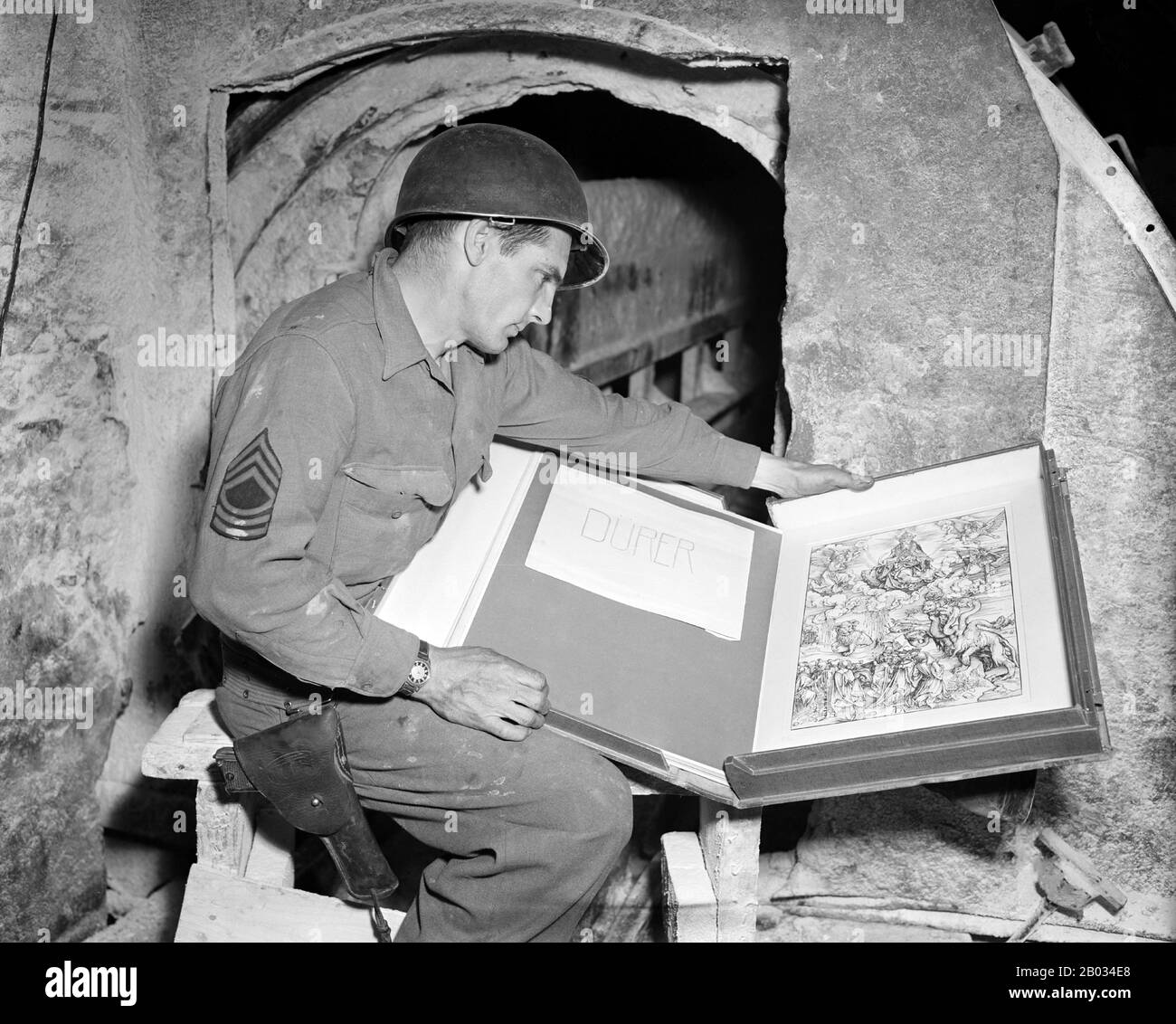 'Nazi plunder' refers to art theft and other items stolen as a result of the organized looting of European countries during the time of the Third Reich by agents acting on behalf of the ruling Nazi Party of Germany. Plundering occurred from 1933 until the end of World War II, although most plunder was acquired during the war. In addition to gold, silver and currency, cultural items of great significance were stolen, including paintings, ceramics, books, and religious treasures. Although most of these items were recovered by agents of the Monuments, Fine Arts, and Archives program (MFAA), aff Stock Photohttps://www.alamy.com/image-license-details/?v=1https://www.alamy.com/nazi-plunder-refers-to-art-theft-and-other-items-stolen-as-a-result-of-the-organized-looting-of-european-countries-during-the-time-of-the-third-reich-by-agents-acting-on-behalf-of-the-ruling-nazi-party-of-germany-plundering-occurred-from-1933-until-the-end-of-world-war-ii-although-most-plunder-was-acquired-during-the-war-in-addition-to-gold-silver-and-currency-cultural-items-of-great-significance-were-stolen-including-paintings-ceramics-books-and-religious-treasures-although-most-of-these-items-were-recovered-by-agents-of-the-monuments-fine-arts-and-archives-program-mfaa-aff-image344276752.html
'Nazi plunder' refers to art theft and other items stolen as a result of the organized looting of European countries during the time of the Third Reich by agents acting on behalf of the ruling Nazi Party of Germany. Plundering occurred from 1933 until the end of World War II, although most plunder was acquired during the war. In addition to gold, silver and currency, cultural items of great significance were stolen, including paintings, ceramics, books, and religious treasures. Although most of these items were recovered by agents of the Monuments, Fine Arts, and Archives program (MFAA), aff Stock Photohttps://www.alamy.com/image-license-details/?v=1https://www.alamy.com/nazi-plunder-refers-to-art-theft-and-other-items-stolen-as-a-result-of-the-organized-looting-of-european-countries-during-the-time-of-the-third-reich-by-agents-acting-on-behalf-of-the-ruling-nazi-party-of-germany-plundering-occurred-from-1933-until-the-end-of-world-war-ii-although-most-plunder-was-acquired-during-the-war-in-addition-to-gold-silver-and-currency-cultural-items-of-great-significance-were-stolen-including-paintings-ceramics-books-and-religious-treasures-although-most-of-these-items-were-recovered-by-agents-of-the-monuments-fine-arts-and-archives-program-mfaa-aff-image344276752.htmlRM2B034E8–'Nazi plunder' refers to art theft and other items stolen as a result of the organized looting of European countries during the time of the Third Reich by agents acting on behalf of the ruling Nazi Party of Germany. Plundering occurred from 1933 until the end of World War II, although most plunder was acquired during the war. In addition to gold, silver and currency, cultural items of great significance were stolen, including paintings, ceramics, books, and religious treasures. Although most of these items were recovered by agents of the Monuments, Fine Arts, and Archives program (MFAA), aff
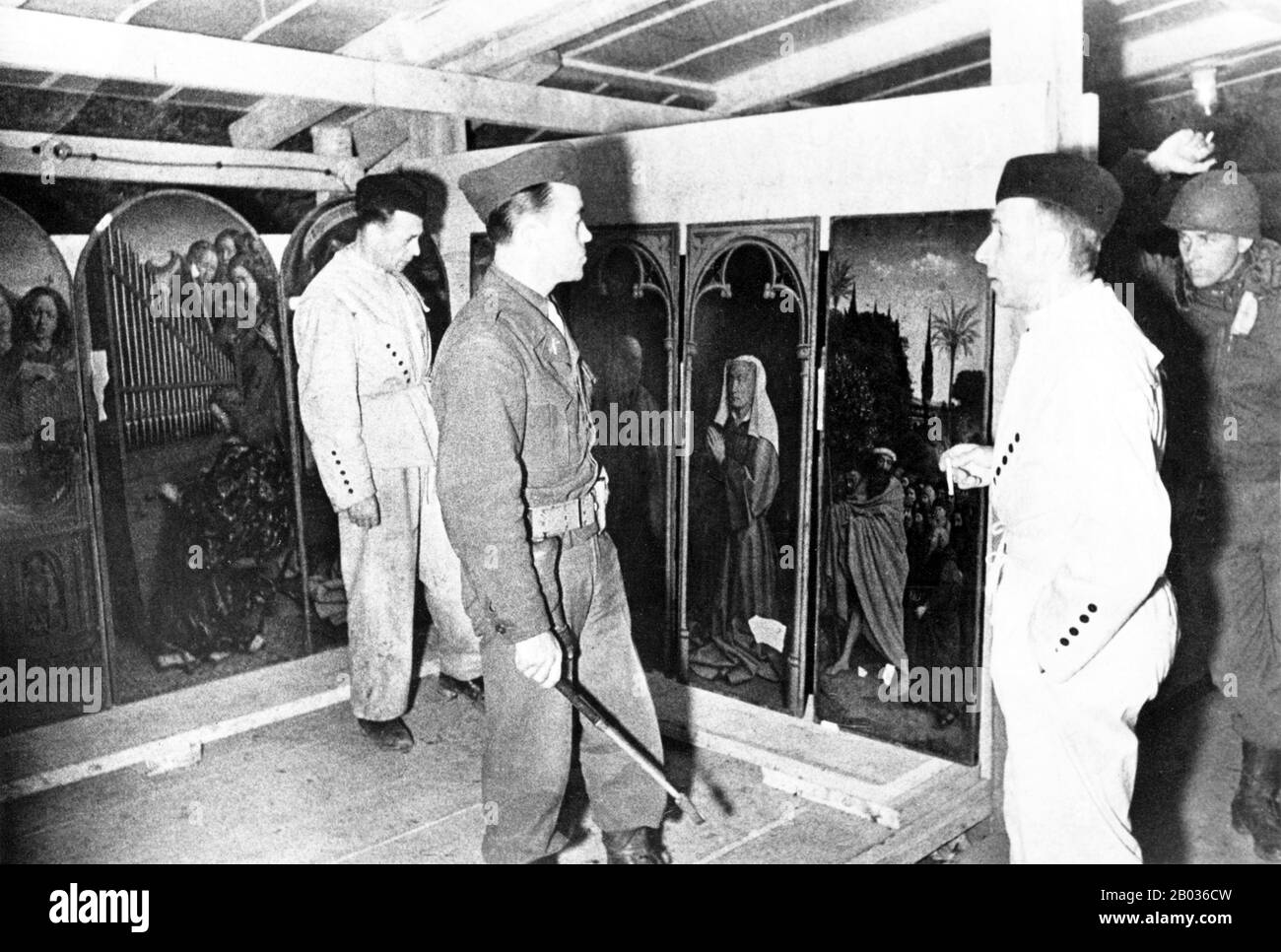 'Nazi plunder' refers to art theft and other items stolen as a result of the organized looting of European countries during the time of the Third Reich by agents acting on behalf of the ruling Nazi Party of Germany. Plundering occurred from 1933 until the end of World War II, although most plunder was acquired during the war. In addition to gold, silver and currency, cultural items of great significance were stolen, including paintings, ceramics, books, and religious treasures. Although most of these items were recovered by agents of the Monuments, Fine Arts, and Archives program (MFAA), affe Stock Photohttps://www.alamy.com/image-license-details/?v=1https://www.alamy.com/nazi-plunder-refers-to-art-theft-and-other-items-stolen-as-a-result-of-the-organized-looting-of-european-countries-during-the-time-of-the-third-reich-by-agents-acting-on-behalf-of-the-ruling-nazi-party-of-germany-plundering-occurred-from-1933-until-the-end-of-world-war-ii-although-most-plunder-was-acquired-during-the-war-in-addition-to-gold-silver-and-currency-cultural-items-of-great-significance-were-stolen-including-paintings-ceramics-books-and-religious-treasures-although-most-of-these-items-were-recovered-by-agents-of-the-monuments-fine-arts-and-archives-program-mfaa-affe-image344278281.html
'Nazi plunder' refers to art theft and other items stolen as a result of the organized looting of European countries during the time of the Third Reich by agents acting on behalf of the ruling Nazi Party of Germany. Plundering occurred from 1933 until the end of World War II, although most plunder was acquired during the war. In addition to gold, silver and currency, cultural items of great significance were stolen, including paintings, ceramics, books, and religious treasures. Although most of these items were recovered by agents of the Monuments, Fine Arts, and Archives program (MFAA), affe Stock Photohttps://www.alamy.com/image-license-details/?v=1https://www.alamy.com/nazi-plunder-refers-to-art-theft-and-other-items-stolen-as-a-result-of-the-organized-looting-of-european-countries-during-the-time-of-the-third-reich-by-agents-acting-on-behalf-of-the-ruling-nazi-party-of-germany-plundering-occurred-from-1933-until-the-end-of-world-war-ii-although-most-plunder-was-acquired-during-the-war-in-addition-to-gold-silver-and-currency-cultural-items-of-great-significance-were-stolen-including-paintings-ceramics-books-and-religious-treasures-although-most-of-these-items-were-recovered-by-agents-of-the-monuments-fine-arts-and-archives-program-mfaa-affe-image344278281.htmlRM2B036CW–'Nazi plunder' refers to art theft and other items stolen as a result of the organized looting of European countries during the time of the Third Reich by agents acting on behalf of the ruling Nazi Party of Germany. Plundering occurred from 1933 until the end of World War II, although most plunder was acquired during the war. In addition to gold, silver and currency, cultural items of great significance were stolen, including paintings, ceramics, books, and religious treasures. Although most of these items were recovered by agents of the Monuments, Fine Arts, and Archives program (MFAA), affe
RF2WKDYRB–Vienna majestic city icon outline vector. Viennese landmarks. Cultural antique architecture
 Ostrich feather fan found in Tutankhamen's tomb. The Treasures of Tutankhamen, The Exhibition Catalogue by I E S Edwards, page 108. Stock Photohttps://www.alamy.com/image-license-details/?v=1https://www.alamy.com/ostrich-feather-fan-found-in-tutankhamens-tomb-the-treasures-of-tutankhamen-the-exhibition-catalogue-by-i-e-s-edwards-page-108-image268793618.html
Ostrich feather fan found in Tutankhamen's tomb. The Treasures of Tutankhamen, The Exhibition Catalogue by I E S Edwards, page 108. Stock Photohttps://www.alamy.com/image-license-details/?v=1https://www.alamy.com/ostrich-feather-fan-found-in-tutankhamens-tomb-the-treasures-of-tutankhamen-the-exhibition-catalogue-by-i-e-s-edwards-page-108-image268793618.htmlRMWH8H02–Ostrich feather fan found in Tutankhamen's tomb. The Treasures of Tutankhamen, The Exhibition Catalogue by I E S Edwards, page 108.
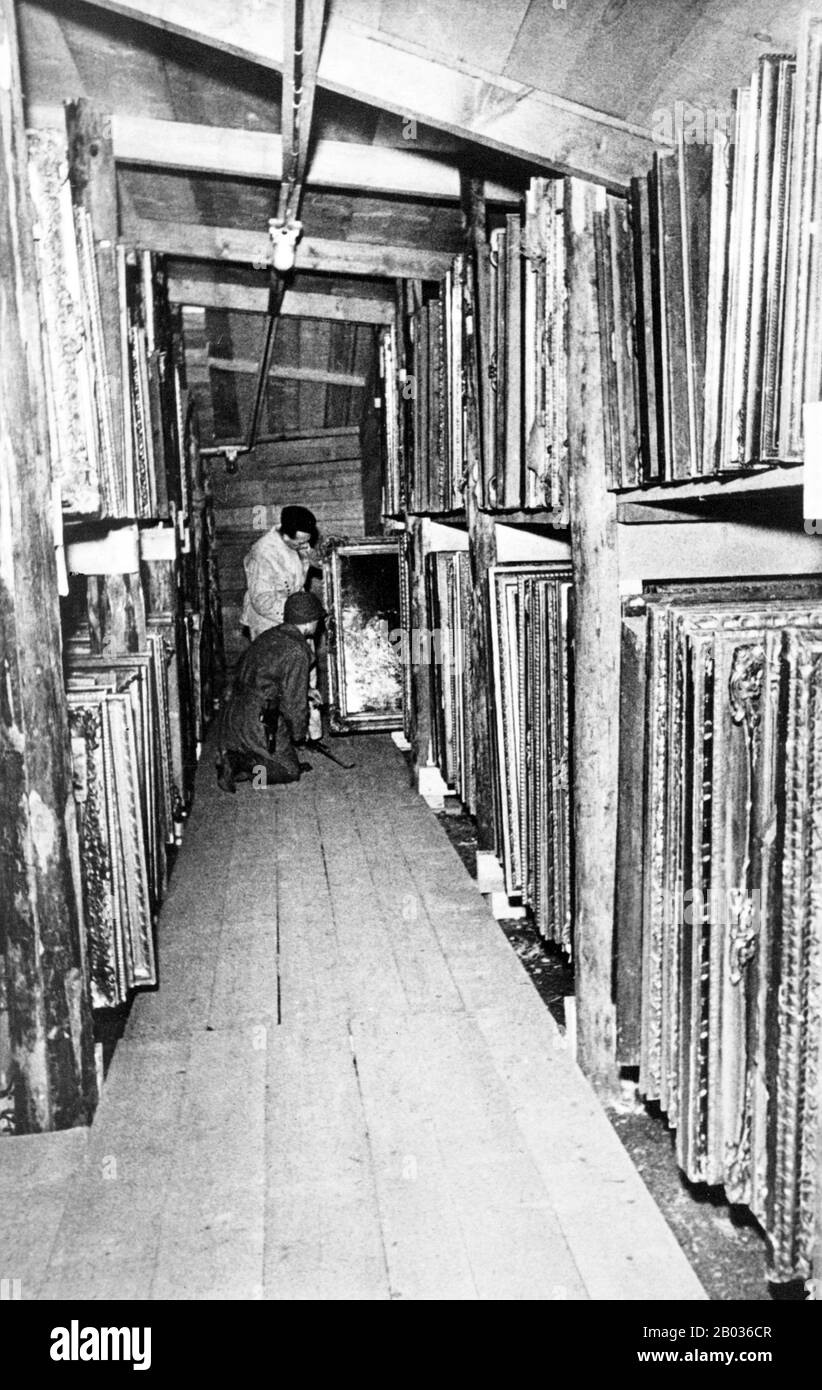 'Nazi plunder' refers to art theft and other items stolen as a result of the organized looting of European countries during the time of the Third Reich by agents acting on behalf of the ruling Nazi Party of Germany. Plundering occurred from 1933 until the end of World War II, although most plunder was acquired during the war. In addition to gold, silver and currency, cultural items of great significance were stolen, including paintings, ceramics, books, and religious treasures. Although most of these items were recovered by agents of the Monuments, Fine Arts, and Archives program (MFAA), affe Stock Photohttps://www.alamy.com/image-license-details/?v=1https://www.alamy.com/nazi-plunder-refers-to-art-theft-and-other-items-stolen-as-a-result-of-the-organized-looting-of-european-countries-during-the-time-of-the-third-reich-by-agents-acting-on-behalf-of-the-ruling-nazi-party-of-germany-plundering-occurred-from-1933-until-the-end-of-world-war-ii-although-most-plunder-was-acquired-during-the-war-in-addition-to-gold-silver-and-currency-cultural-items-of-great-significance-were-stolen-including-paintings-ceramics-books-and-religious-treasures-although-most-of-these-items-were-recovered-by-agents-of-the-monuments-fine-arts-and-archives-program-mfaa-affe-image344278279.html
'Nazi plunder' refers to art theft and other items stolen as a result of the organized looting of European countries during the time of the Third Reich by agents acting on behalf of the ruling Nazi Party of Germany. Plundering occurred from 1933 until the end of World War II, although most plunder was acquired during the war. In addition to gold, silver and currency, cultural items of great significance were stolen, including paintings, ceramics, books, and religious treasures. Although most of these items were recovered by agents of the Monuments, Fine Arts, and Archives program (MFAA), affe Stock Photohttps://www.alamy.com/image-license-details/?v=1https://www.alamy.com/nazi-plunder-refers-to-art-theft-and-other-items-stolen-as-a-result-of-the-organized-looting-of-european-countries-during-the-time-of-the-third-reich-by-agents-acting-on-behalf-of-the-ruling-nazi-party-of-germany-plundering-occurred-from-1933-until-the-end-of-world-war-ii-although-most-plunder-was-acquired-during-the-war-in-addition-to-gold-silver-and-currency-cultural-items-of-great-significance-were-stolen-including-paintings-ceramics-books-and-religious-treasures-although-most-of-these-items-were-recovered-by-agents-of-the-monuments-fine-arts-and-archives-program-mfaa-affe-image344278279.htmlRM2B036CR–'Nazi plunder' refers to art theft and other items stolen as a result of the organized looting of European countries during the time of the Third Reich by agents acting on behalf of the ruling Nazi Party of Germany. Plundering occurred from 1933 until the end of World War II, although most plunder was acquired during the war. In addition to gold, silver and currency, cultural items of great significance were stolen, including paintings, ceramics, books, and religious treasures. Although most of these items were recovered by agents of the Monuments, Fine Arts, and Archives program (MFAA), affe
 'Nazi plunder' refers to art theft and other items stolen as a result of the organized looting of European countries during the time of the Third Reich by agents acting on behalf of the ruling Nazi Party of Germany. Plundering occurred from 1933 until the end of World War II, although most plunder was acquired during the war. In addition to gold, silver and currency, cultural items of great significance were stolen, including paintings, ceramics, books, and religious treasures. Although most of these items were recovered by agents of the Monuments, Fine Arts, and Archives program (MFAA), affe Stock Photohttps://www.alamy.com/image-license-details/?v=1https://www.alamy.com/nazi-plunder-refers-to-art-theft-and-other-items-stolen-as-a-result-of-the-organized-looting-of-european-countries-during-the-time-of-the-third-reich-by-agents-acting-on-behalf-of-the-ruling-nazi-party-of-germany-plundering-occurred-from-1933-until-the-end-of-world-war-ii-although-most-plunder-was-acquired-during-the-war-in-addition-to-gold-silver-and-currency-cultural-items-of-great-significance-were-stolen-including-paintings-ceramics-books-and-religious-treasures-although-most-of-these-items-were-recovered-by-agents-of-the-monuments-fine-arts-and-archives-program-mfaa-affe-image344276778.html
'Nazi plunder' refers to art theft and other items stolen as a result of the organized looting of European countries during the time of the Third Reich by agents acting on behalf of the ruling Nazi Party of Germany. Plundering occurred from 1933 until the end of World War II, although most plunder was acquired during the war. In addition to gold, silver and currency, cultural items of great significance were stolen, including paintings, ceramics, books, and religious treasures. Although most of these items were recovered by agents of the Monuments, Fine Arts, and Archives program (MFAA), affe Stock Photohttps://www.alamy.com/image-license-details/?v=1https://www.alamy.com/nazi-plunder-refers-to-art-theft-and-other-items-stolen-as-a-result-of-the-organized-looting-of-european-countries-during-the-time-of-the-third-reich-by-agents-acting-on-behalf-of-the-ruling-nazi-party-of-germany-plundering-occurred-from-1933-until-the-end-of-world-war-ii-although-most-plunder-was-acquired-during-the-war-in-addition-to-gold-silver-and-currency-cultural-items-of-great-significance-were-stolen-including-paintings-ceramics-books-and-religious-treasures-although-most-of-these-items-were-recovered-by-agents-of-the-monuments-fine-arts-and-archives-program-mfaa-affe-image344276778.htmlRM2B034F6–'Nazi plunder' refers to art theft and other items stolen as a result of the organized looting of European countries during the time of the Third Reich by agents acting on behalf of the ruling Nazi Party of Germany. Plundering occurred from 1933 until the end of World War II, although most plunder was acquired during the war. In addition to gold, silver and currency, cultural items of great significance were stolen, including paintings, ceramics, books, and religious treasures. Although most of these items were recovered by agents of the Monuments, Fine Arts, and Archives program (MFAA), affe
RF2WKE38N–Viennese cathedral icon outline vector. Architectural marvel edifice. Cultural city center
 Model boat found in Tutankhamun's tomb. The Treasures of Tutankhamen, The Exhibition Catalogue by I E S Edwards, page 68. Stock Photohttps://www.alamy.com/image-license-details/?v=1https://www.alamy.com/model-boat-found-in-tutankhamuns-tomb-the-treasures-of-tutankhamen-the-exhibition-catalogue-by-i-e-s-edwards-page-68-image268793663.html
Model boat found in Tutankhamun's tomb. The Treasures of Tutankhamen, The Exhibition Catalogue by I E S Edwards, page 68. Stock Photohttps://www.alamy.com/image-license-details/?v=1https://www.alamy.com/model-boat-found-in-tutankhamuns-tomb-the-treasures-of-tutankhamen-the-exhibition-catalogue-by-i-e-s-edwards-page-68-image268793663.htmlRMWH8H1K–Model boat found in Tutankhamun's tomb. The Treasures of Tutankhamen, The Exhibition Catalogue by I E S Edwards, page 68.
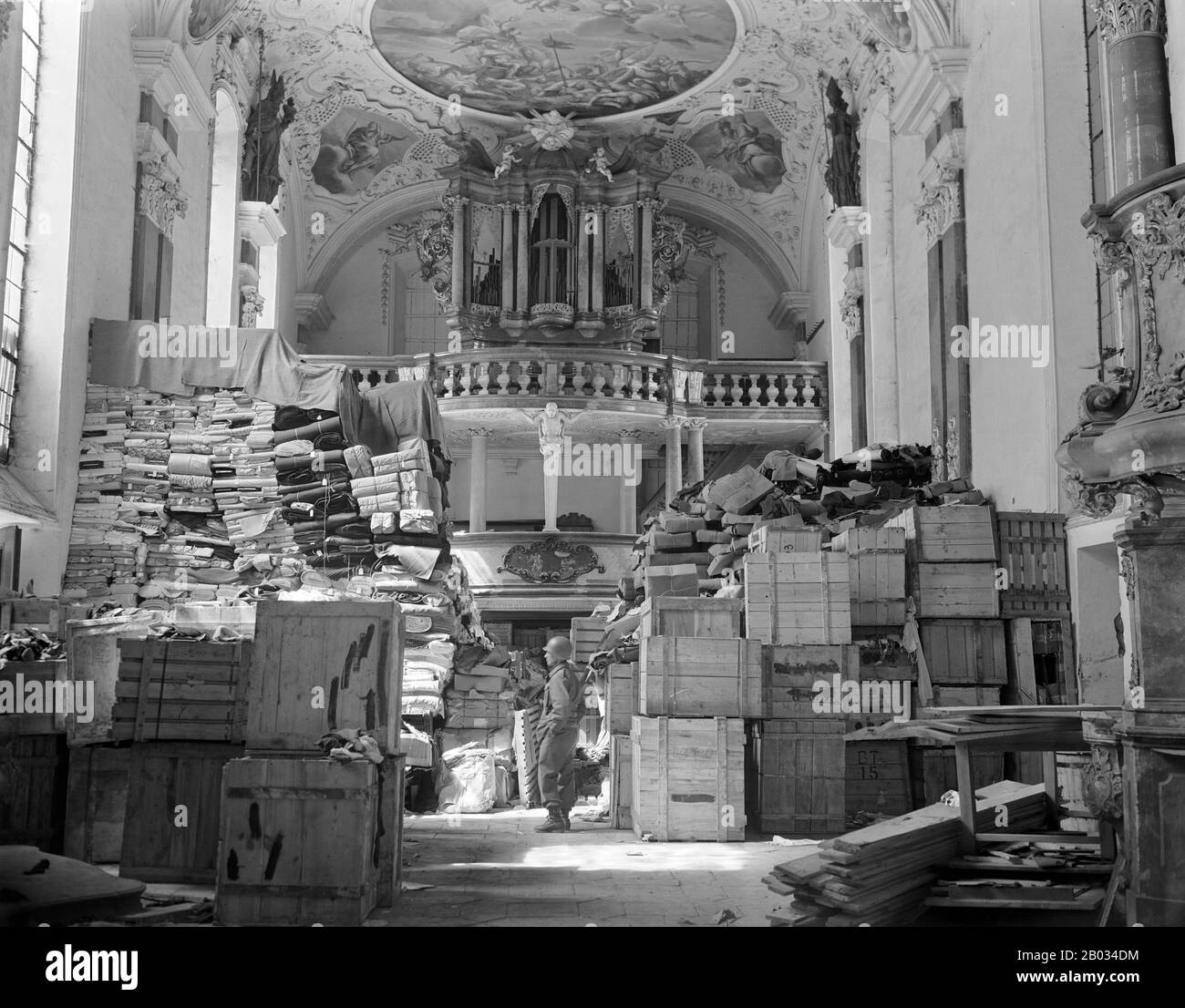 'Nazi plunder' refers to art theft and other items stolen as a result of the organized looting of European countries during the time of the Third Reich by agents acting on behalf of the ruling Nazi Party of Germany. Plundering occurred from 1933 until the end of World War II, although most plunder was acquired during the war. In addition to gold, silver and currency, cultural items of great significance were stolen, including paintings, ceramics, books, and religious treasures. Although most of these items were recovered by agents of the Monuments, Fine Arts, and Archives program (MFAA), aff Stock Photohttps://www.alamy.com/image-license-details/?v=1https://www.alamy.com/nazi-plunder-refers-to-art-theft-and-other-items-stolen-as-a-result-of-the-organized-looting-of-european-countries-during-the-time-of-the-third-reich-by-agents-acting-on-behalf-of-the-ruling-nazi-party-of-germany-plundering-occurred-from-1933-until-the-end-of-world-war-ii-although-most-plunder-was-acquired-during-the-war-in-addition-to-gold-silver-and-currency-cultural-items-of-great-significance-were-stolen-including-paintings-ceramics-books-and-religious-treasures-although-most-of-these-items-were-recovered-by-agents-of-the-monuments-fine-arts-and-archives-program-mfaa-aff-image344276736.html
'Nazi plunder' refers to art theft and other items stolen as a result of the organized looting of European countries during the time of the Third Reich by agents acting on behalf of the ruling Nazi Party of Germany. Plundering occurred from 1933 until the end of World War II, although most plunder was acquired during the war. In addition to gold, silver and currency, cultural items of great significance were stolen, including paintings, ceramics, books, and religious treasures. Although most of these items were recovered by agents of the Monuments, Fine Arts, and Archives program (MFAA), aff Stock Photohttps://www.alamy.com/image-license-details/?v=1https://www.alamy.com/nazi-plunder-refers-to-art-theft-and-other-items-stolen-as-a-result-of-the-organized-looting-of-european-countries-during-the-time-of-the-third-reich-by-agents-acting-on-behalf-of-the-ruling-nazi-party-of-germany-plundering-occurred-from-1933-until-the-end-of-world-war-ii-although-most-plunder-was-acquired-during-the-war-in-addition-to-gold-silver-and-currency-cultural-items-of-great-significance-were-stolen-including-paintings-ceramics-books-and-religious-treasures-although-most-of-these-items-were-recovered-by-agents-of-the-monuments-fine-arts-and-archives-program-mfaa-aff-image344276736.htmlRM2B034DM–'Nazi plunder' refers to art theft and other items stolen as a result of the organized looting of European countries during the time of the Third Reich by agents acting on behalf of the ruling Nazi Party of Germany. Plundering occurred from 1933 until the end of World War II, although most plunder was acquired during the war. In addition to gold, silver and currency, cultural items of great significance were stolen, including paintings, ceramics, books, and religious treasures. Although most of these items were recovered by agents of the Monuments, Fine Arts, and Archives program (MFAA), aff
RF2WKE0KP–Iconic Vienna building icon outline vector. Viennese architecture. Cultural mansion edifice
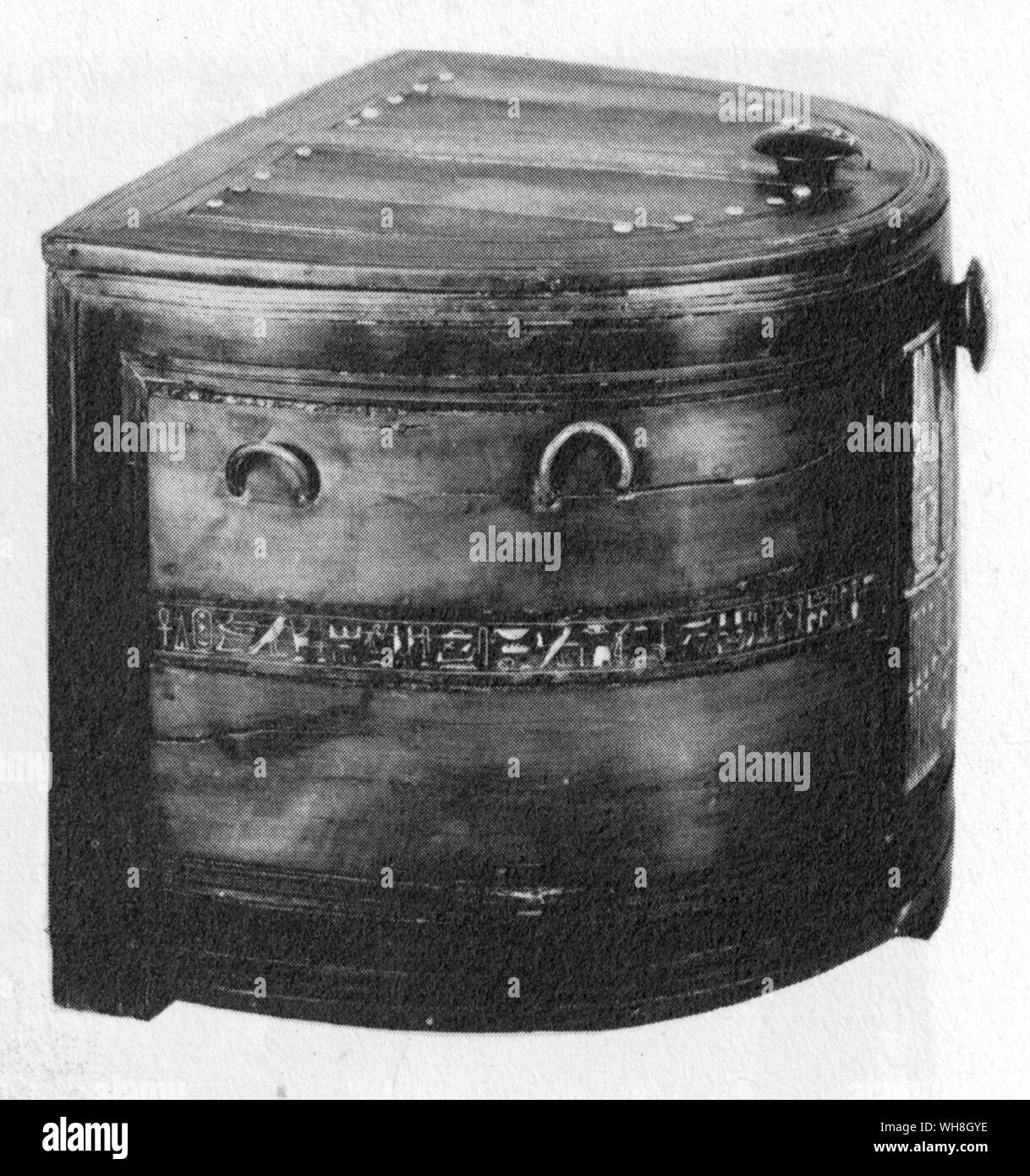 Bow fronted box found in Tutankhamen's tomb. The Treasures of Tutankhamen, The Exhibition Catalogue by I E S Edwards, page 96. Stock Photohttps://www.alamy.com/image-license-details/?v=1https://www.alamy.com/bow-fronted-box-found-in-tutankhamens-tomb-the-treasures-of-tutankhamen-the-exhibition-catalogue-by-i-e-s-edwards-page-96-image268793602.html
Bow fronted box found in Tutankhamen's tomb. The Treasures of Tutankhamen, The Exhibition Catalogue by I E S Edwards, page 96. Stock Photohttps://www.alamy.com/image-license-details/?v=1https://www.alamy.com/bow-fronted-box-found-in-tutankhamens-tomb-the-treasures-of-tutankhamen-the-exhibition-catalogue-by-i-e-s-edwards-page-96-image268793602.htmlRMWH8GYE–Bow fronted box found in Tutankhamen's tomb. The Treasures of Tutankhamen, The Exhibition Catalogue by I E S Edwards, page 96.
RF2WKE10H–Imperial capital icon outline vector. Vienna cultural city. Historical urban architecture
 Bow fronted box found in Tutankhamen's tomb. The Treasures of Tutankhamen, The Exhibition Catalogue by I E S Edwards, page 97. Stock Photohttps://www.alamy.com/image-license-details/?v=1https://www.alamy.com/bow-fronted-box-found-in-tutankhamens-tomb-the-treasures-of-tutankhamen-the-exhibition-catalogue-by-i-e-s-edwards-page-97-image268793629.html
Bow fronted box found in Tutankhamen's tomb. The Treasures of Tutankhamen, The Exhibition Catalogue by I E S Edwards, page 97. Stock Photohttps://www.alamy.com/image-license-details/?v=1https://www.alamy.com/bow-fronted-box-found-in-tutankhamens-tomb-the-treasures-of-tutankhamen-the-exhibition-catalogue-by-i-e-s-edwards-page-97-image268793629.htmlRMWH8H0D–Bow fronted box found in Tutankhamen's tomb. The Treasures of Tutankhamen, The Exhibition Catalogue by I E S Edwards, page 97.
RF2WKDYXP–Viennese tourist spot icon outline vector. Cultural capital heritage. Austrian traditional architecture
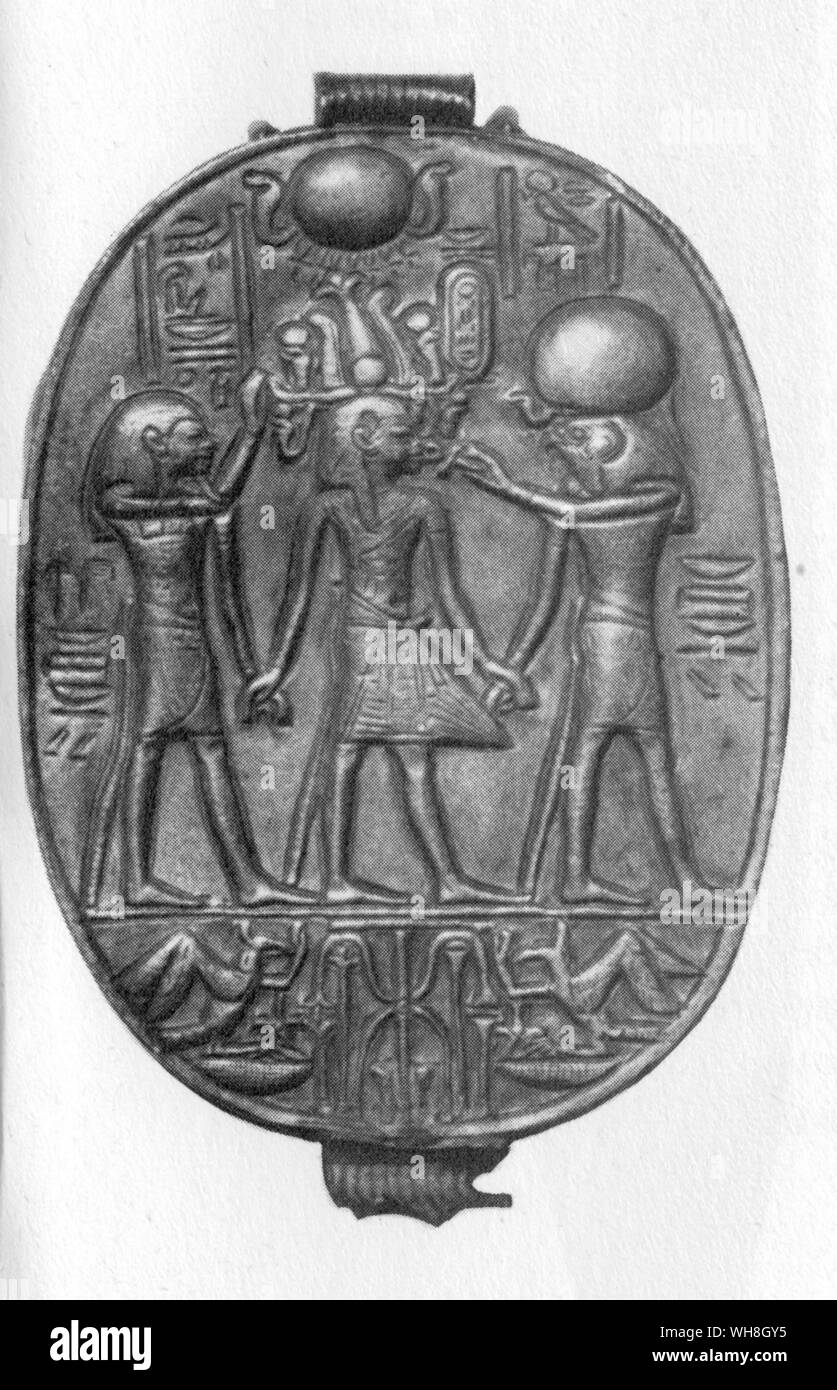 Base of the decorated scarab found in Tutankhamun's tomb. The Treasures of Tutankhamen, The Exhibition Catalogue by I E S Edwards, page 129. Stock Photohttps://www.alamy.com/image-license-details/?v=1https://www.alamy.com/base-of-the-decorated-scarab-found-in-tutankhamuns-tomb-the-treasures-of-tutankhamen-the-exhibition-catalogue-by-i-e-s-edwards-page-129-image268793593.html
Base of the decorated scarab found in Tutankhamun's tomb. The Treasures of Tutankhamen, The Exhibition Catalogue by I E S Edwards, page 129. Stock Photohttps://www.alamy.com/image-license-details/?v=1https://www.alamy.com/base-of-the-decorated-scarab-found-in-tutankhamuns-tomb-the-treasures-of-tutankhamen-the-exhibition-catalogue-by-i-e-s-edwards-page-129-image268793593.htmlRMWH8GY5–Base of the decorated scarab found in Tutankhamun's tomb. The Treasures of Tutankhamen, The Exhibition Catalogue by I E S Edwards, page 129.
RF2WKE2C7–Classical Vienna architecture icon outline vector. Cityscape marvel wonders. Viennese cultural city
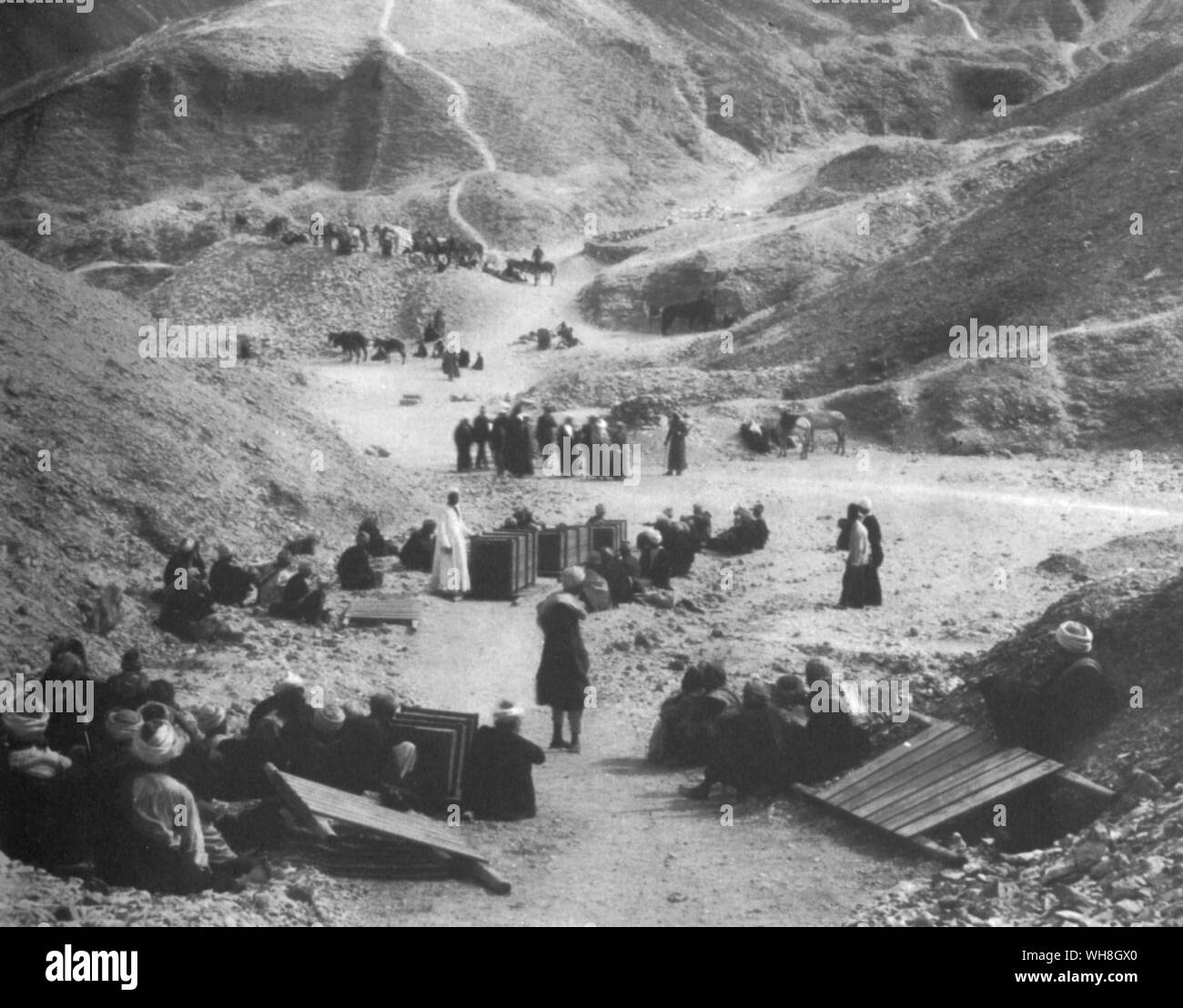 The discovery of the first royal cache at Thebes west, preparations for the removal of the mummies. The Treasures of Tutankhamen, The Exhibition Catalogue by I E S Edwards, page 55. Stock Photohttps://www.alamy.com/image-license-details/?v=1https://www.alamy.com/the-discovery-of-the-first-royal-cache-at-thebes-west-preparations-for-the-removal-of-the-mummies-the-treasures-of-tutankhamen-the-exhibition-catalogue-by-i-e-s-edwards-page-55-image268793560.html
The discovery of the first royal cache at Thebes west, preparations for the removal of the mummies. The Treasures of Tutankhamen, The Exhibition Catalogue by I E S Edwards, page 55. Stock Photohttps://www.alamy.com/image-license-details/?v=1https://www.alamy.com/the-discovery-of-the-first-royal-cache-at-thebes-west-preparations-for-the-removal-of-the-mummies-the-treasures-of-tutankhamen-the-exhibition-catalogue-by-i-e-s-edwards-page-55-image268793560.htmlRMWH8GX0–The discovery of the first royal cache at Thebes west, preparations for the removal of the mummies. The Treasures of Tutankhamen, The Exhibition Catalogue by I E S Edwards, page 55.
RF2WKE0H7–Vienna capital tour icon outline vector. Viennese sightseeing trip. National cultural heritage
 Field laboratory in the tomb of Sethos II, (reigned from 1200-1194BC). The Treasures of Tutankhamen, The Exhibition Catalogue by I E S Edwards, page 39. Stock Photohttps://www.alamy.com/image-license-details/?v=1https://www.alamy.com/field-laboratory-in-the-tomb-of-sethos-ii-reigned-from-1200-1194bc-the-treasures-of-tutankhamen-the-exhibition-catalogue-by-i-e-s-edwards-page-39-image268793685.html
Field laboratory in the tomb of Sethos II, (reigned from 1200-1194BC). The Treasures of Tutankhamen, The Exhibition Catalogue by I E S Edwards, page 39. Stock Photohttps://www.alamy.com/image-license-details/?v=1https://www.alamy.com/field-laboratory-in-the-tomb-of-sethos-ii-reigned-from-1200-1194bc-the-treasures-of-tutankhamen-the-exhibition-catalogue-by-i-e-s-edwards-page-39-image268793685.htmlRMWH8H2D–Field laboratory in the tomb of Sethos II, (reigned from 1200-1194BC). The Treasures of Tutankhamen, The Exhibition Catalogue by I E S Edwards, page 39.
RF2WKE0YT–Vienna masterpiece edifice icon outline vector. Discover cultural city. Viennese palace heritage
 A pottery vessel found in a pit near Tutankhamun's tomb, which contained the material used to embalm the King. The Treasures of Tutankhamen, The Exhibition Catalogue by I E S Edwards, page 32. Stock Photohttps://www.alamy.com/image-license-details/?v=1https://www.alamy.com/a-pottery-vessel-found-in-a-pit-near-tutankhamuns-tomb-which-contained-the-material-used-to-embalm-the-king-the-treasures-of-tutankhamen-the-exhibition-catalogue-by-i-e-s-edwards-page-32-image268793704.html
A pottery vessel found in a pit near Tutankhamun's tomb, which contained the material used to embalm the King. The Treasures of Tutankhamen, The Exhibition Catalogue by I E S Edwards, page 32. Stock Photohttps://www.alamy.com/image-license-details/?v=1https://www.alamy.com/a-pottery-vessel-found-in-a-pit-near-tutankhamuns-tomb-which-contained-the-material-used-to-embalm-the-king-the-treasures-of-tutankhamen-the-exhibition-catalogue-by-i-e-s-edwards-page-32-image268793704.htmlRMWH8H34–A pottery vessel found in a pit near Tutankhamun's tomb, which contained the material used to embalm the King. The Treasures of Tutankhamen, The Exhibition Catalogue by I E S Edwards, page 32.
RF2WKDYJ6–Vienna metropolis icon outline vector. Belvedere palace heritage. Center cultural vista building
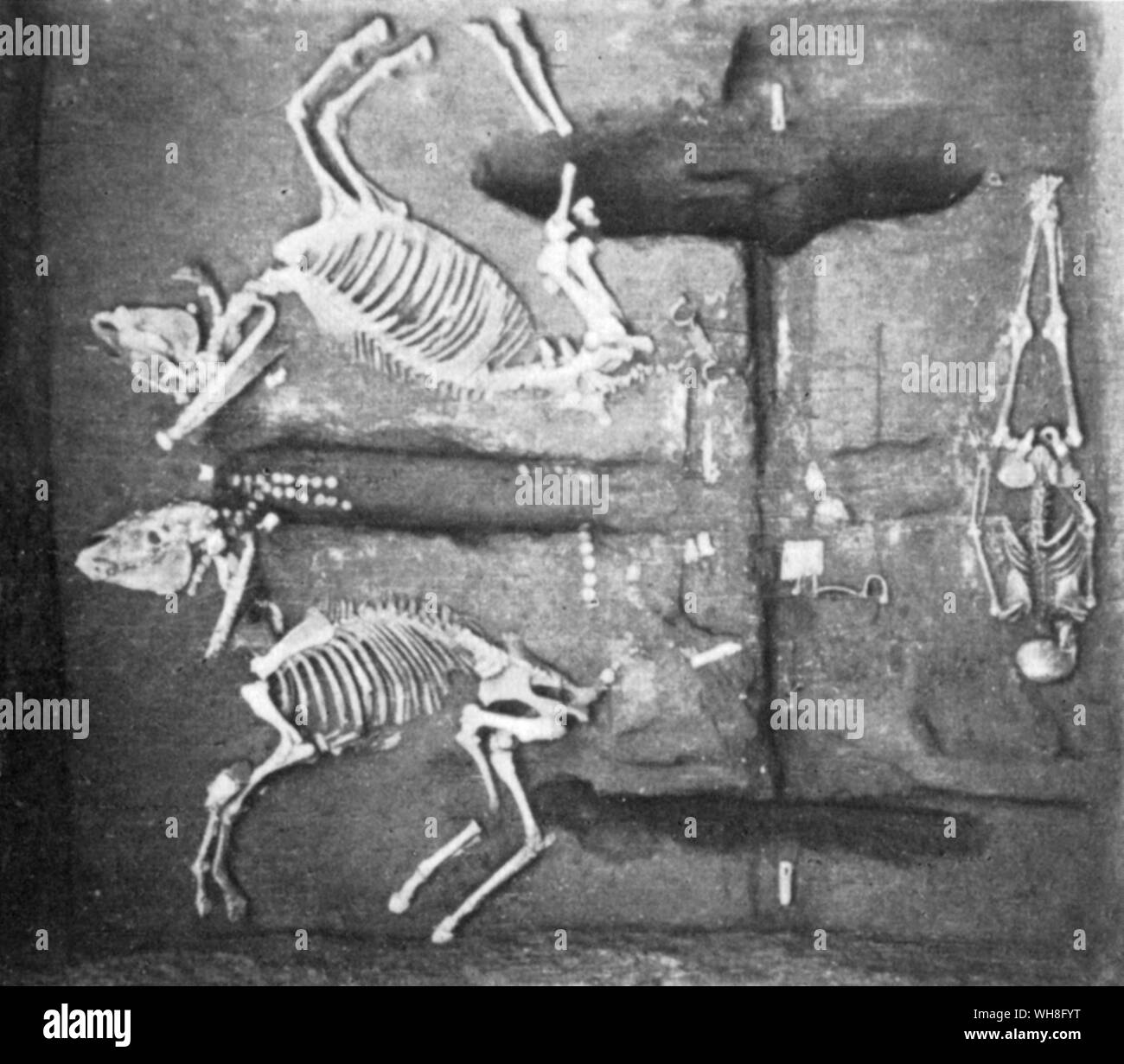 An excavated chariot burial with the two horses and the driver. Shang Dynasty (ca. 1600 BC - ca. 1046 BC) . The Treasures and Dynasties of China, page 19. Stock Photohttps://www.alamy.com/image-license-details/?v=1https://www.alamy.com/an-excavated-chariot-burial-with-the-two-horses-and-the-driver-shang-dynasty-ca-1600-bc-ca-1046-bc-the-treasures-and-dynasties-of-china-page-19-image268792828.html
An excavated chariot burial with the two horses and the driver. Shang Dynasty (ca. 1600 BC - ca. 1046 BC) . The Treasures and Dynasties of China, page 19. Stock Photohttps://www.alamy.com/image-license-details/?v=1https://www.alamy.com/an-excavated-chariot-burial-with-the-two-horses-and-the-driver-shang-dynasty-ca-1600-bc-ca-1046-bc-the-treasures-and-dynasties-of-china-page-19-image268792828.htmlRMWH8FYT–An excavated chariot burial with the two horses and the driver. Shang Dynasty (ca. 1600 BC - ca. 1046 BC) . The Treasures and Dynasties of China, page 19.
RF2WKE7DJ–Vienna sightseeing icon outline vector. Traditional edifice exploration. Austrian old architecture